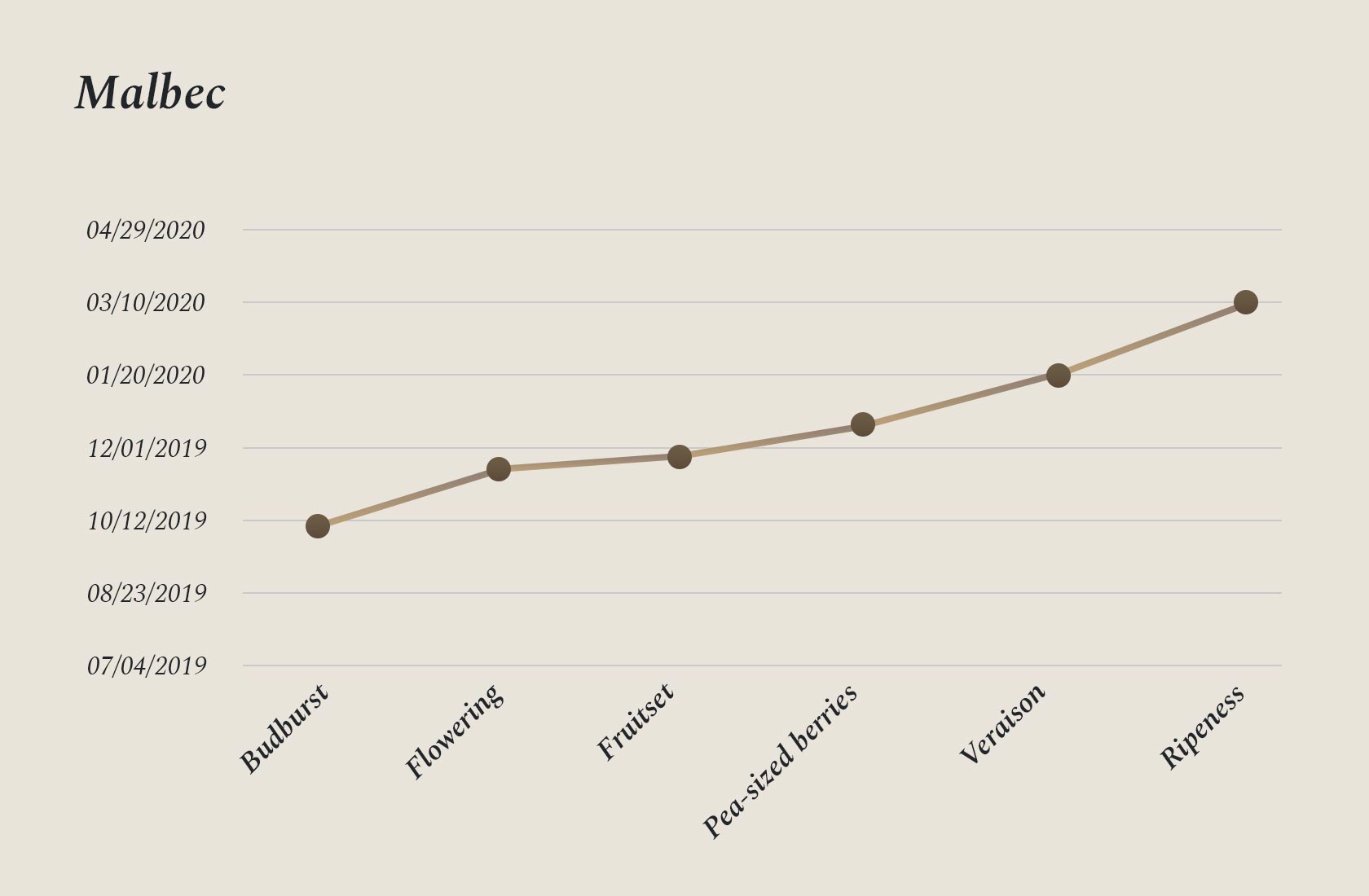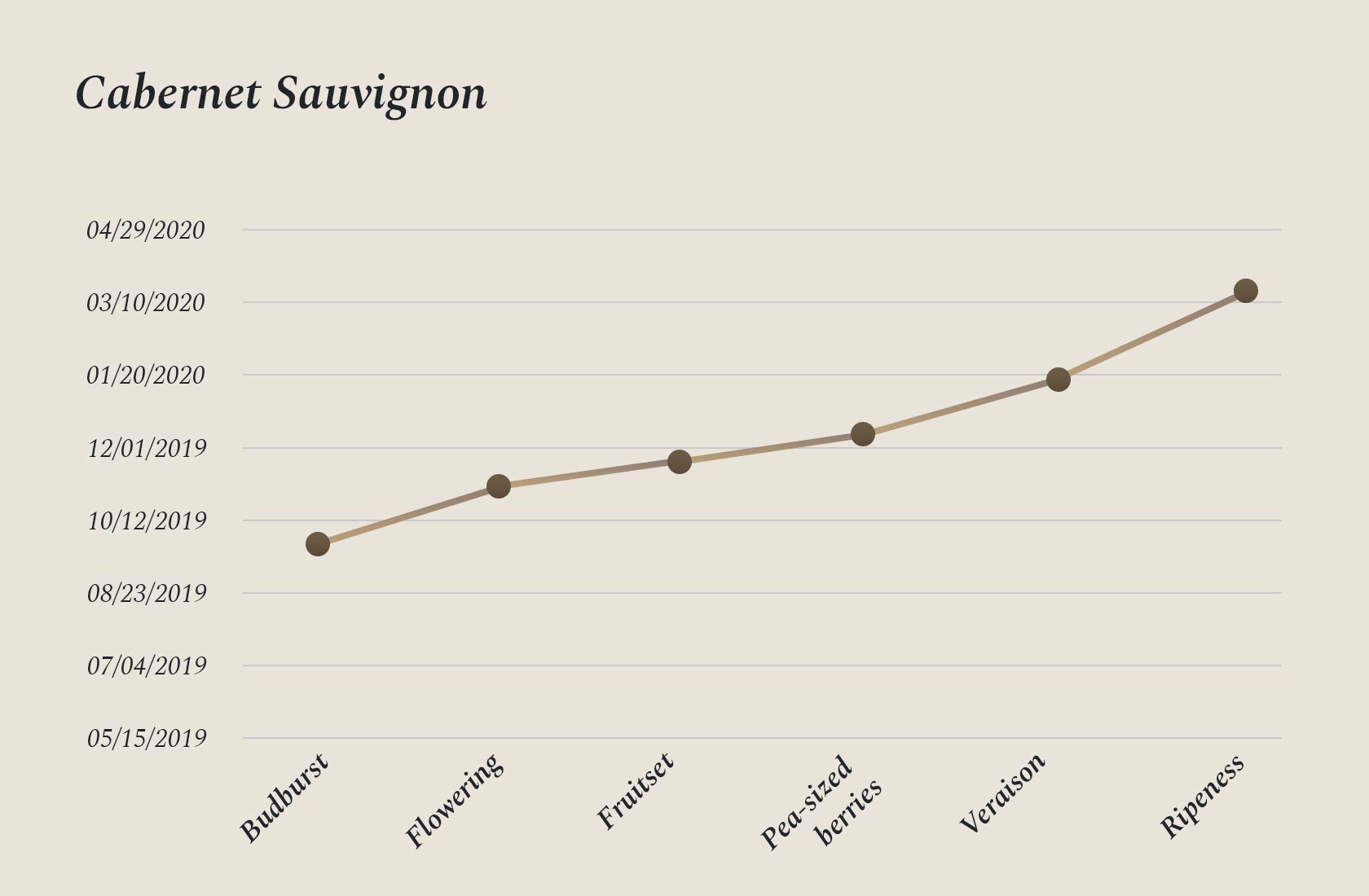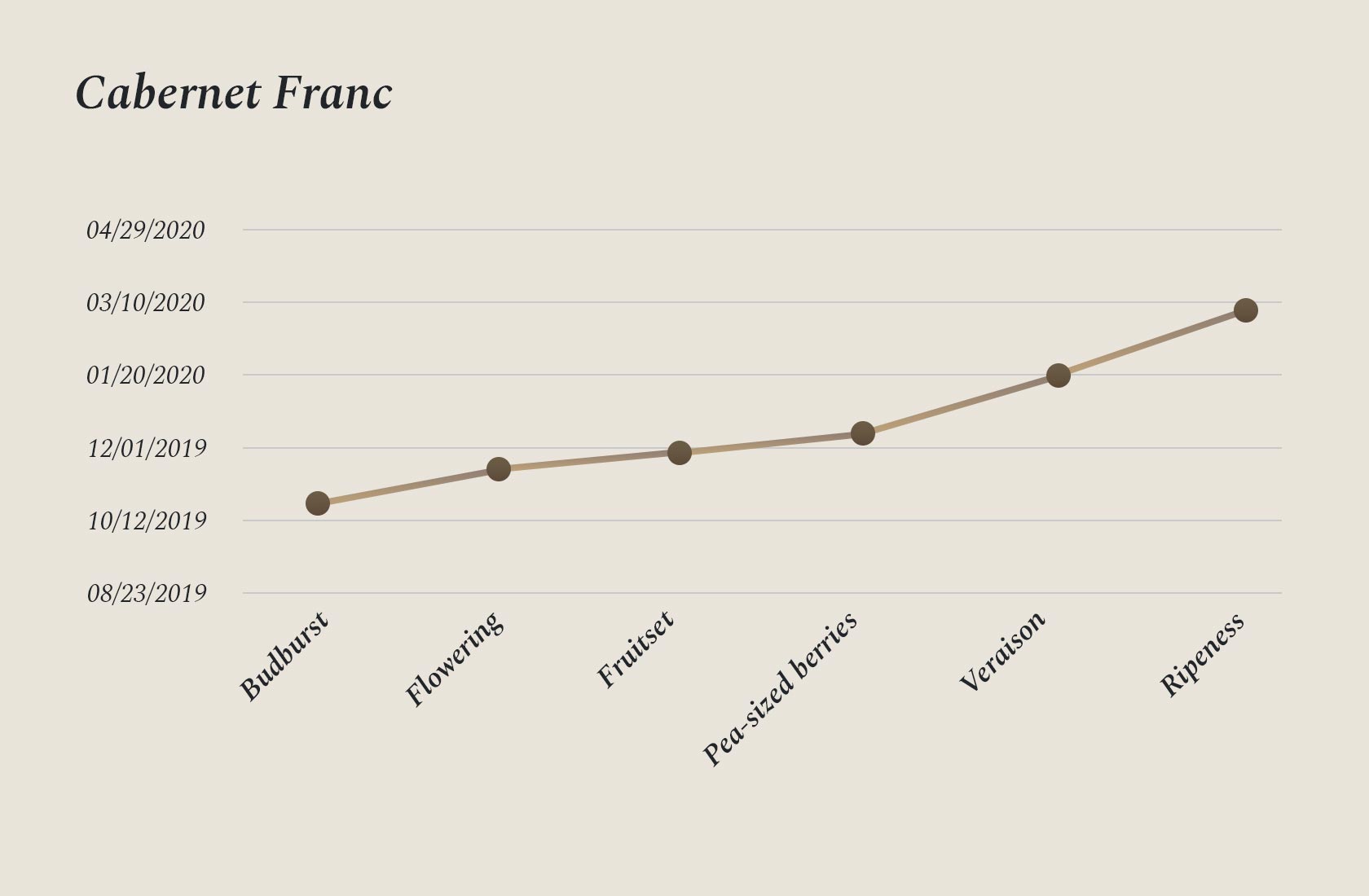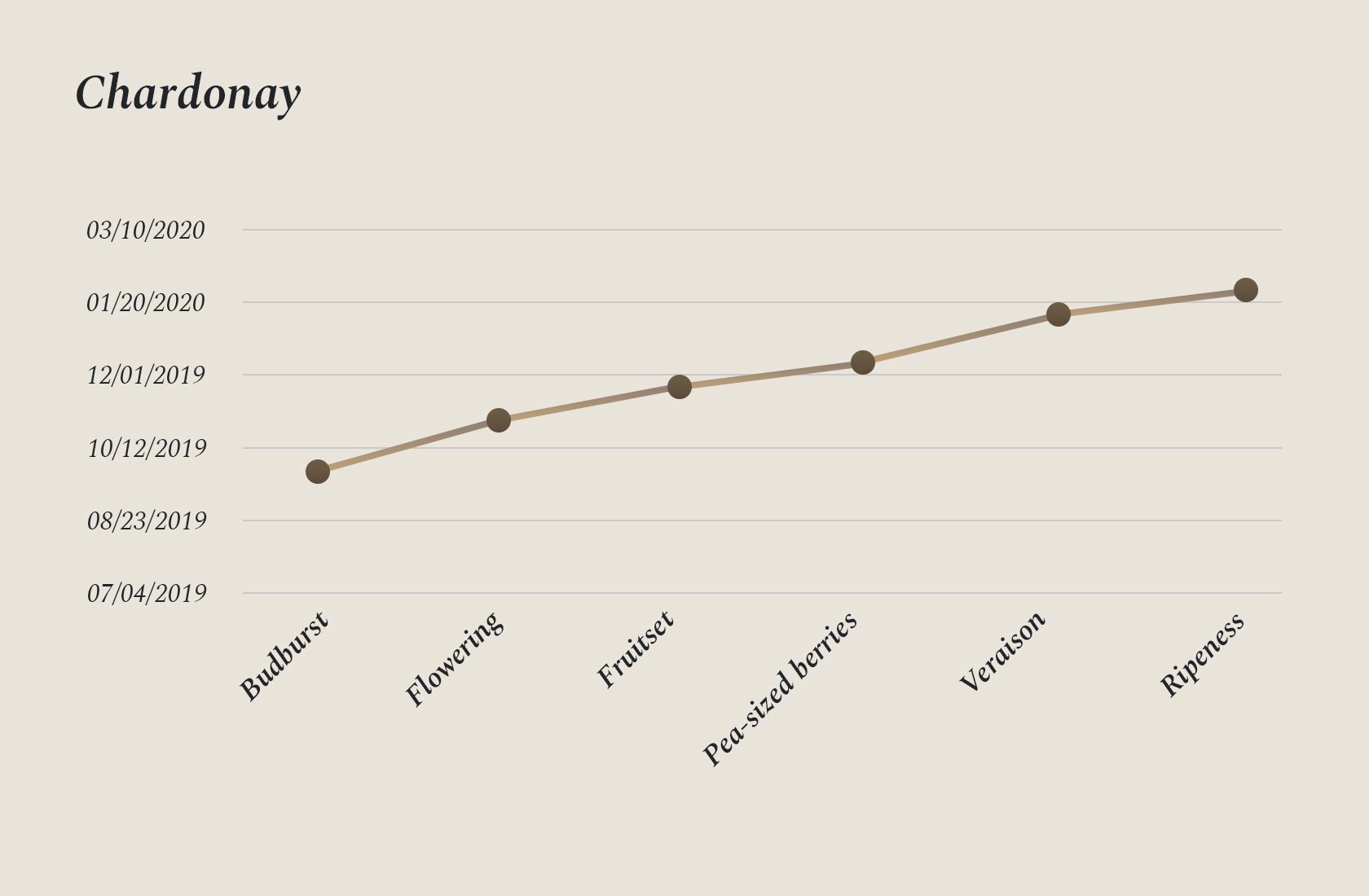Climate
Our estate has an exceptional continental climate, unique in that it gives us ageworthy wines with elegant tannins..
Valle de Uco Climate
Our climate
A vineyard located at an exceptional latitude with a dry continental climate and a wet season that runs from December to February..
This area is classified as Winkler II or III, similar to some of the world's best terroirs and ideal for crafting wines of the highest quality..
The significant temperature differences ensure the grapes ripen slowly and this in turn favours the development of polyphenolic compounds, such as tannins and anthocyanins, at a 4 to 1 ratio. This is the ideal ratio for producing ageworthy fine wines, where the tannins form the backbone..
The thermal range results in the berries producing a significant amount of malic acid, which is the precursor to the malolactic fermentation (MLF) for our red wines and some of our whites. The MLF process ensures that the wines have elegant, natural acidity that is nicely integrated and it also adds length to the finish. These are characteristic features of wines from cool areas such as the Uco Valley..
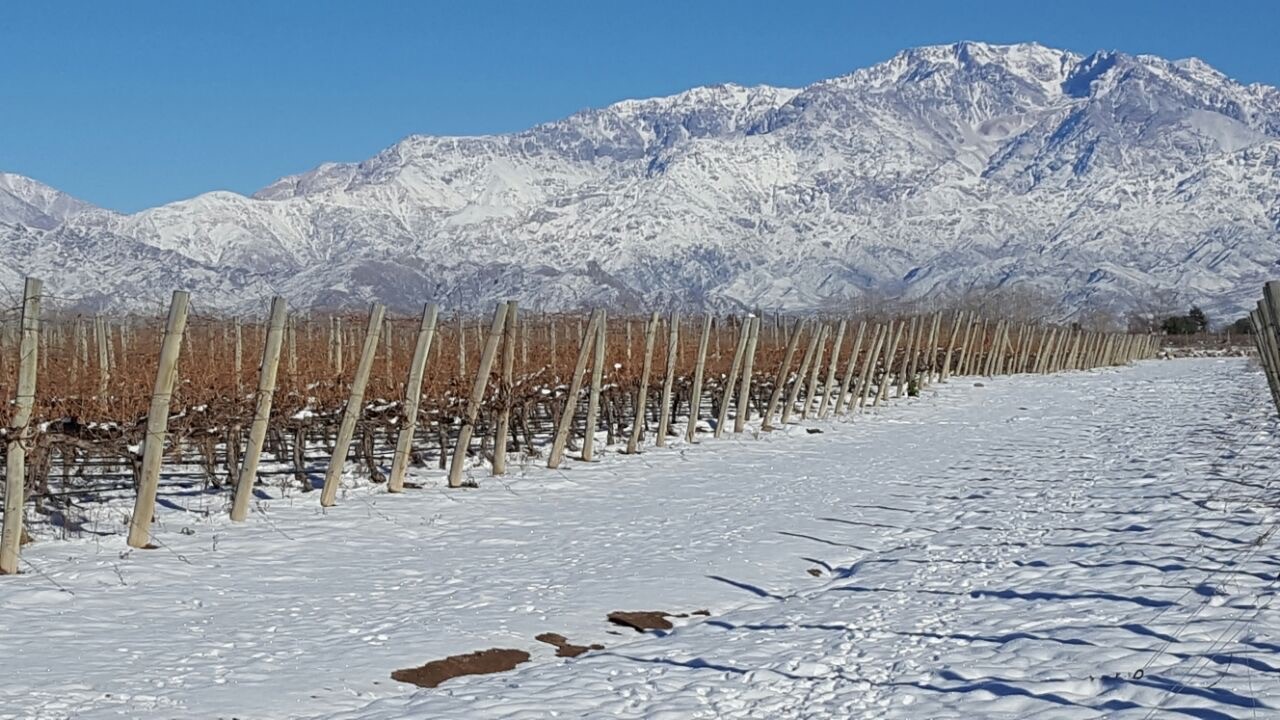
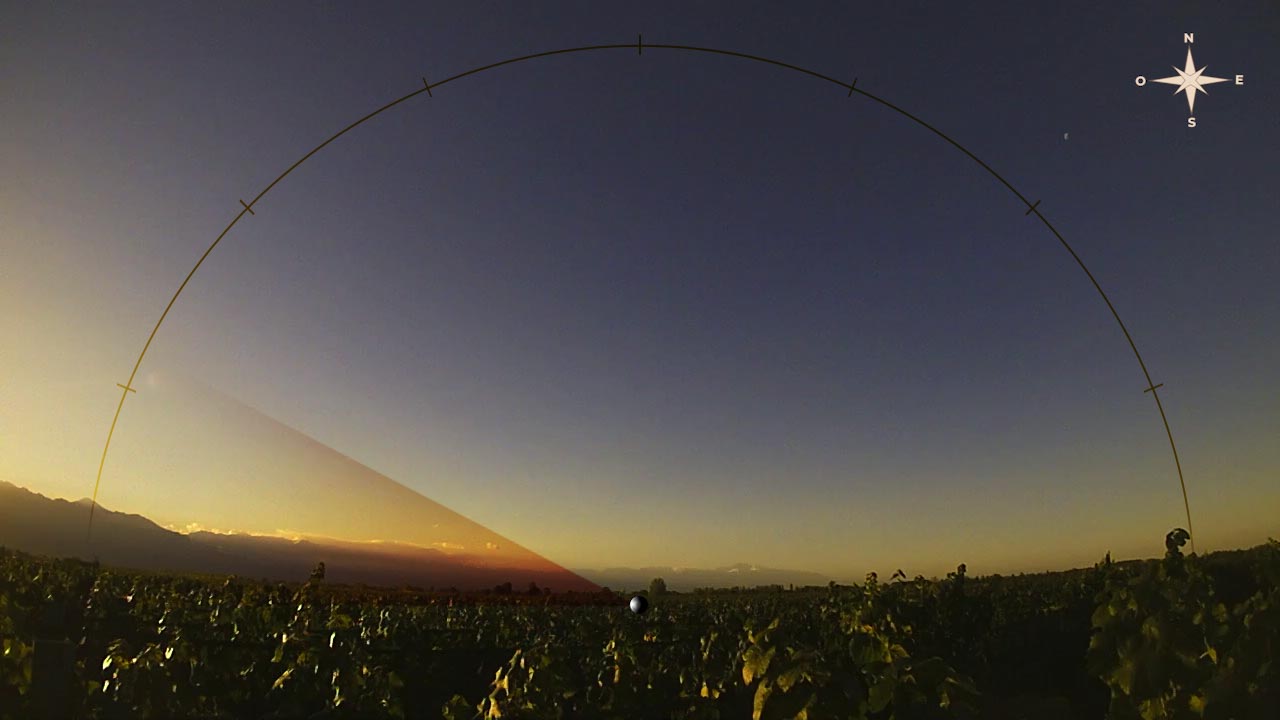
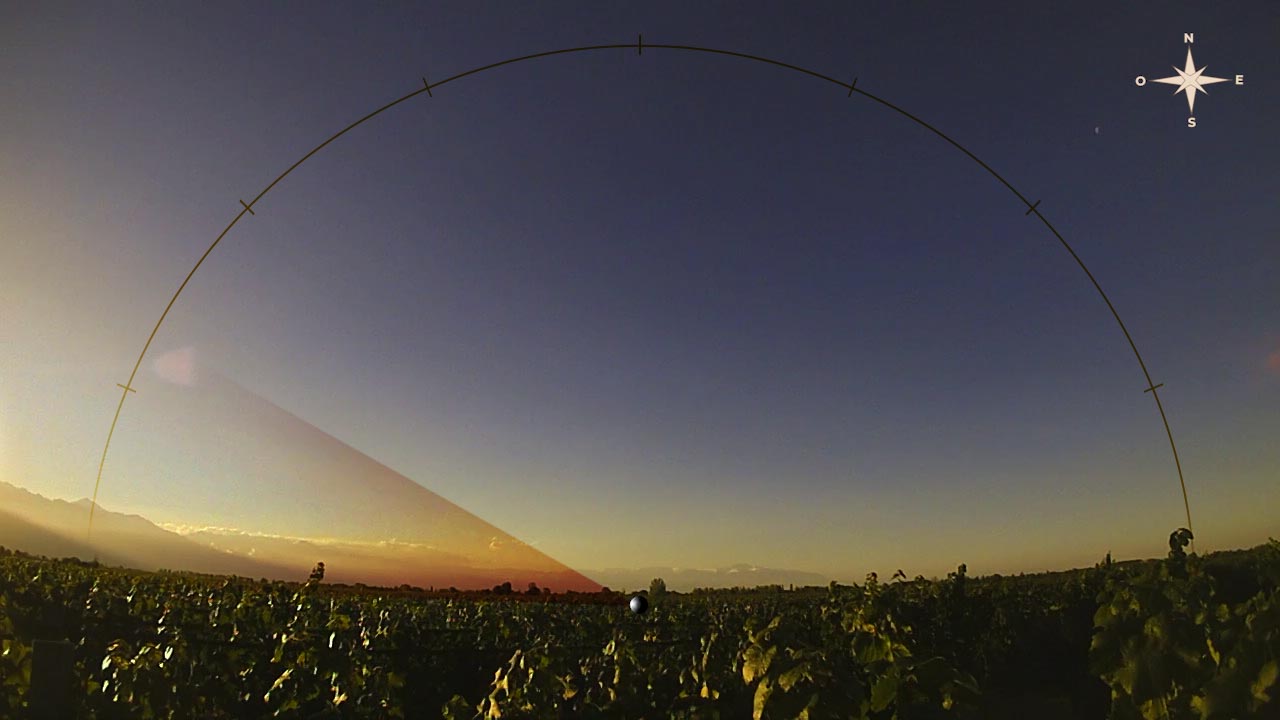

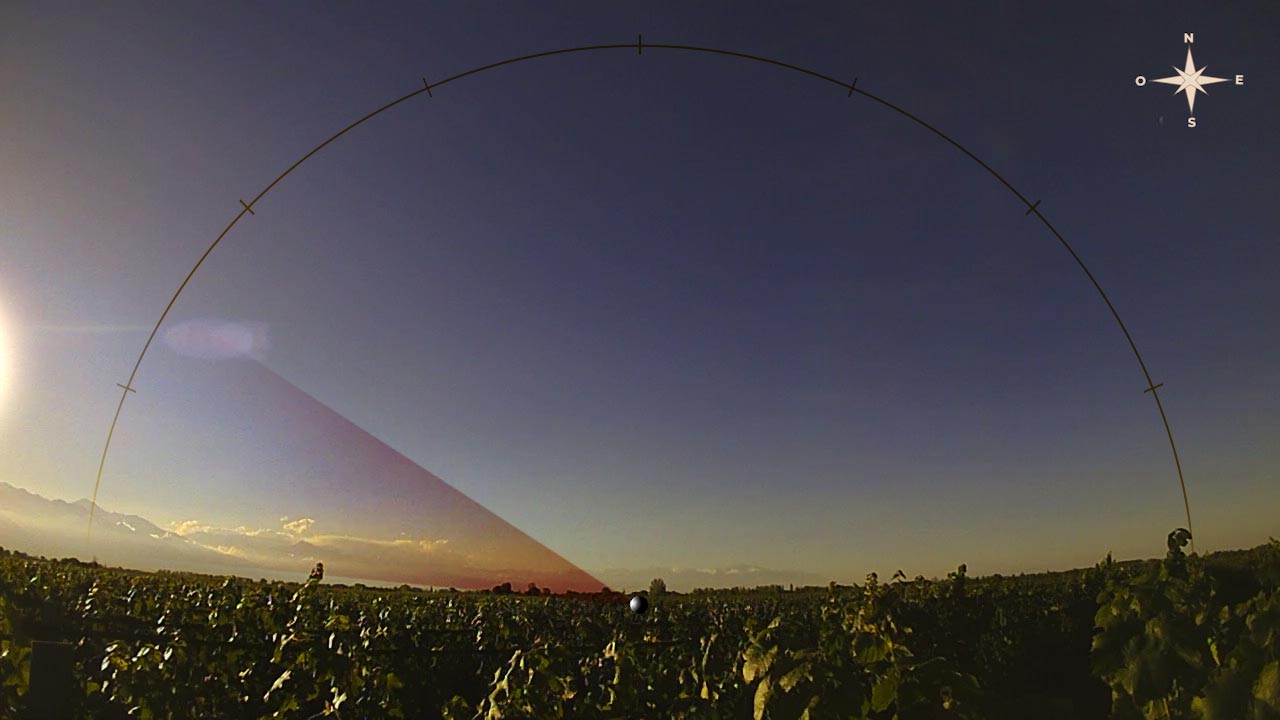
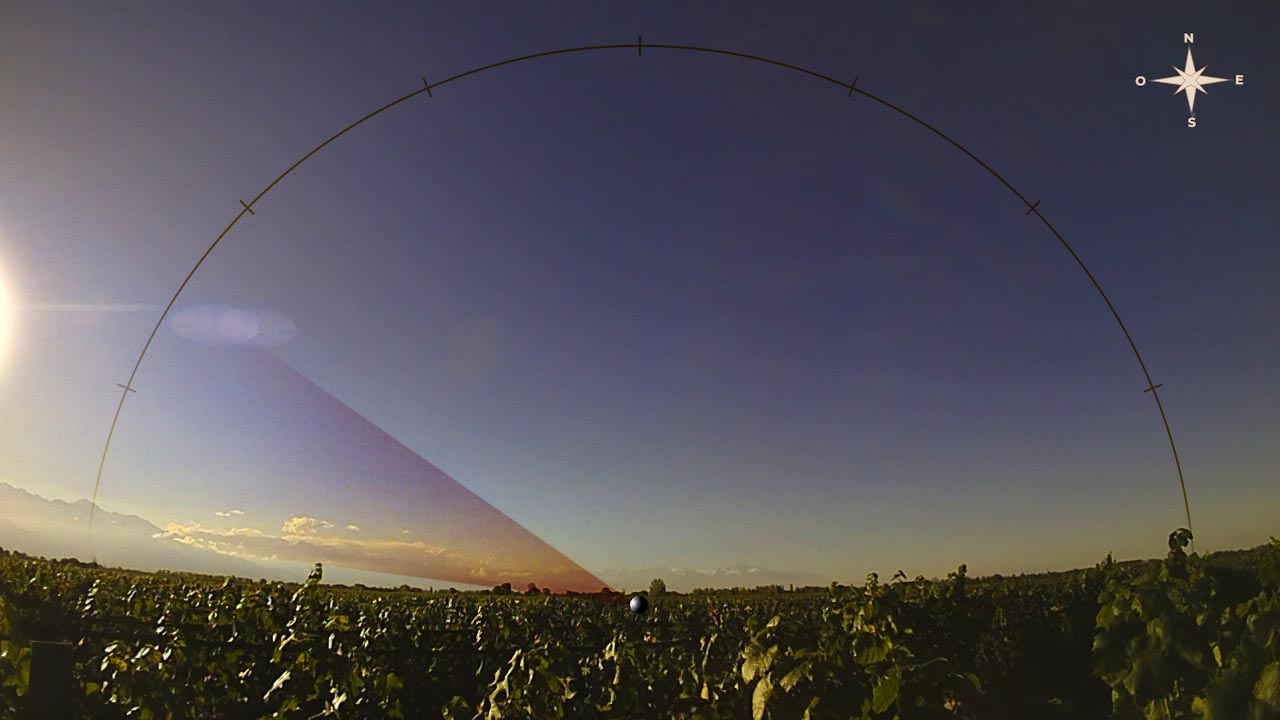
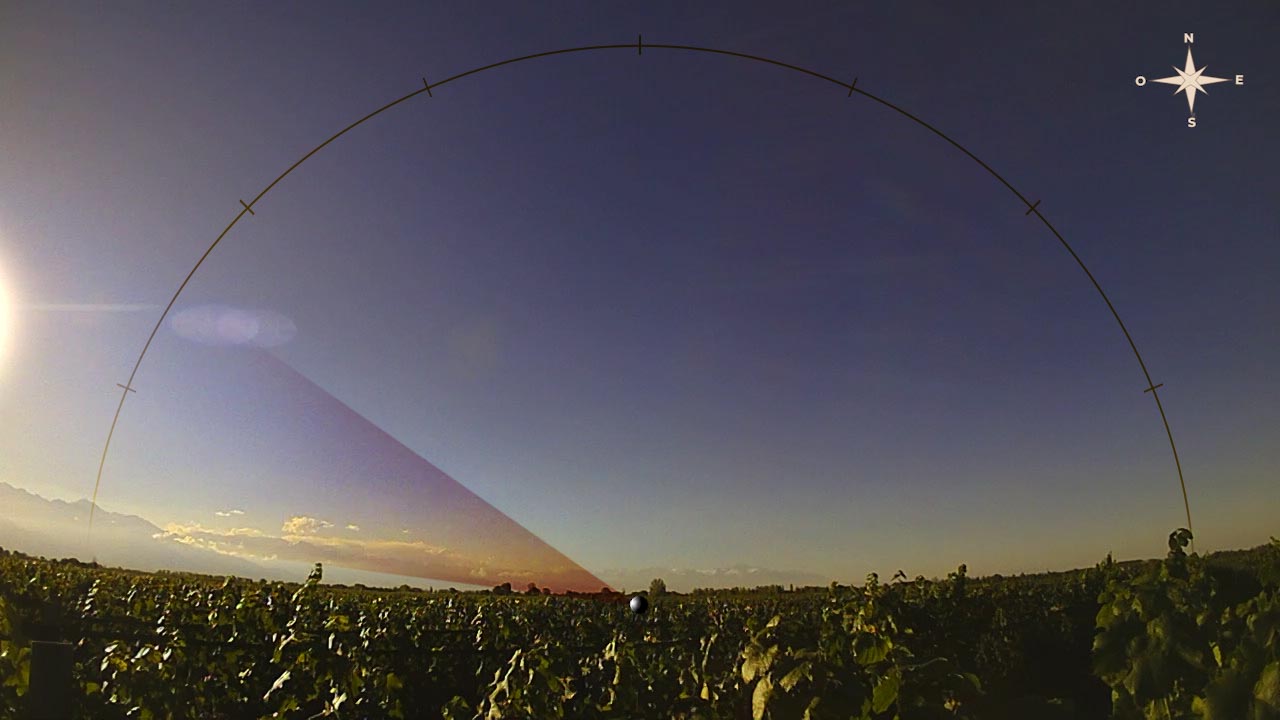
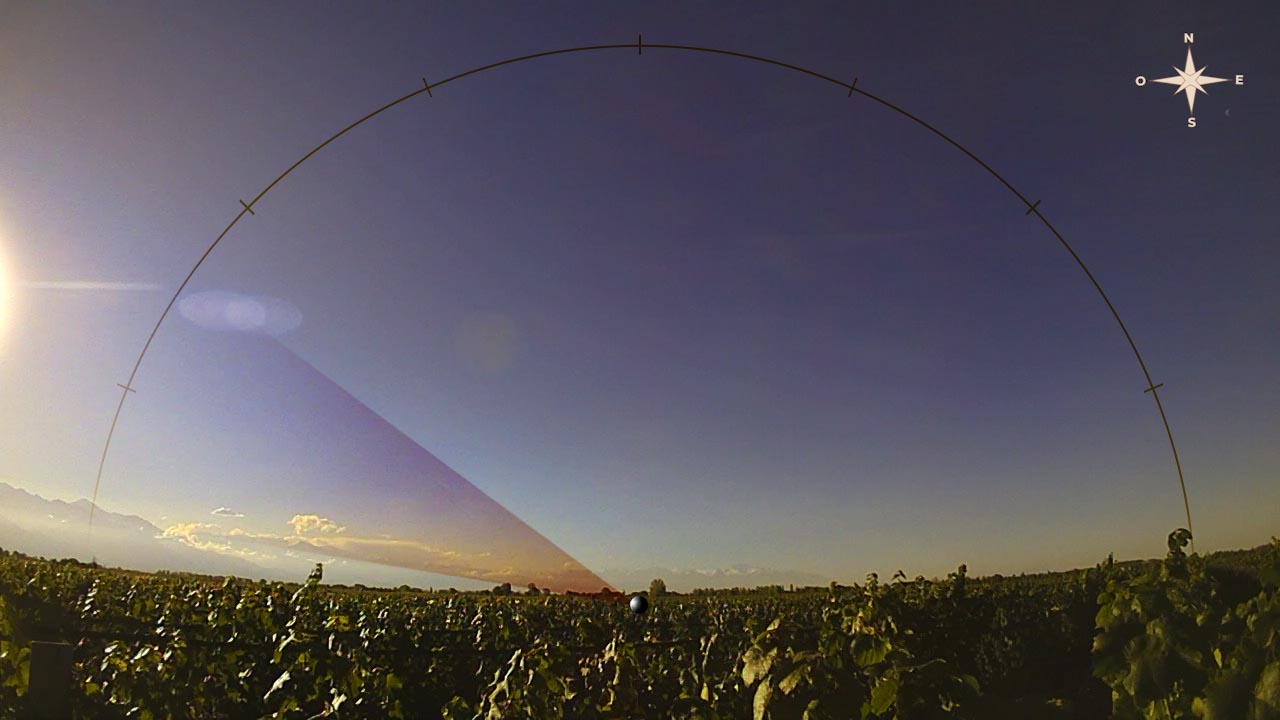
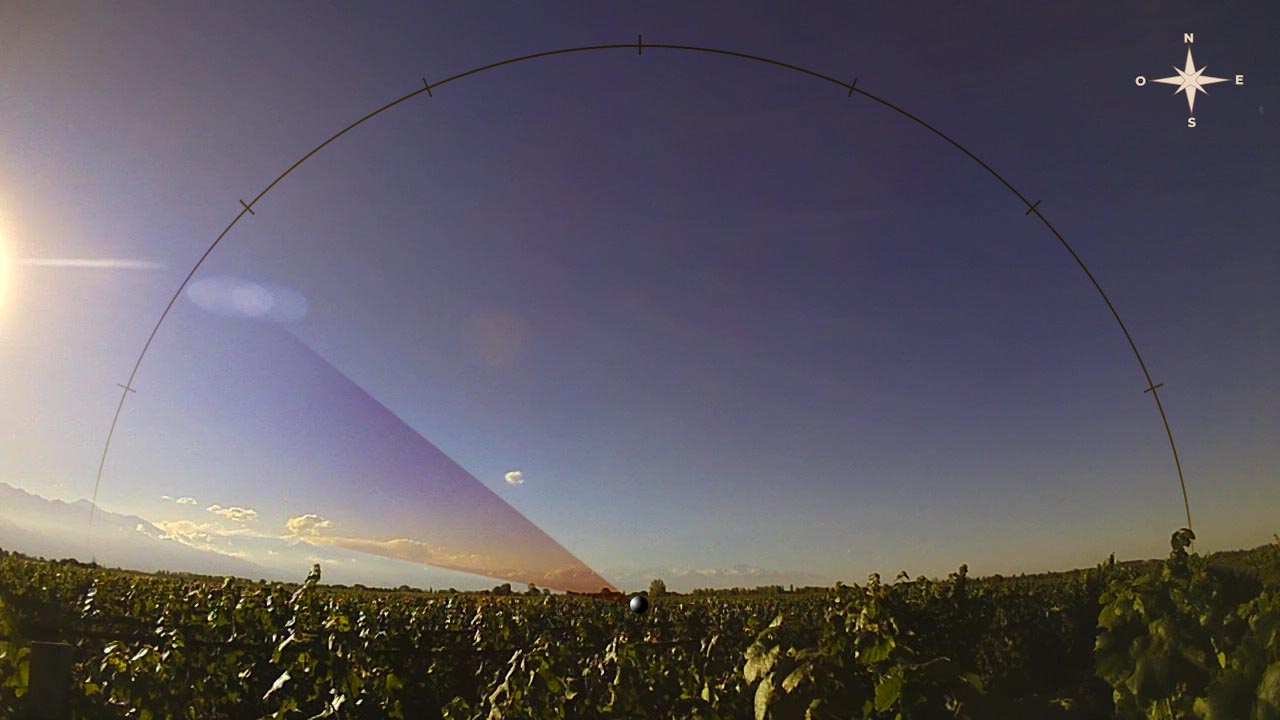

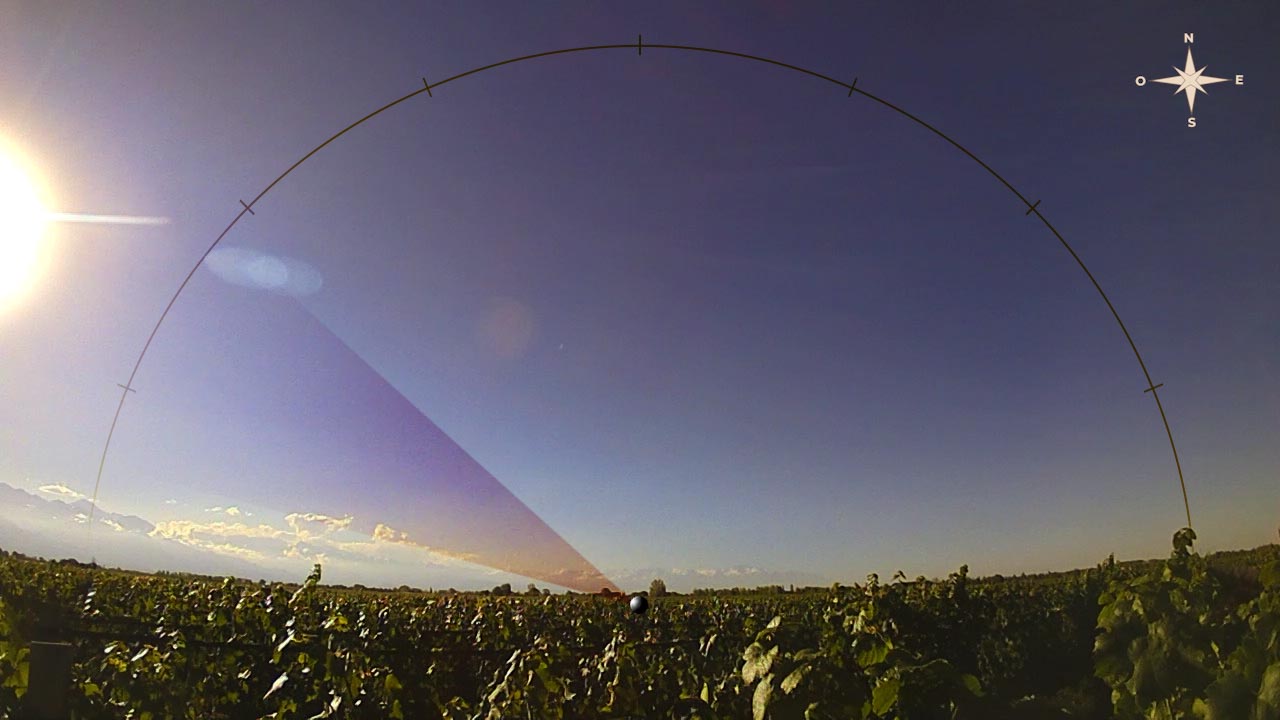

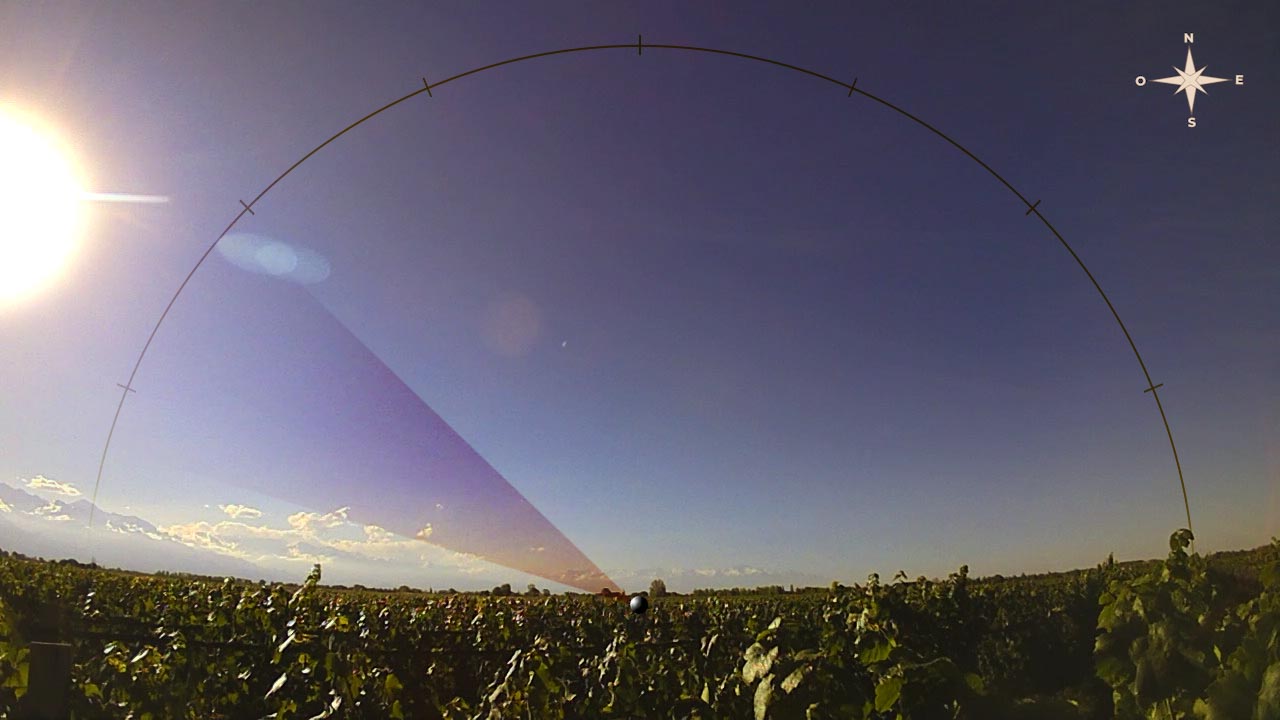
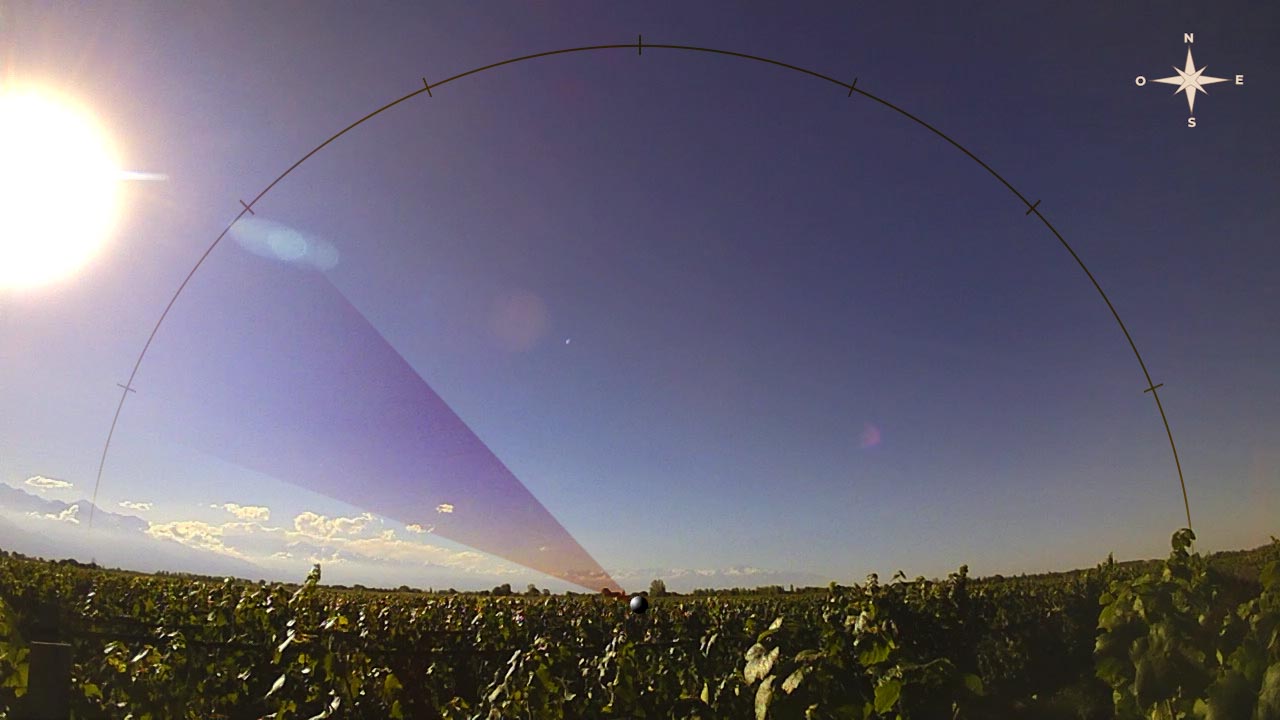
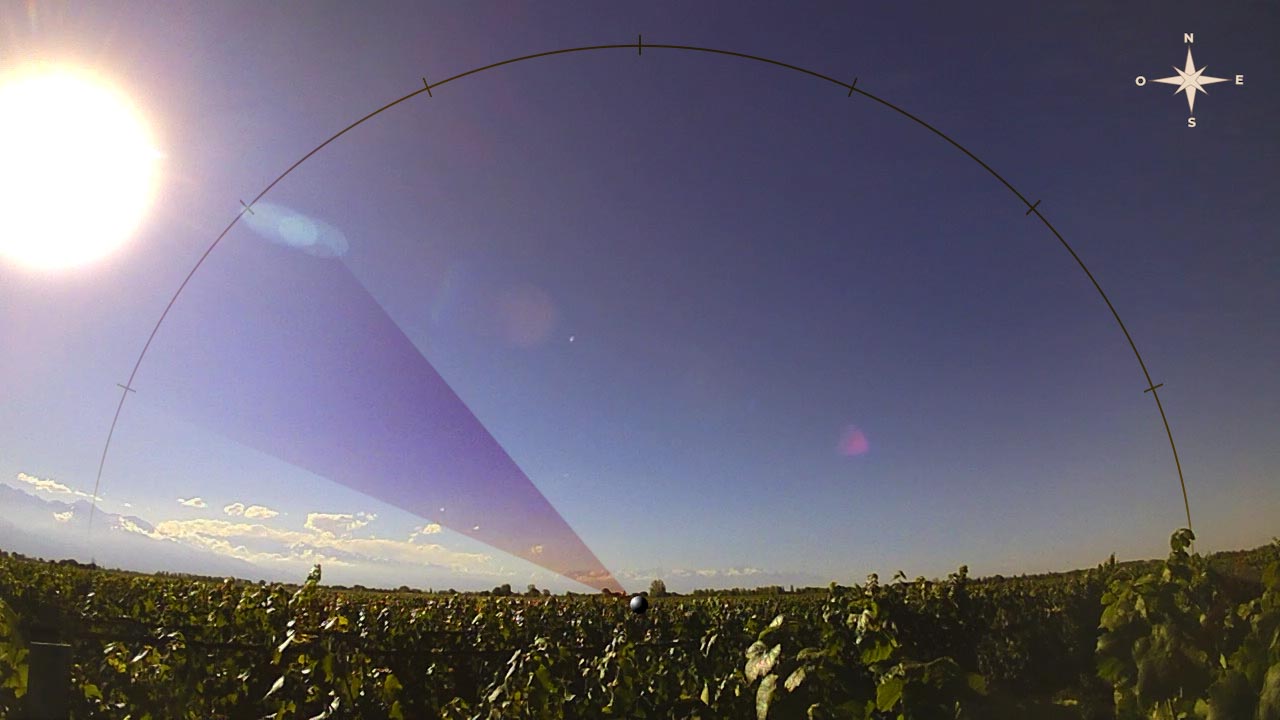
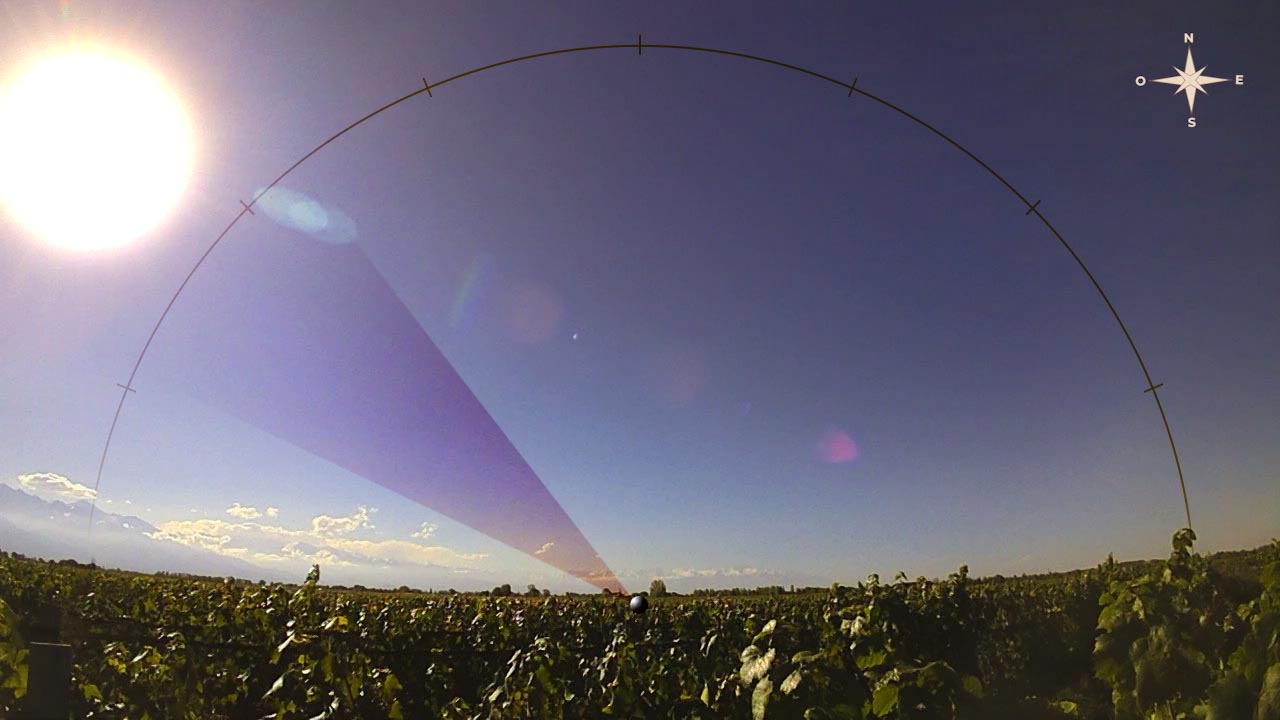
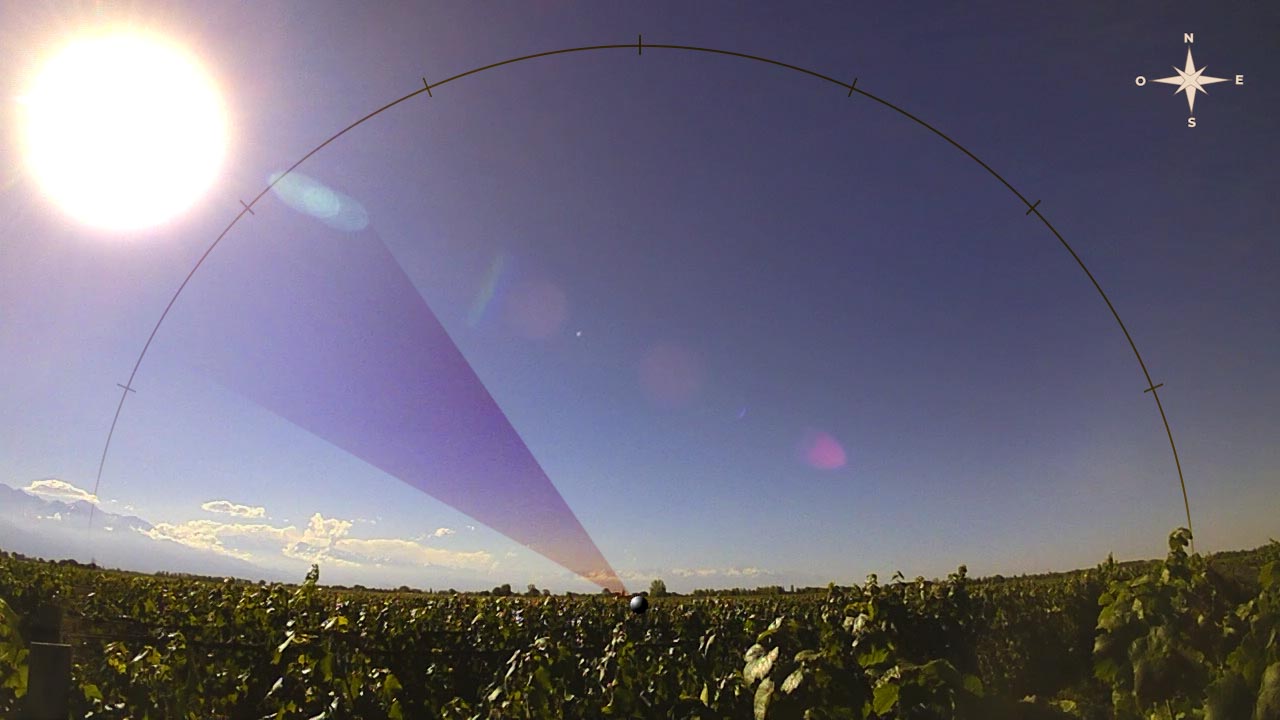
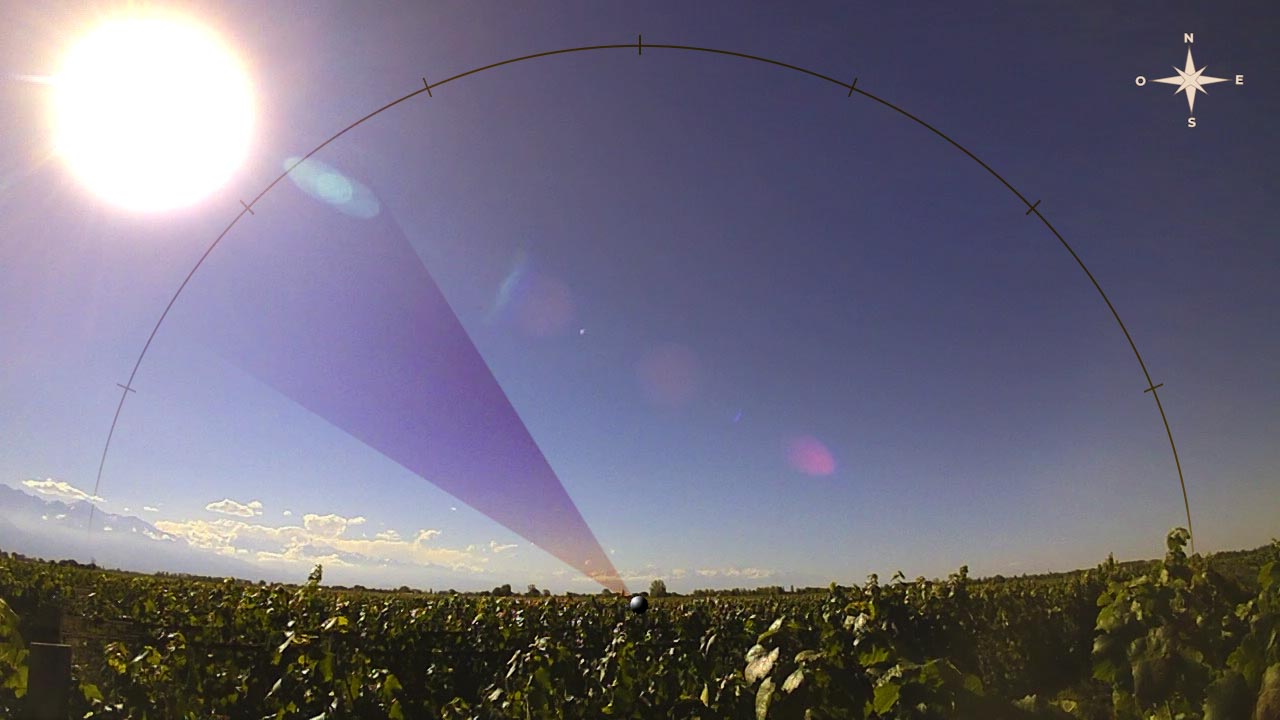
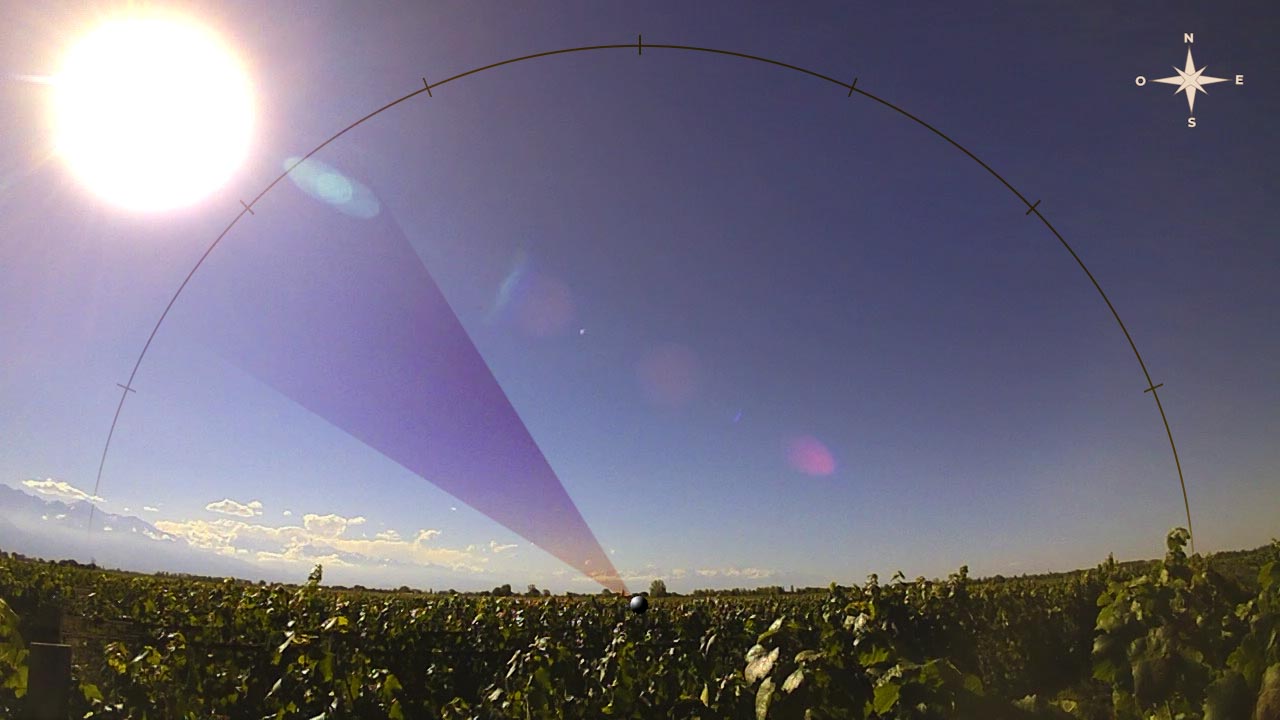
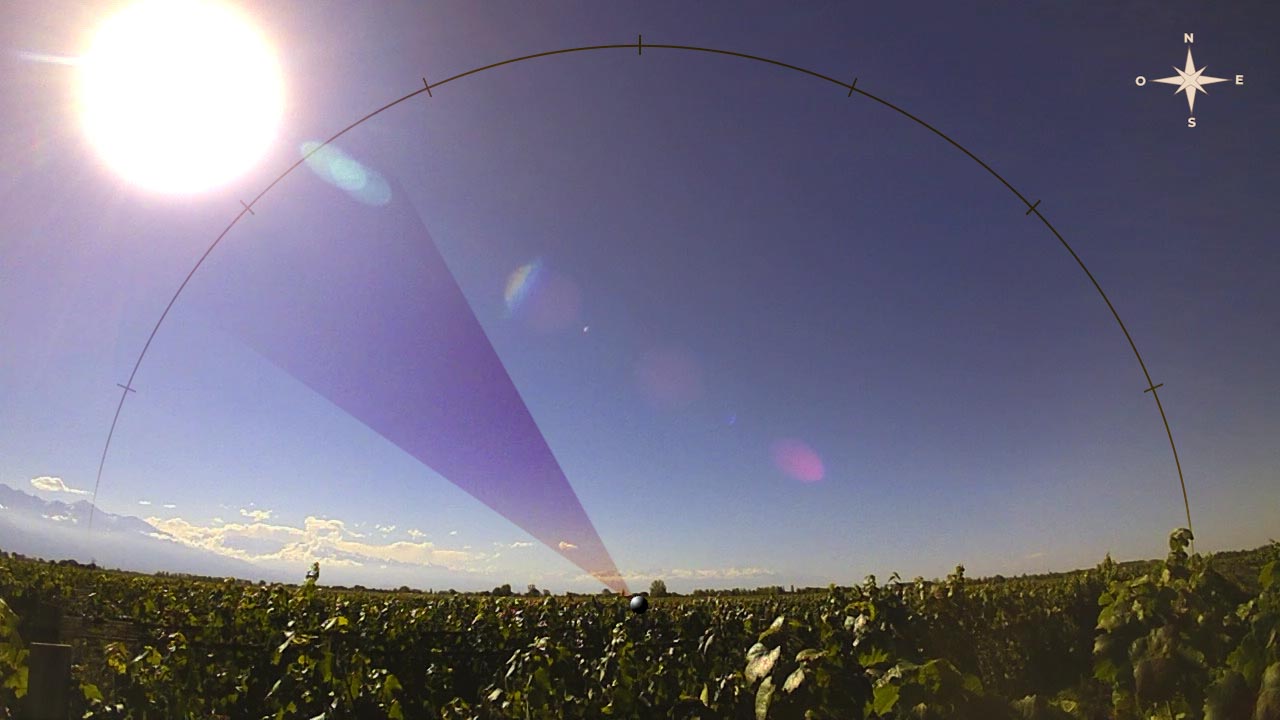
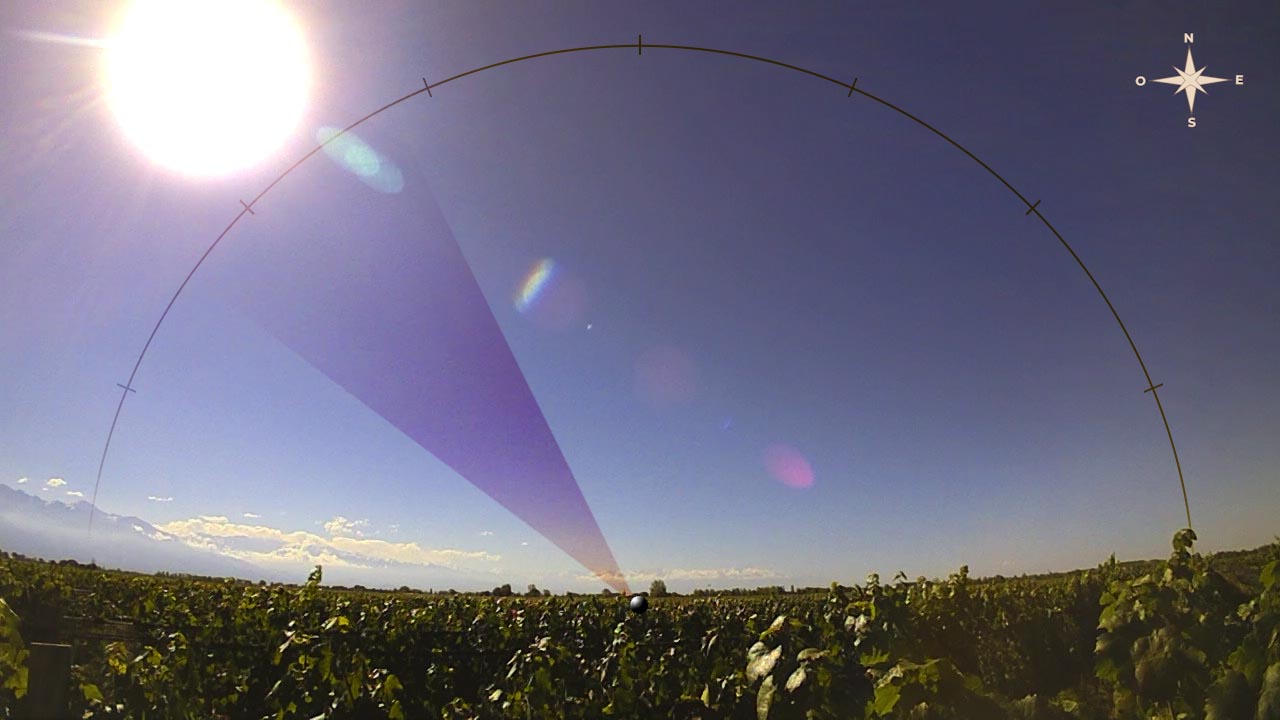
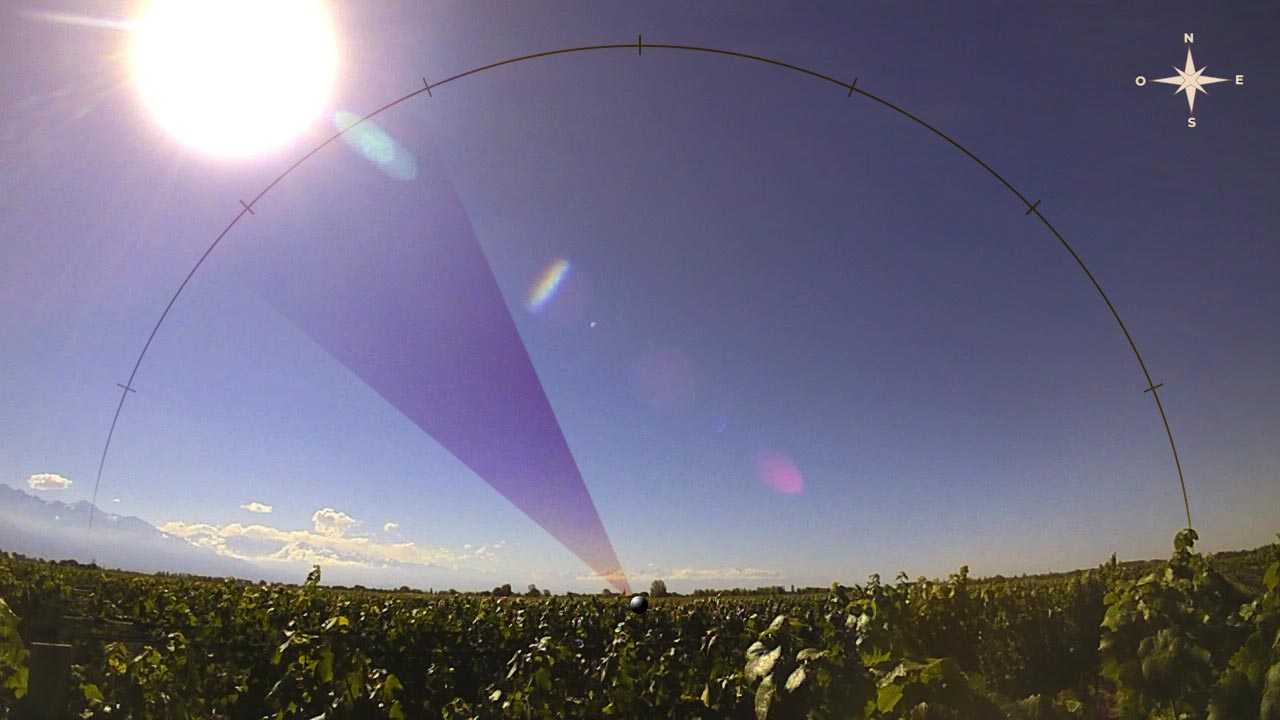
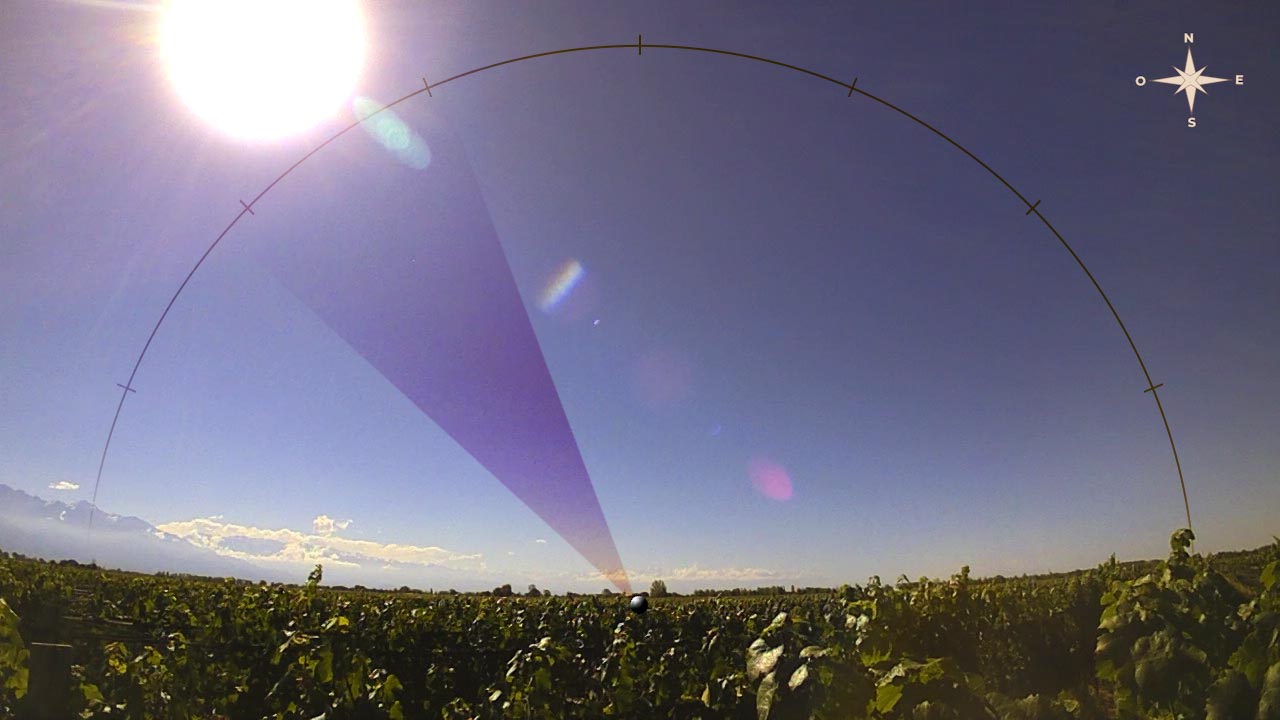
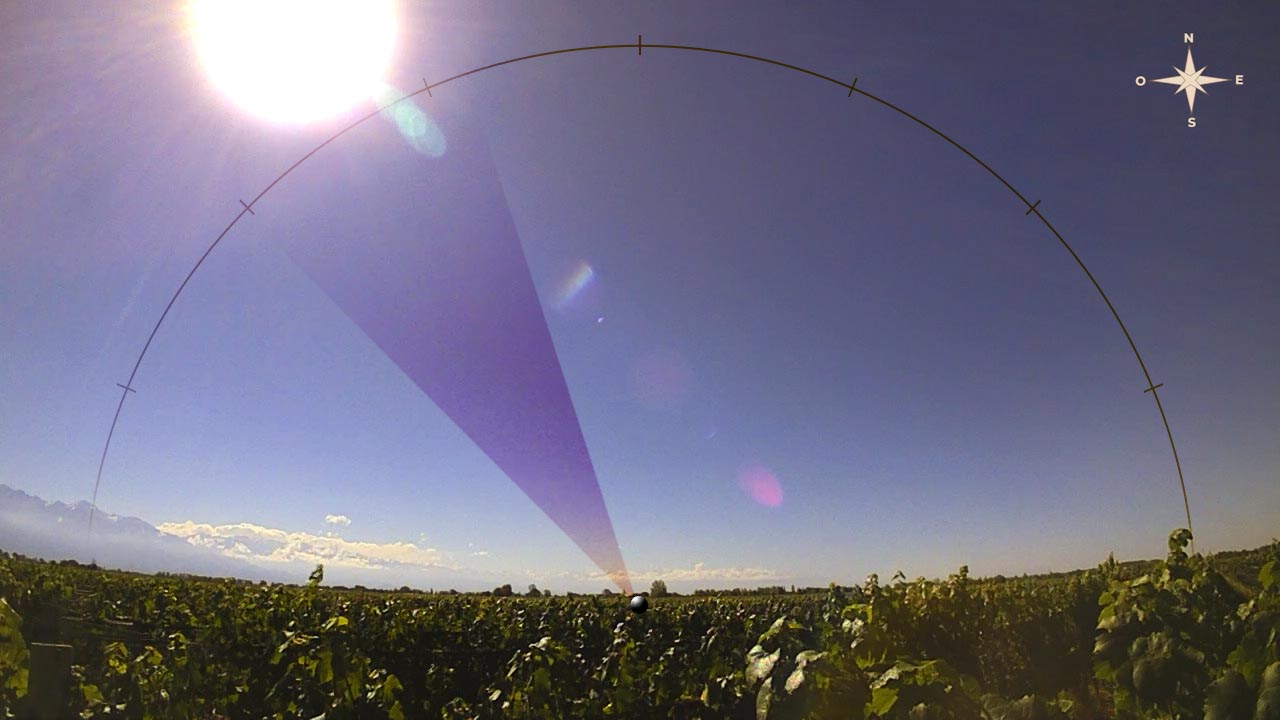
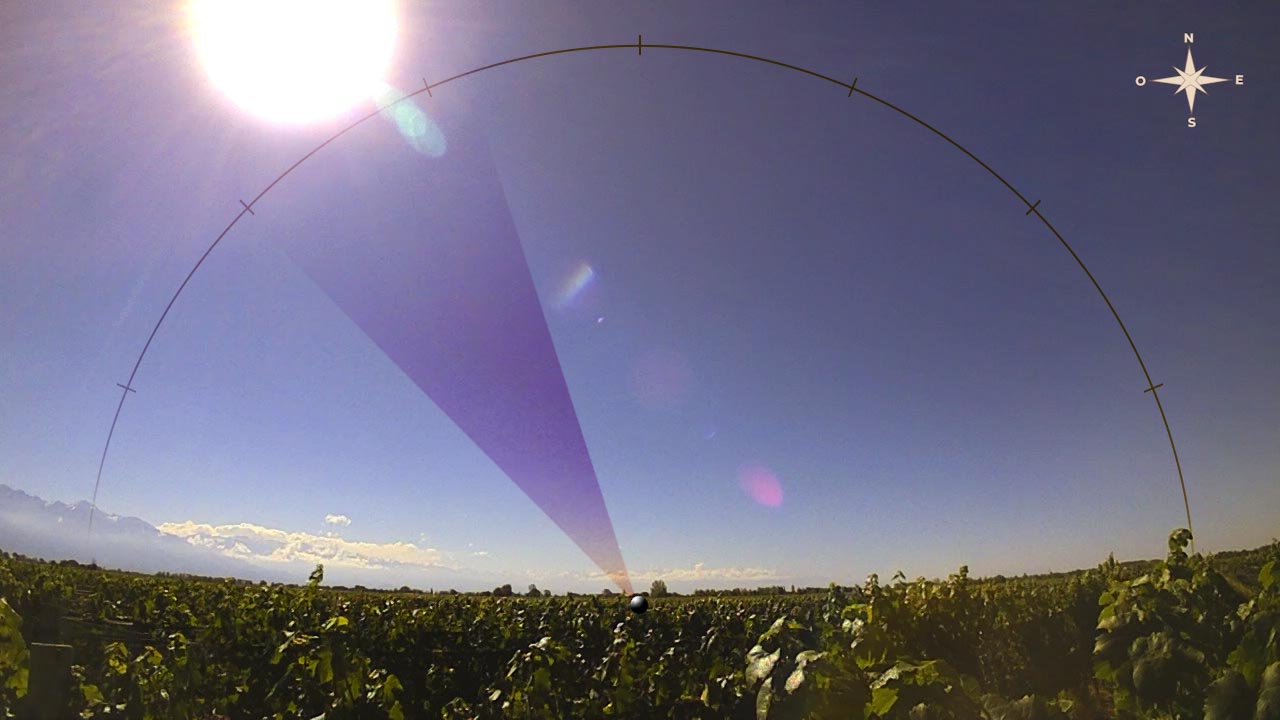
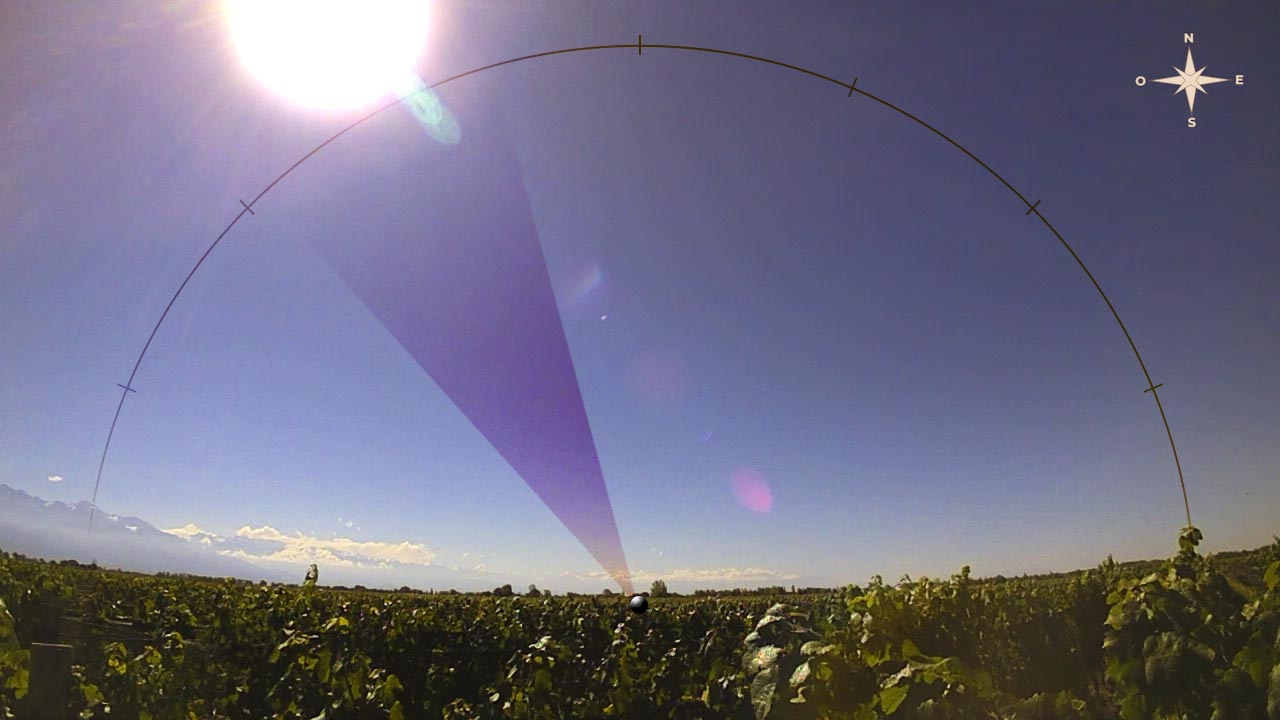
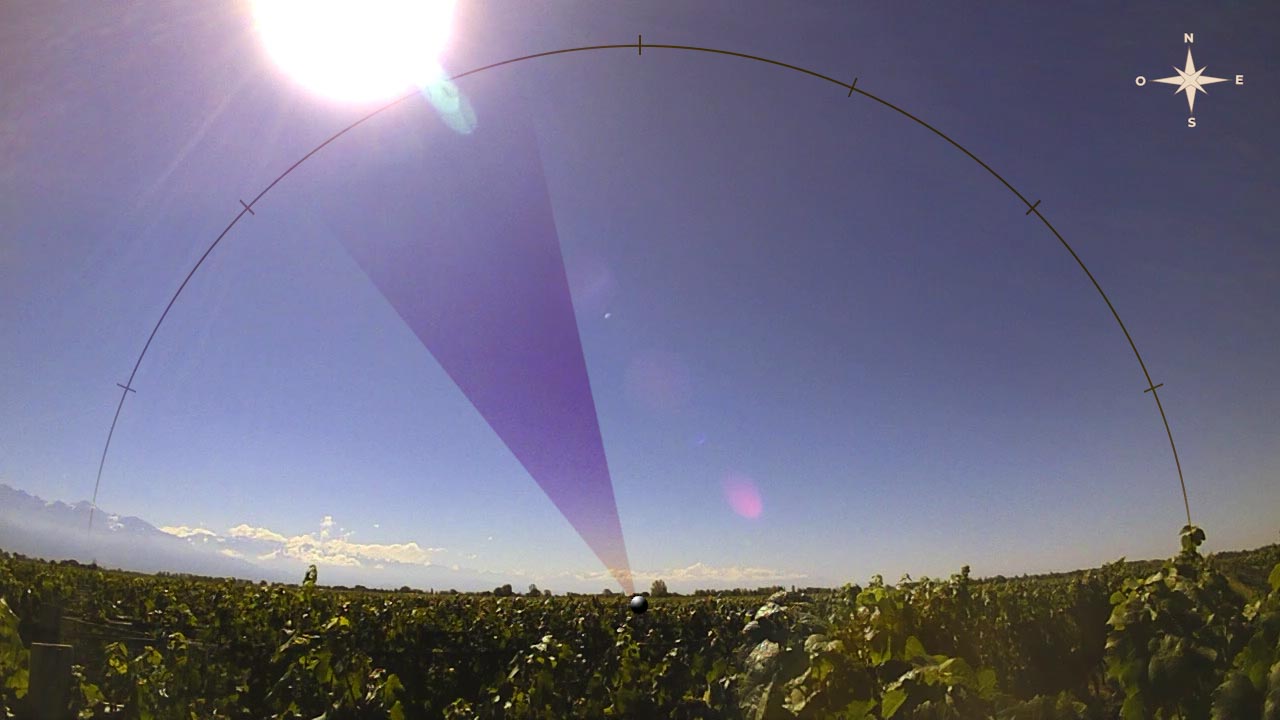
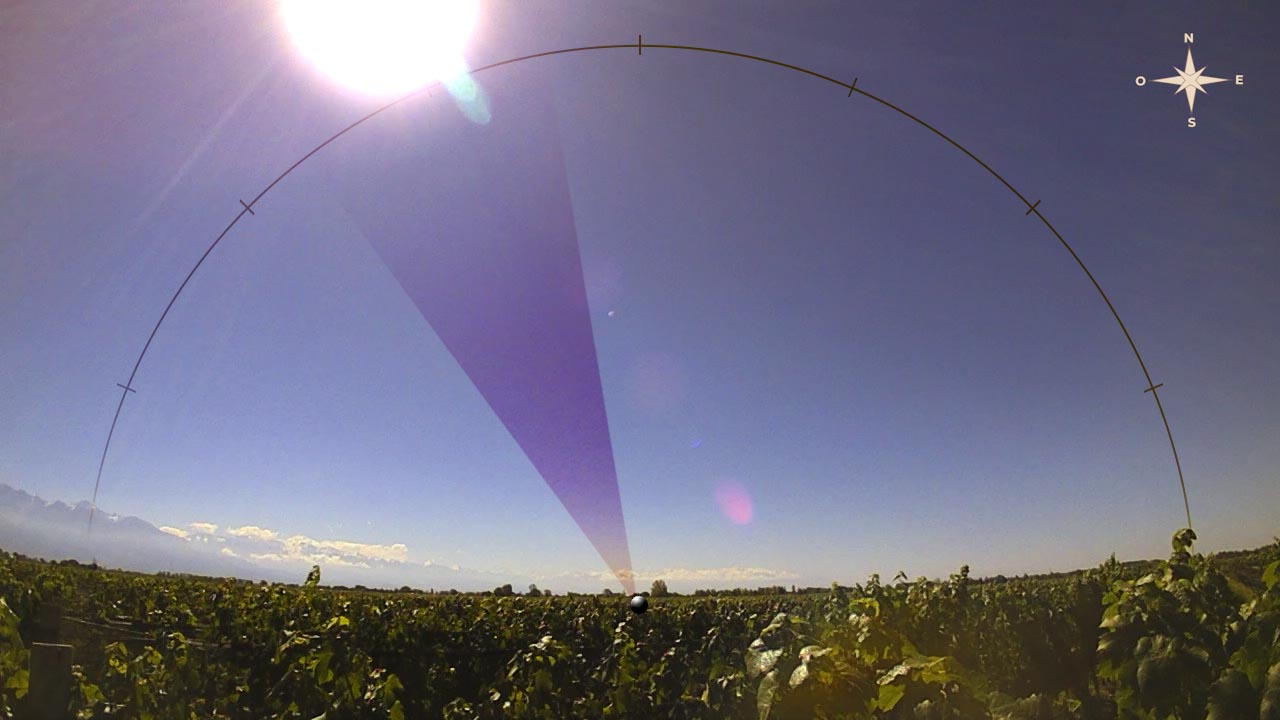
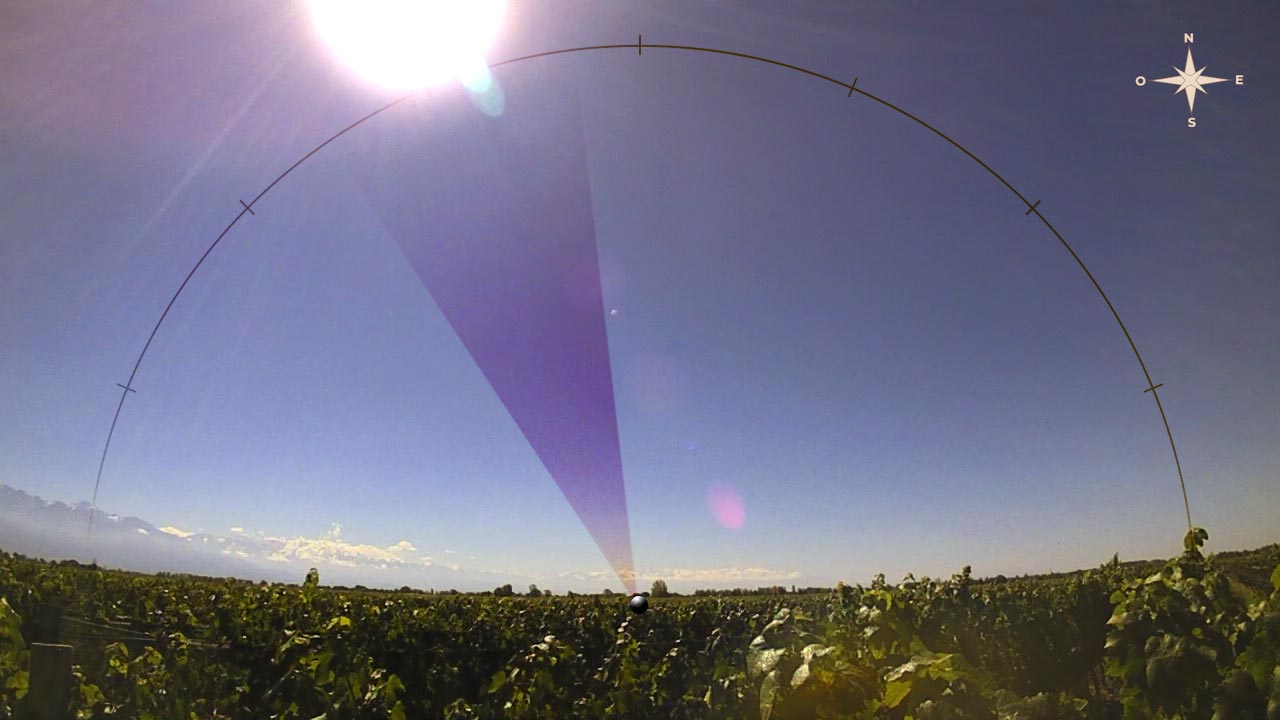
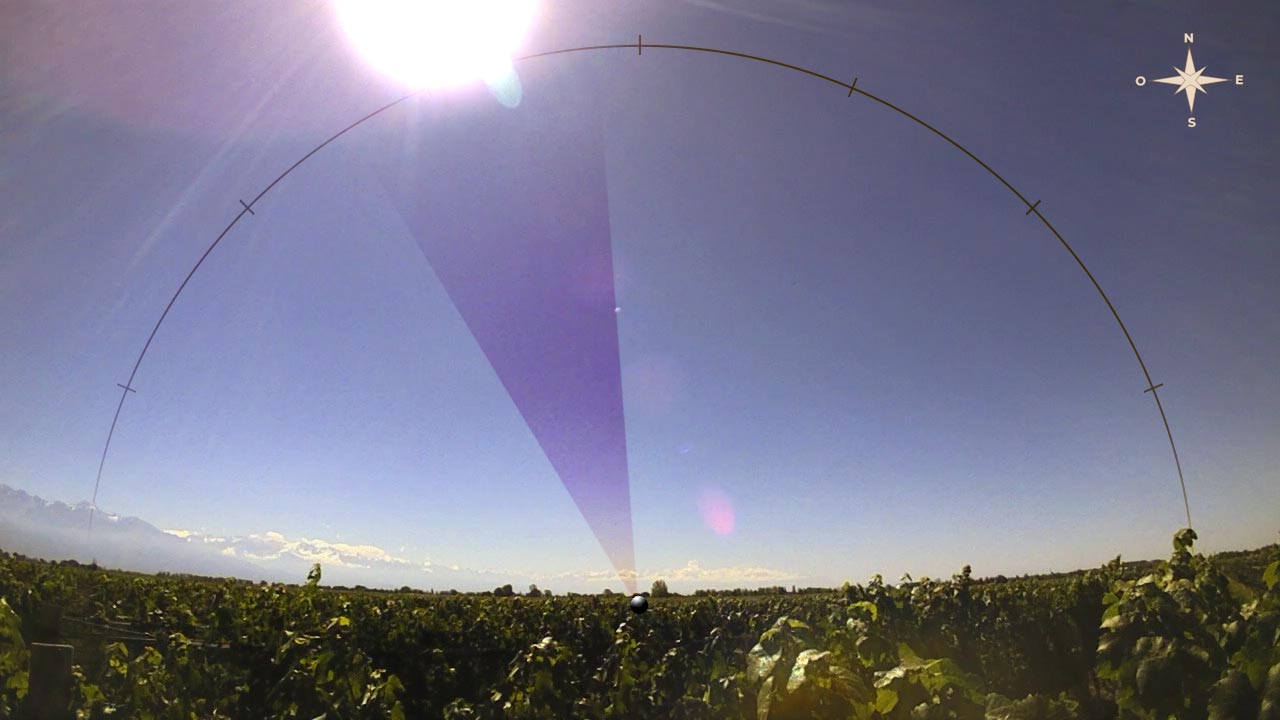
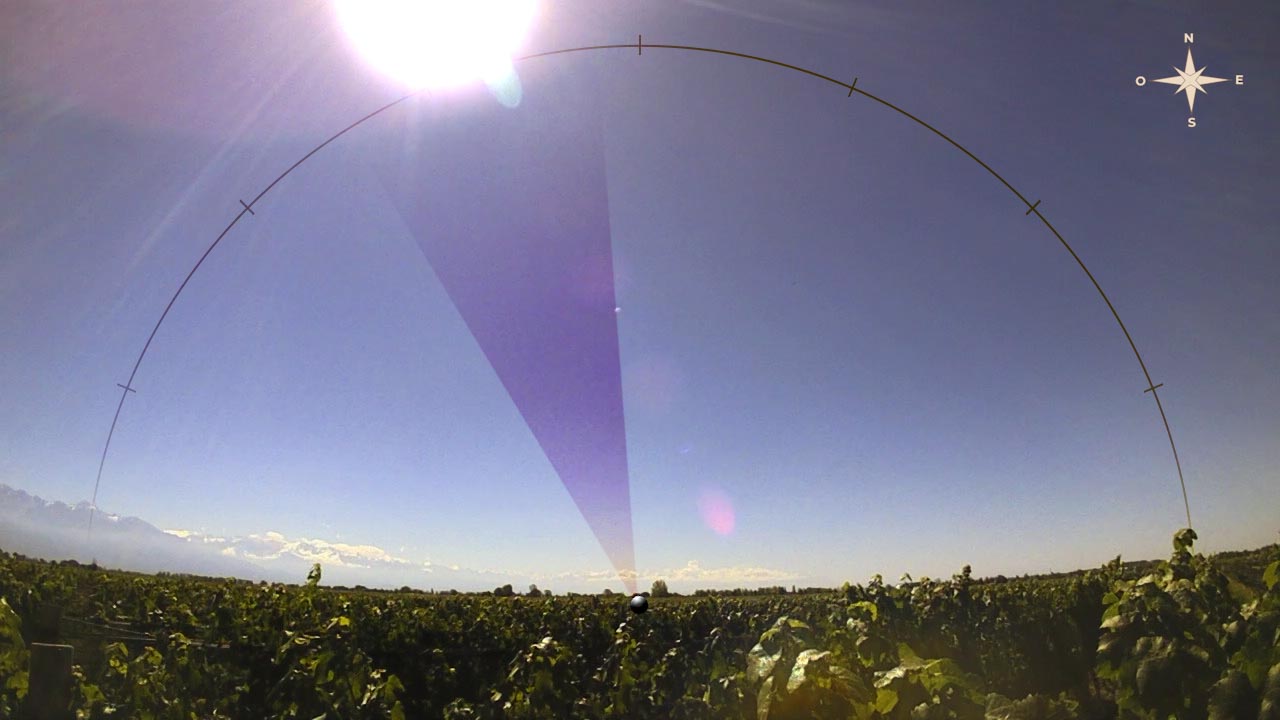
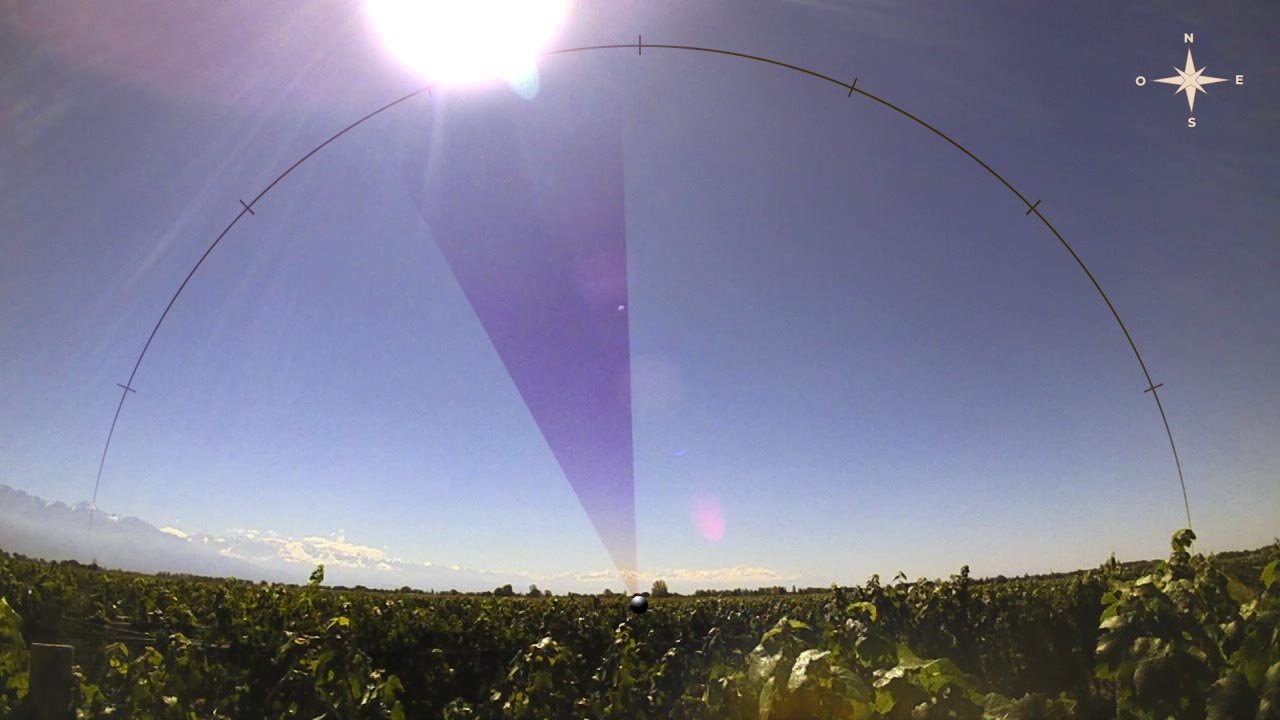
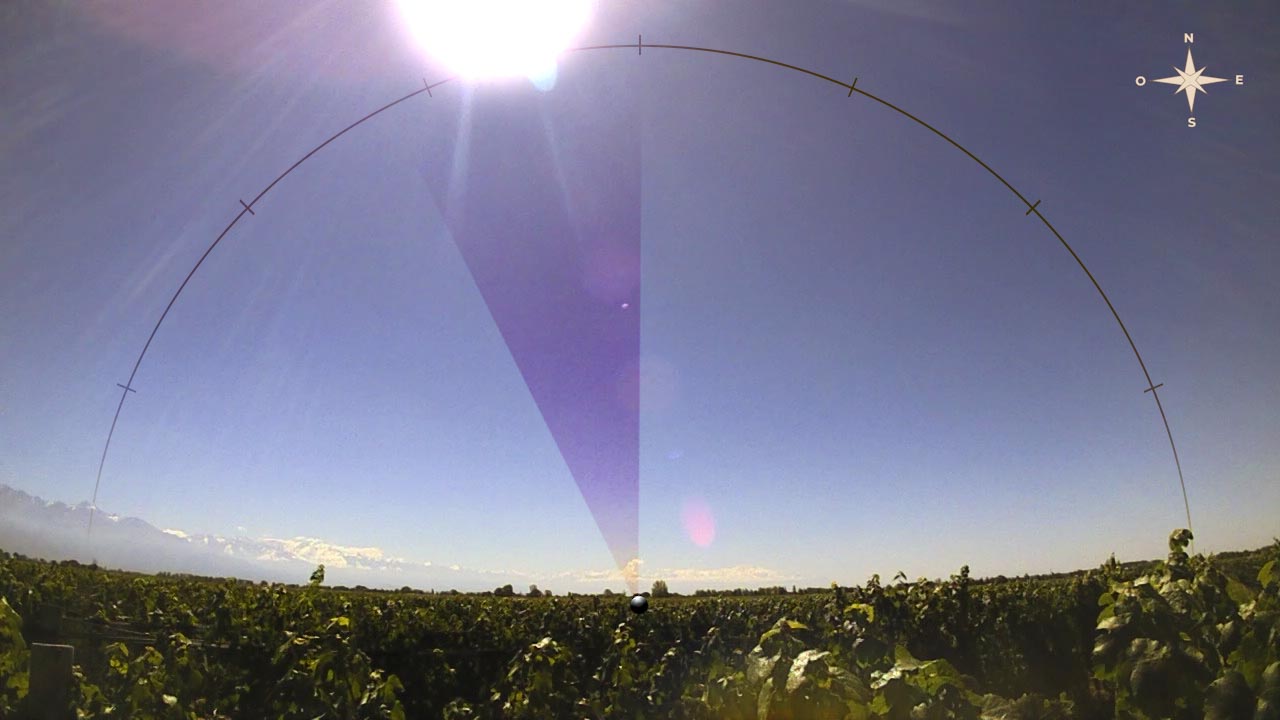
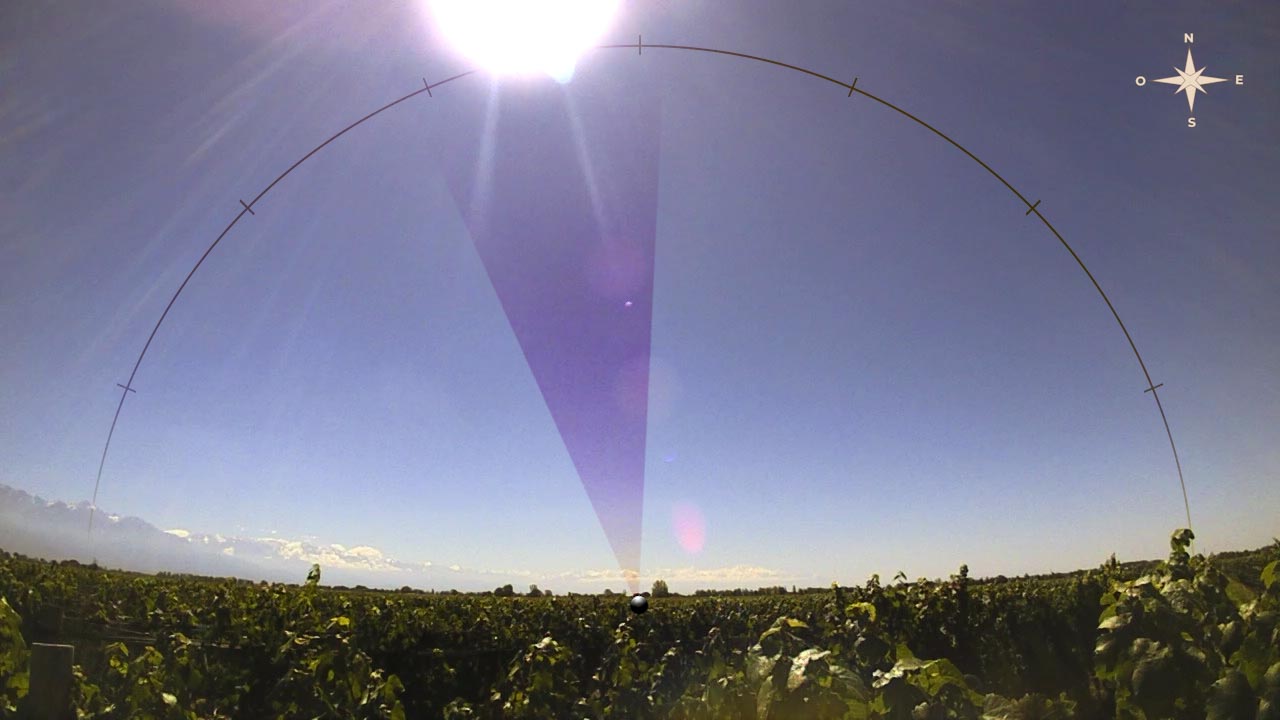
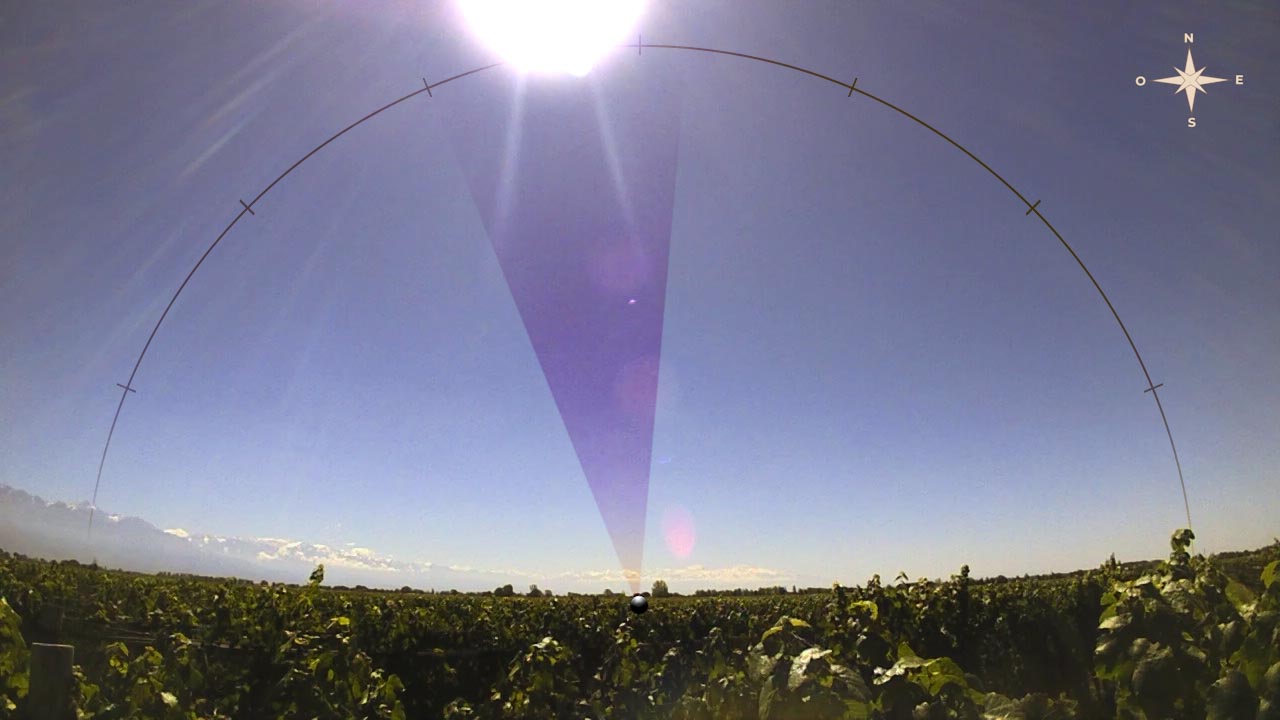
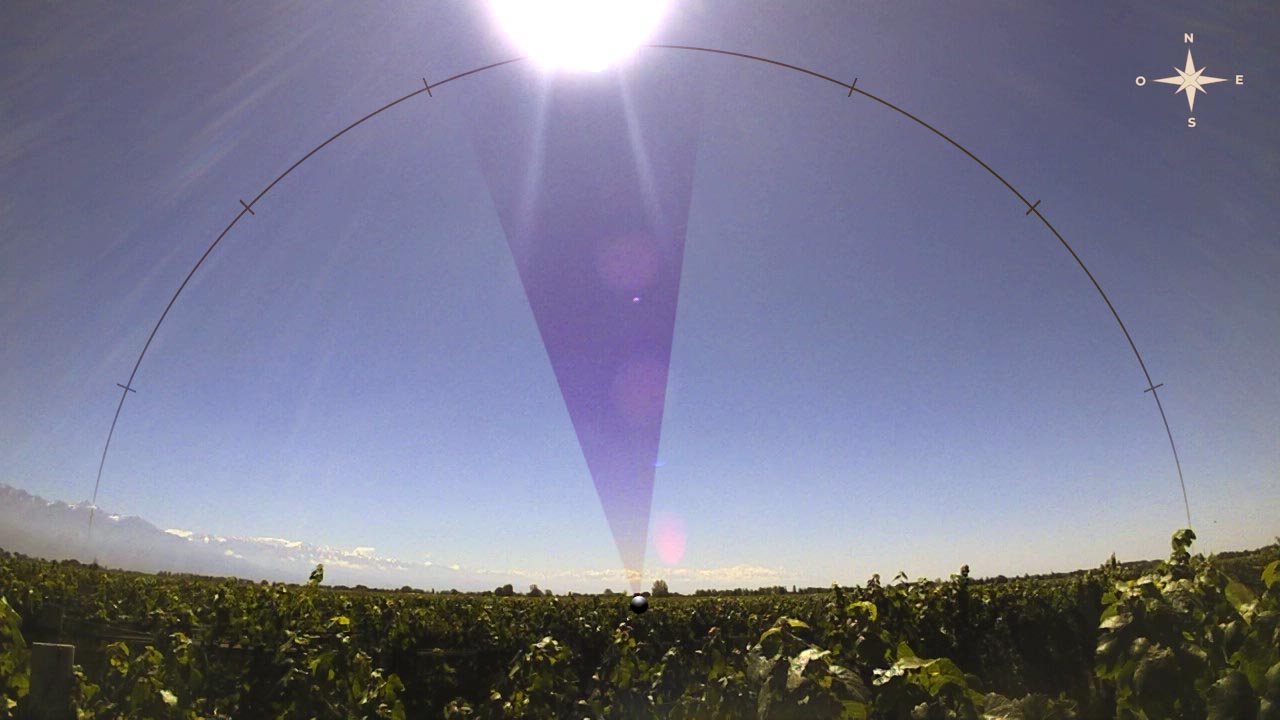
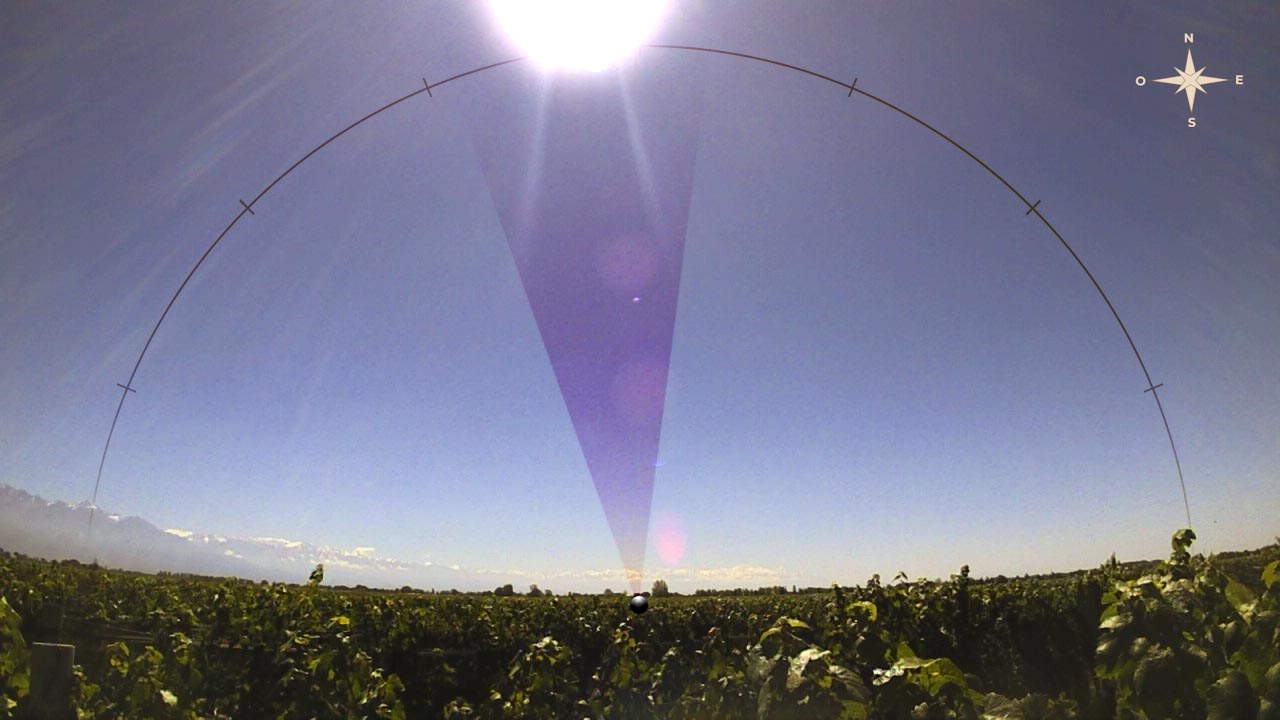
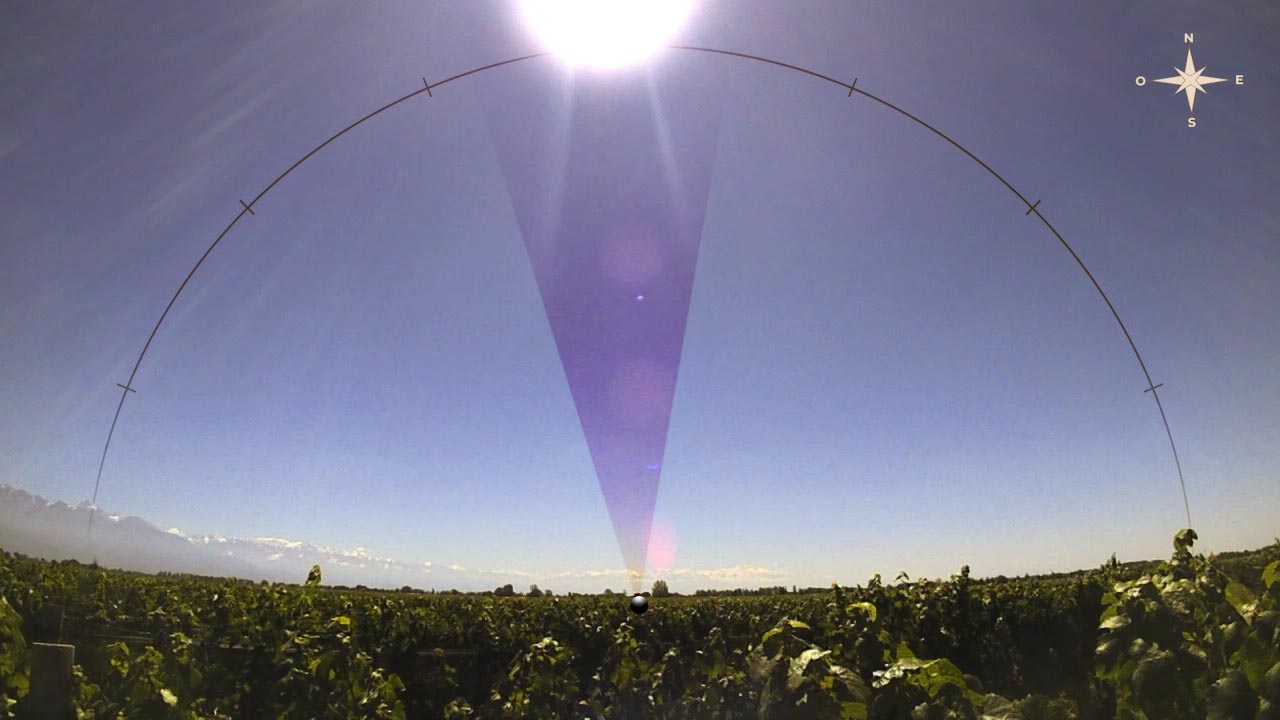

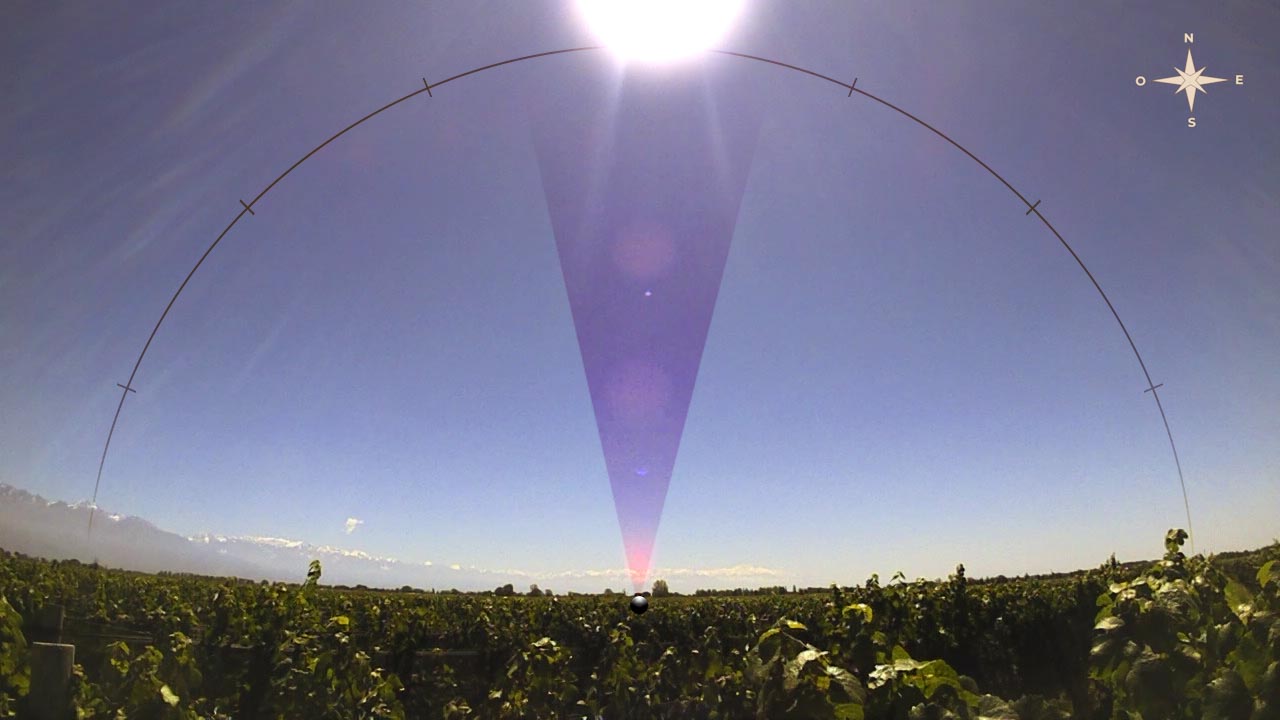
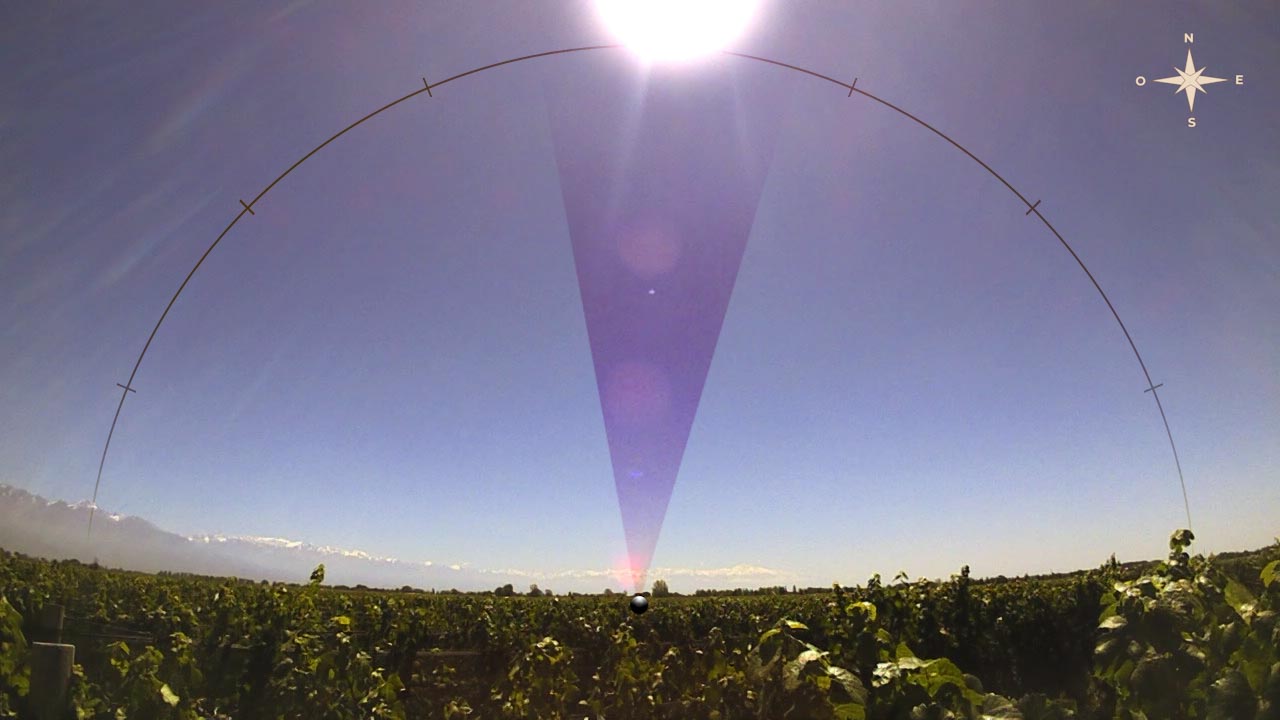
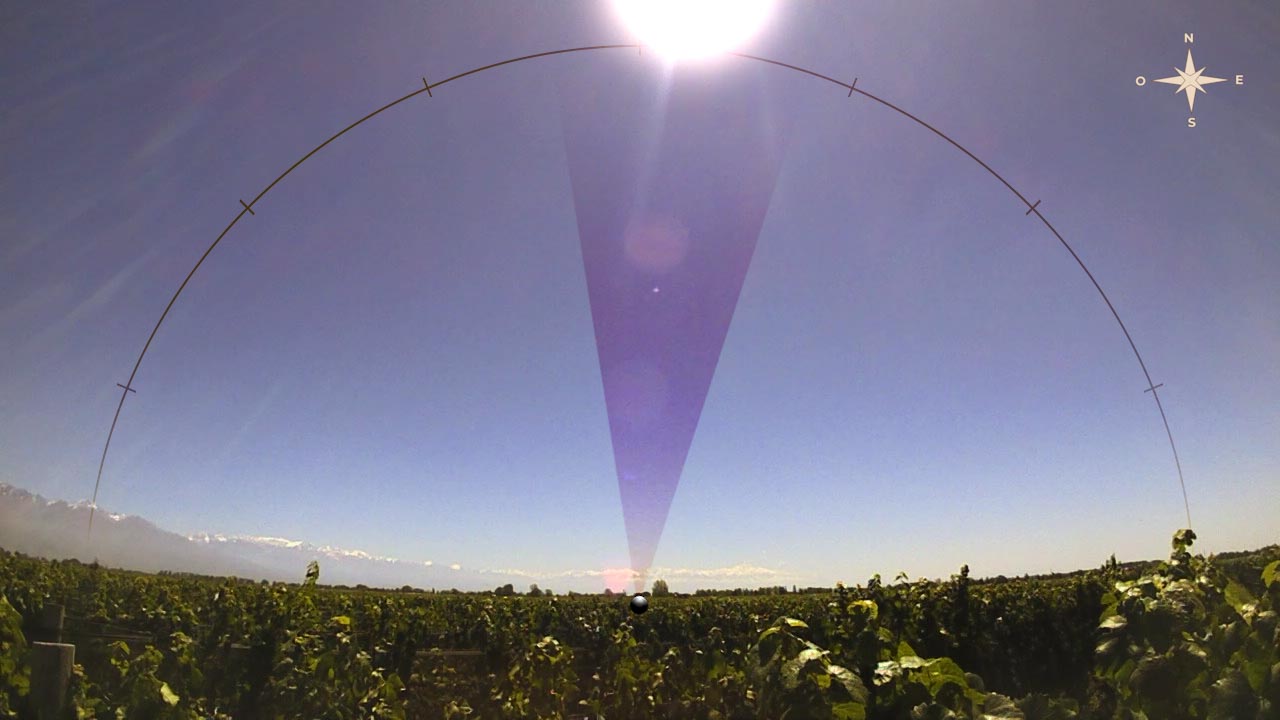
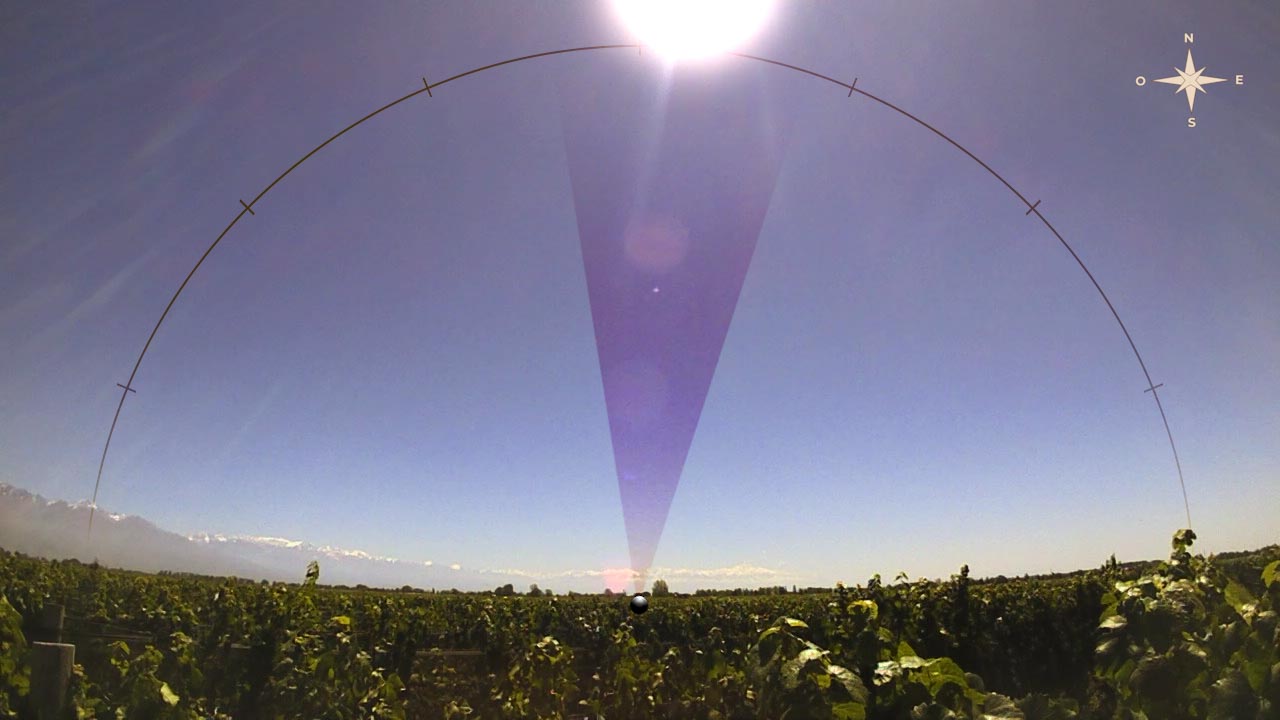
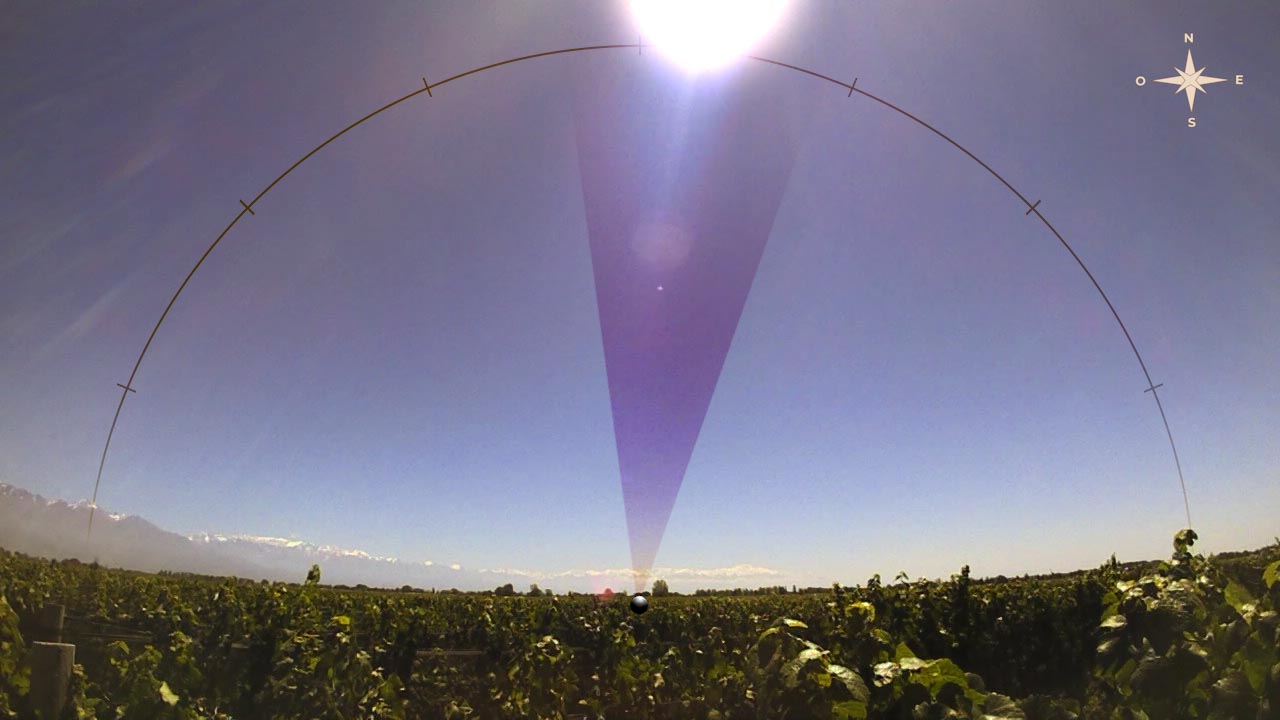
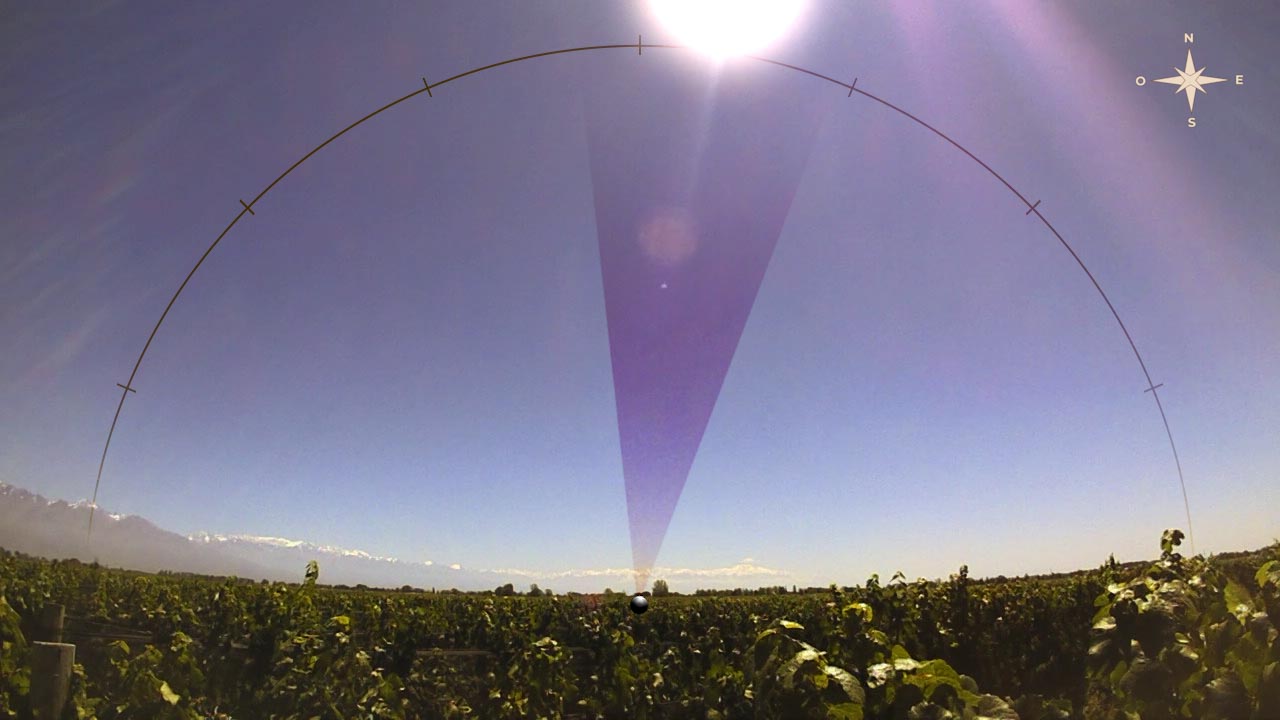
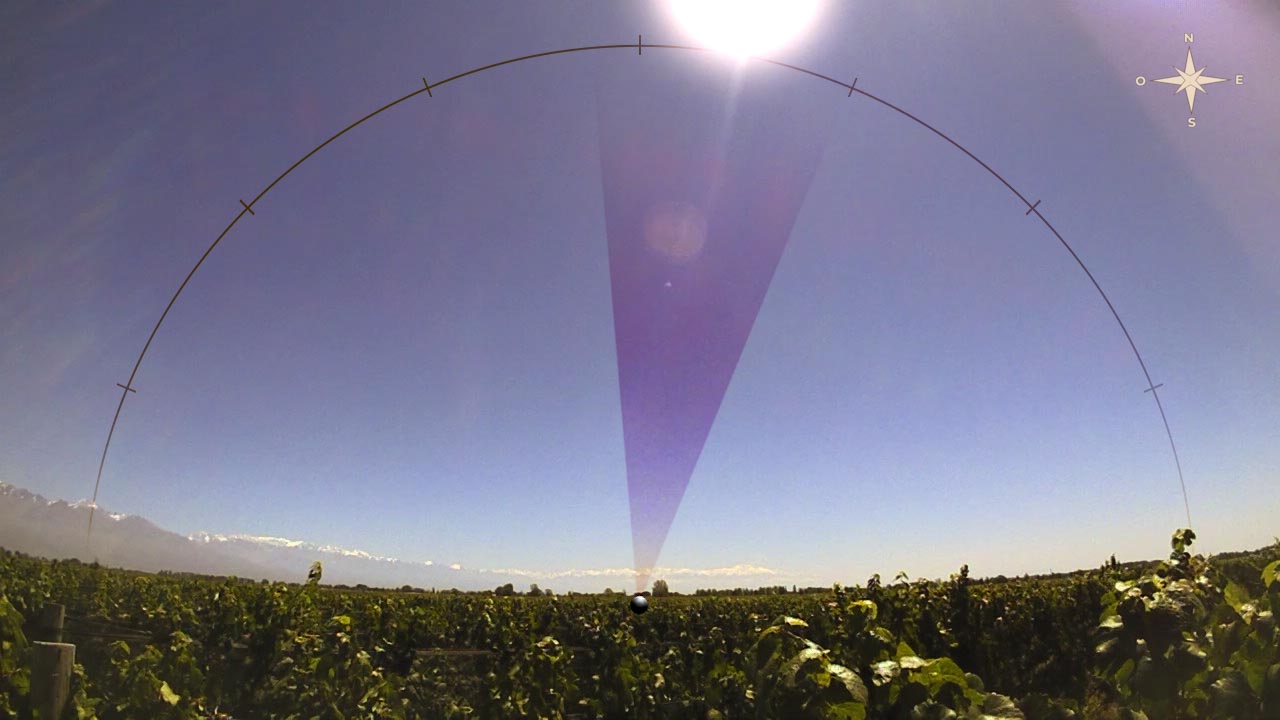
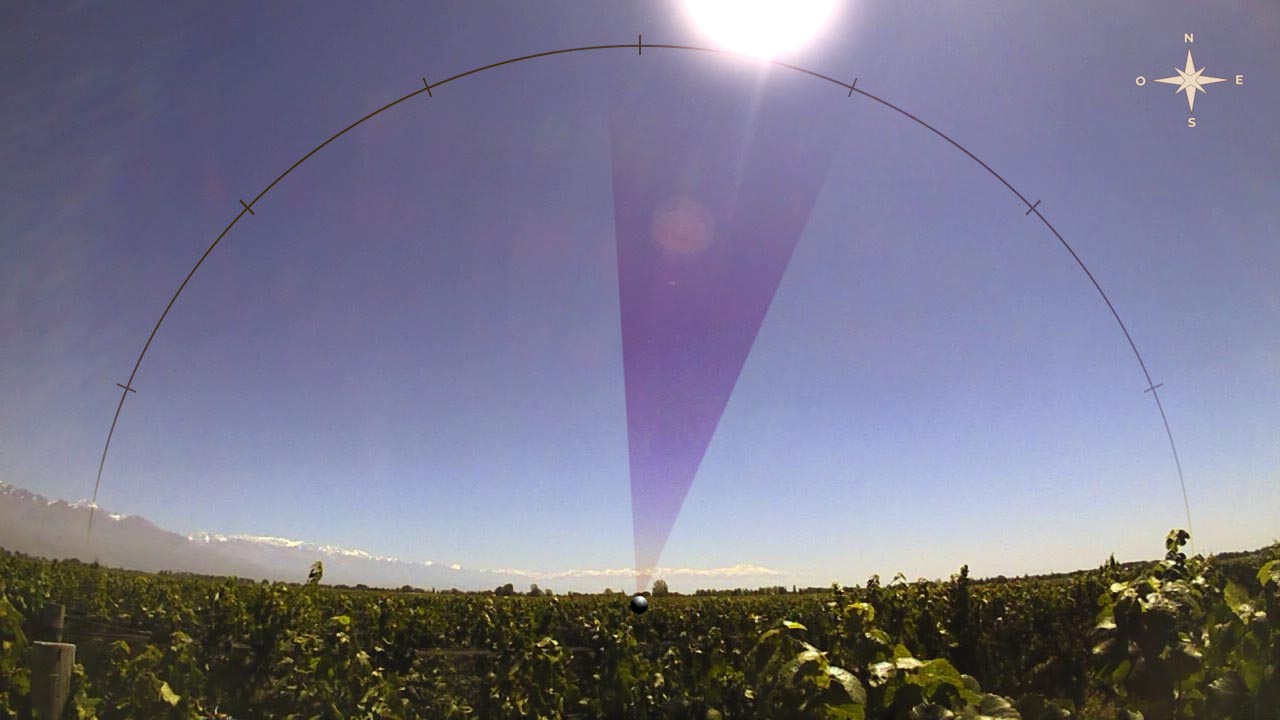
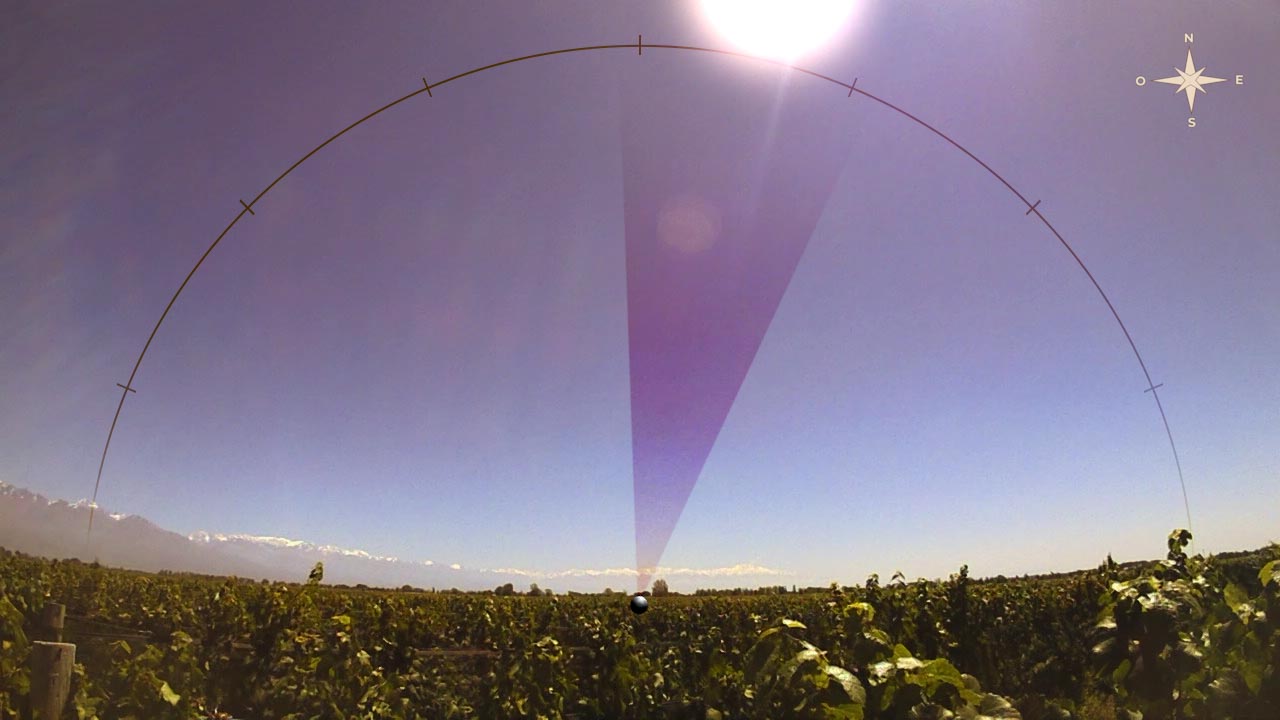
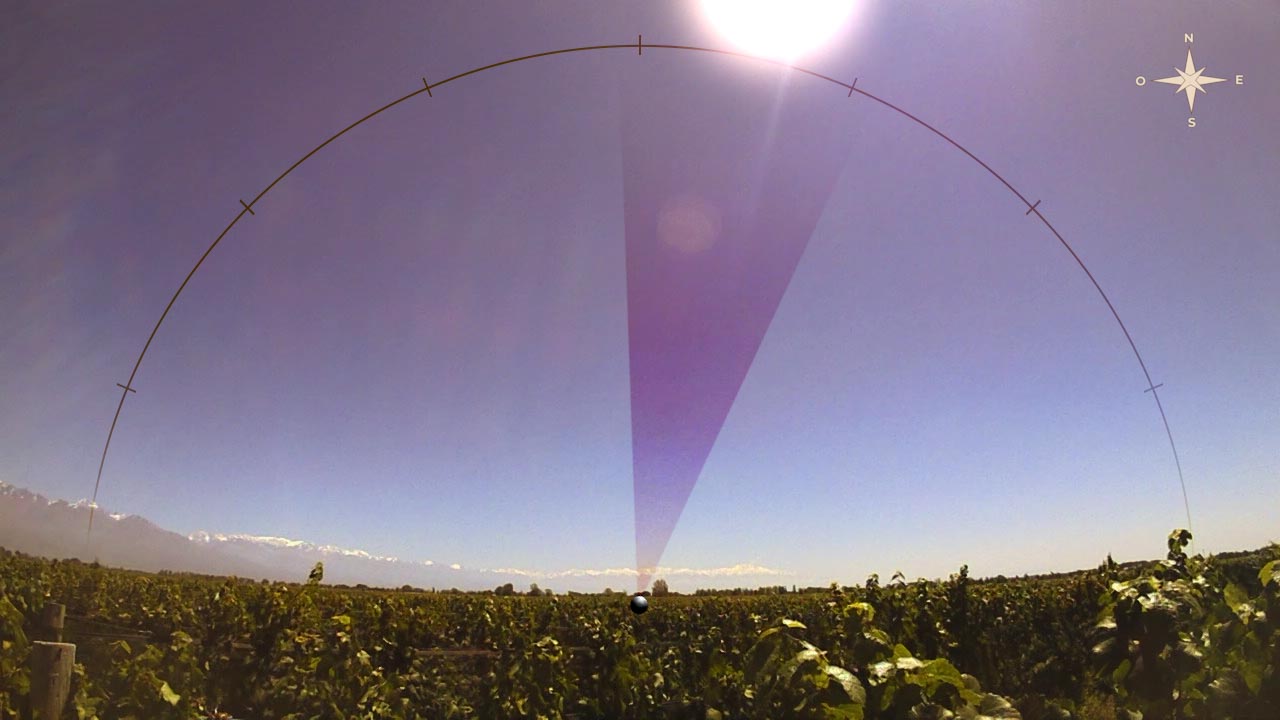

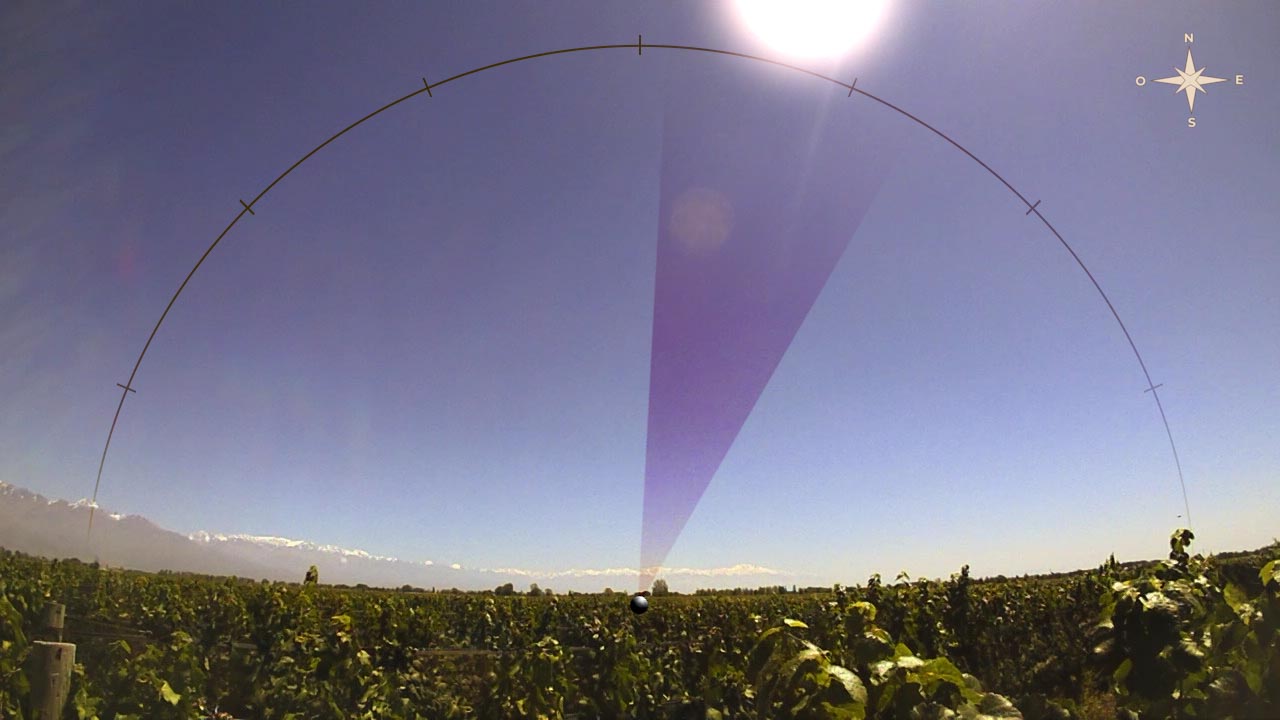
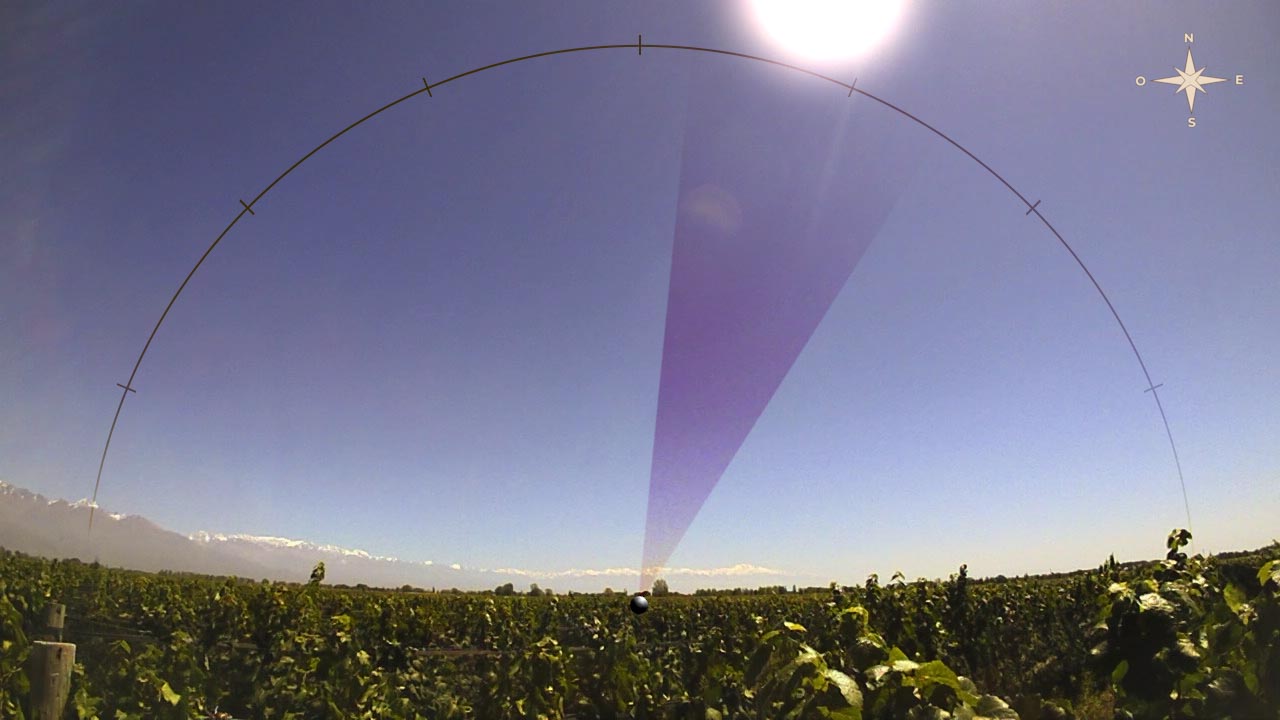
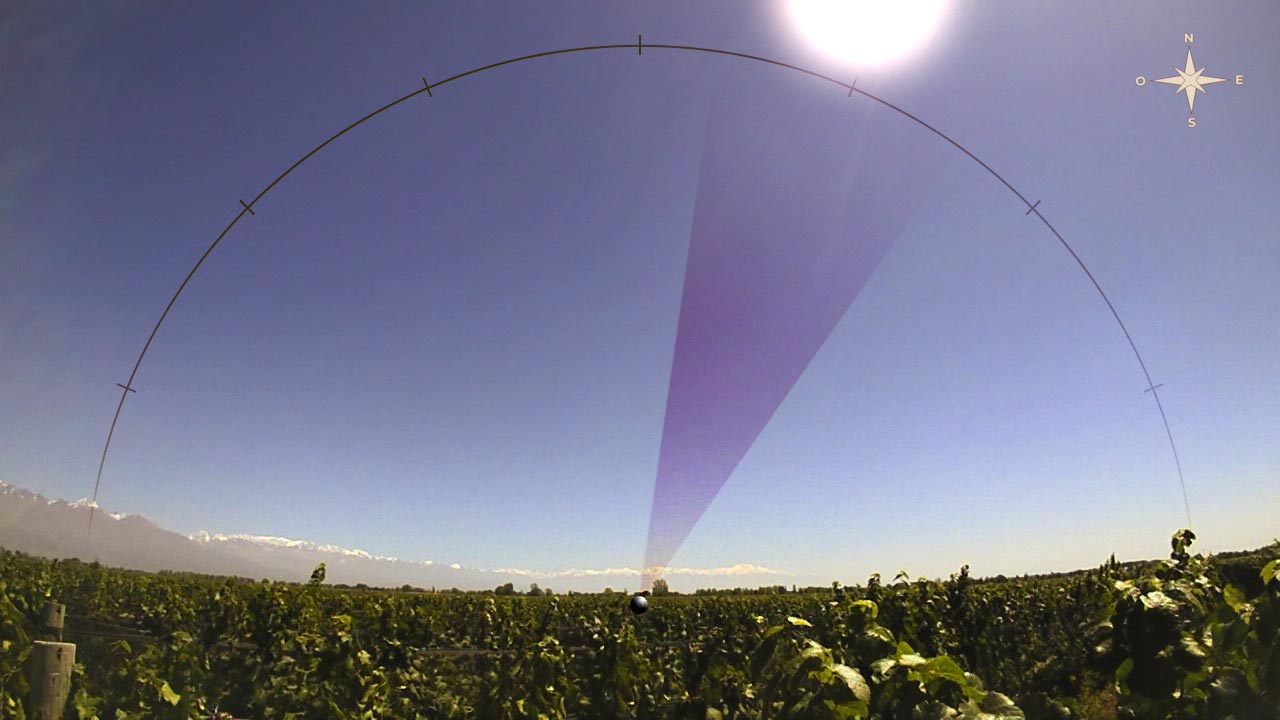
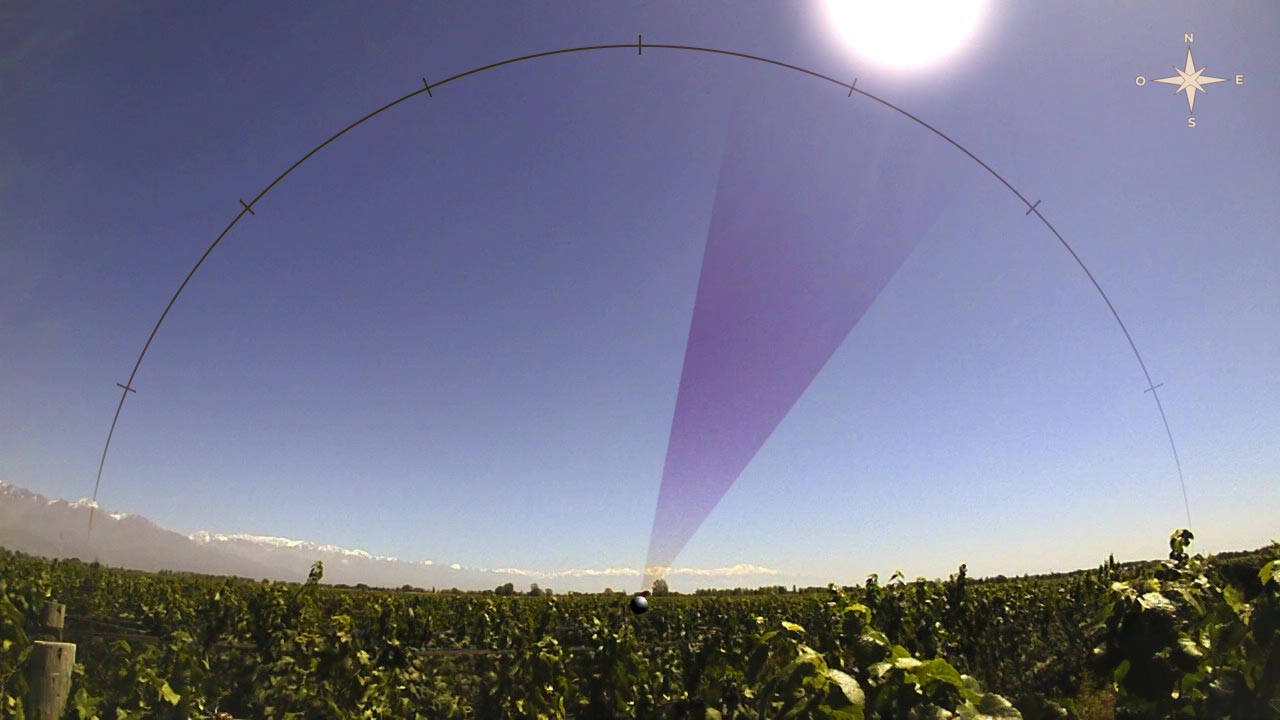
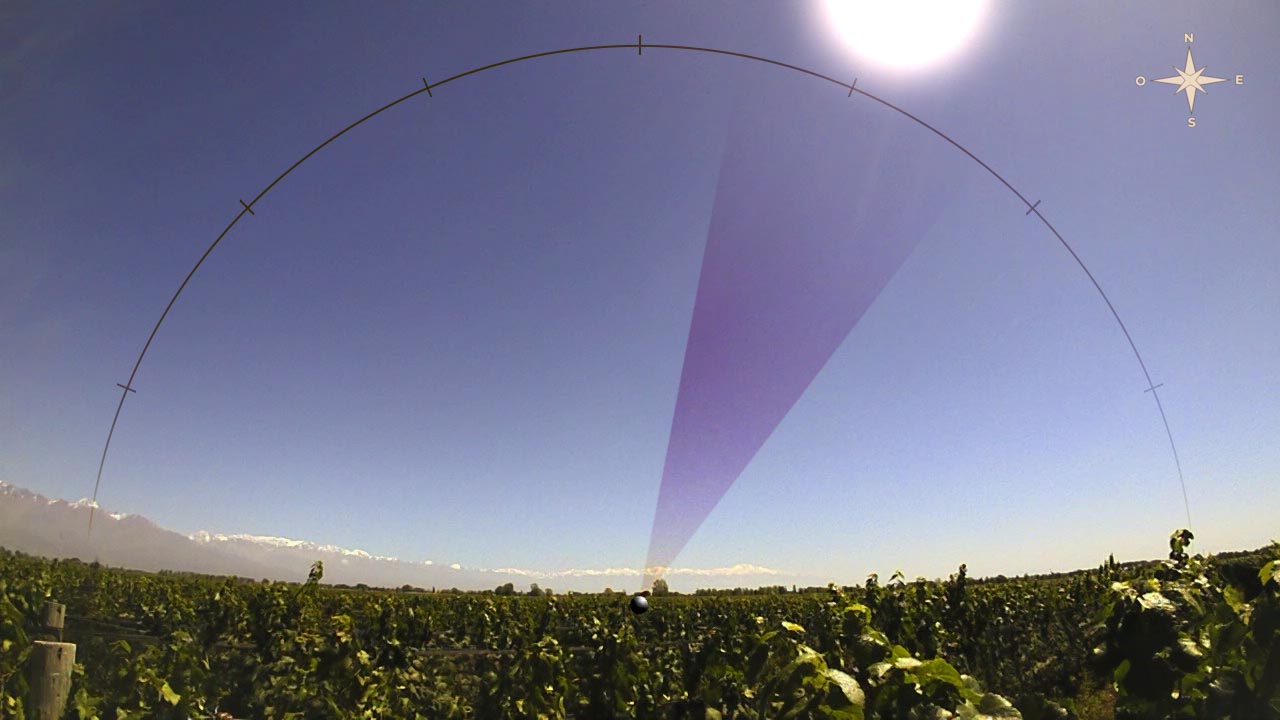
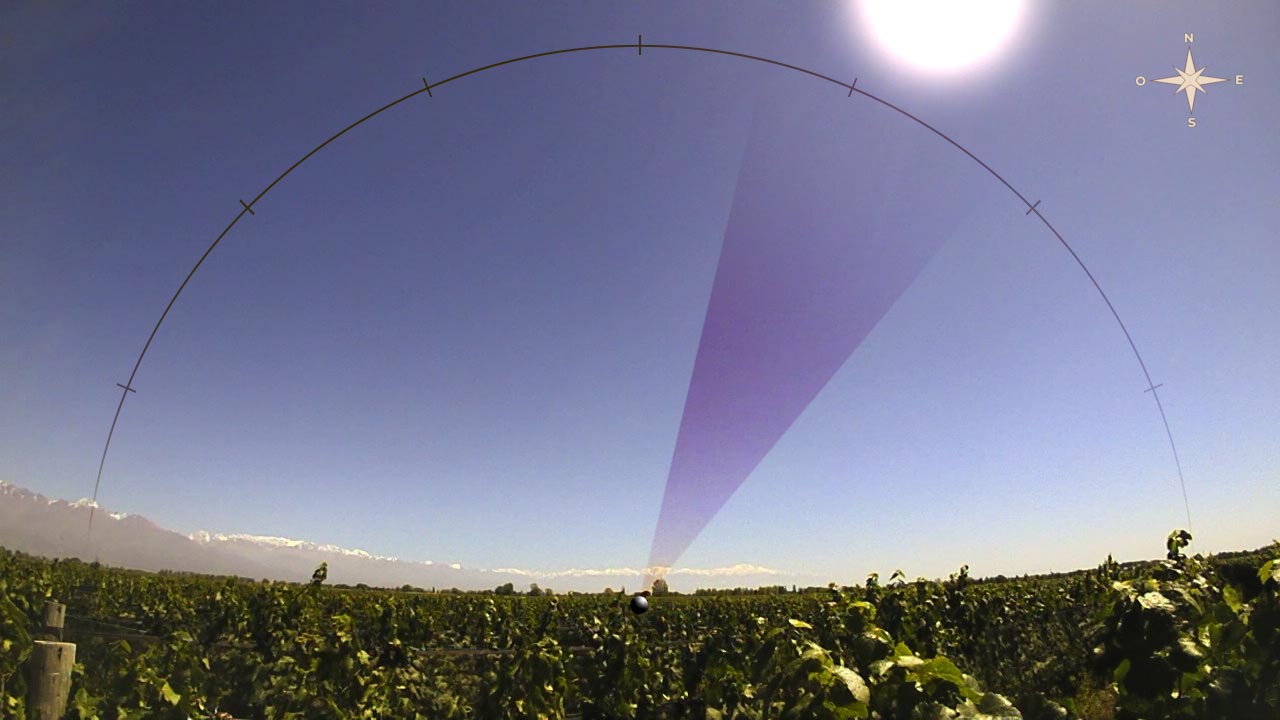
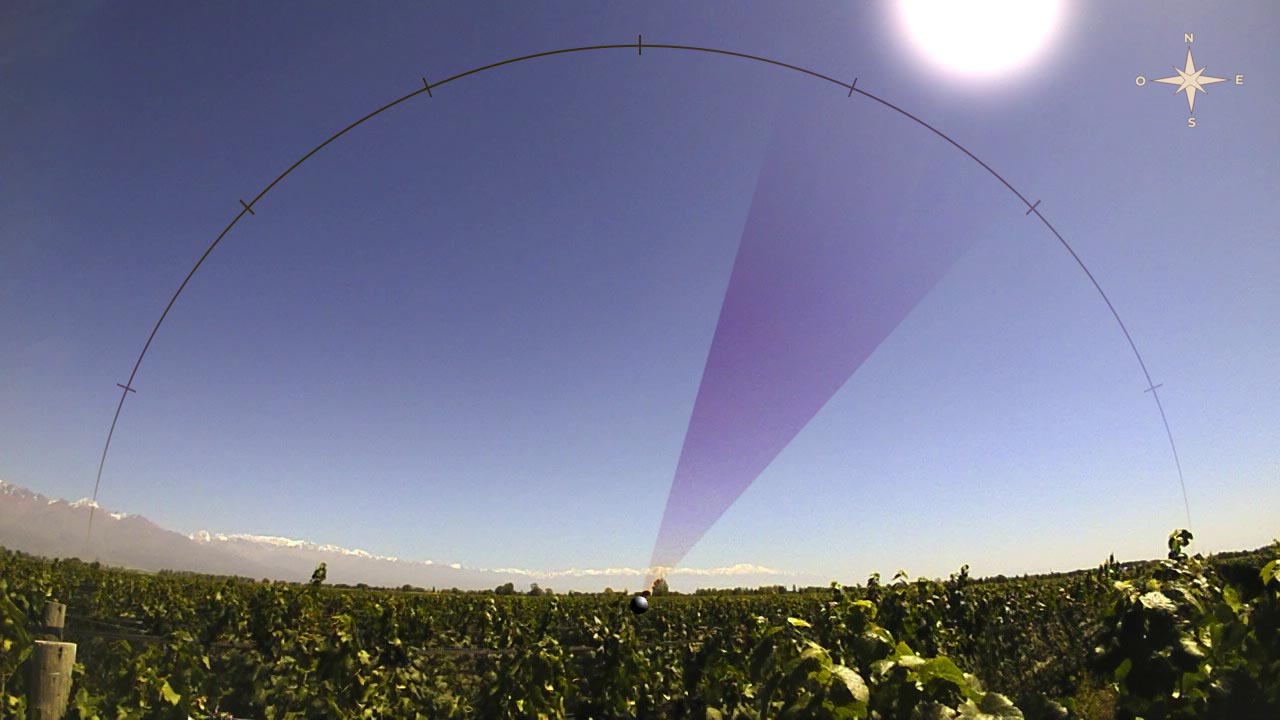
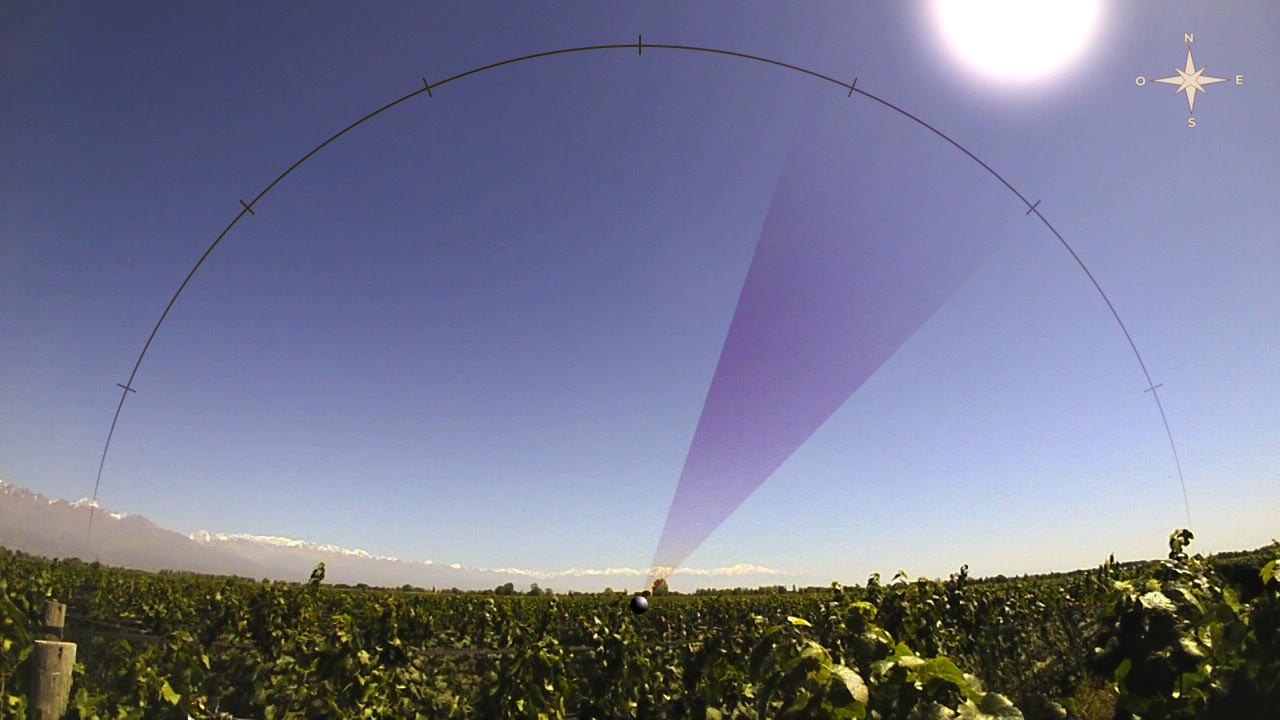

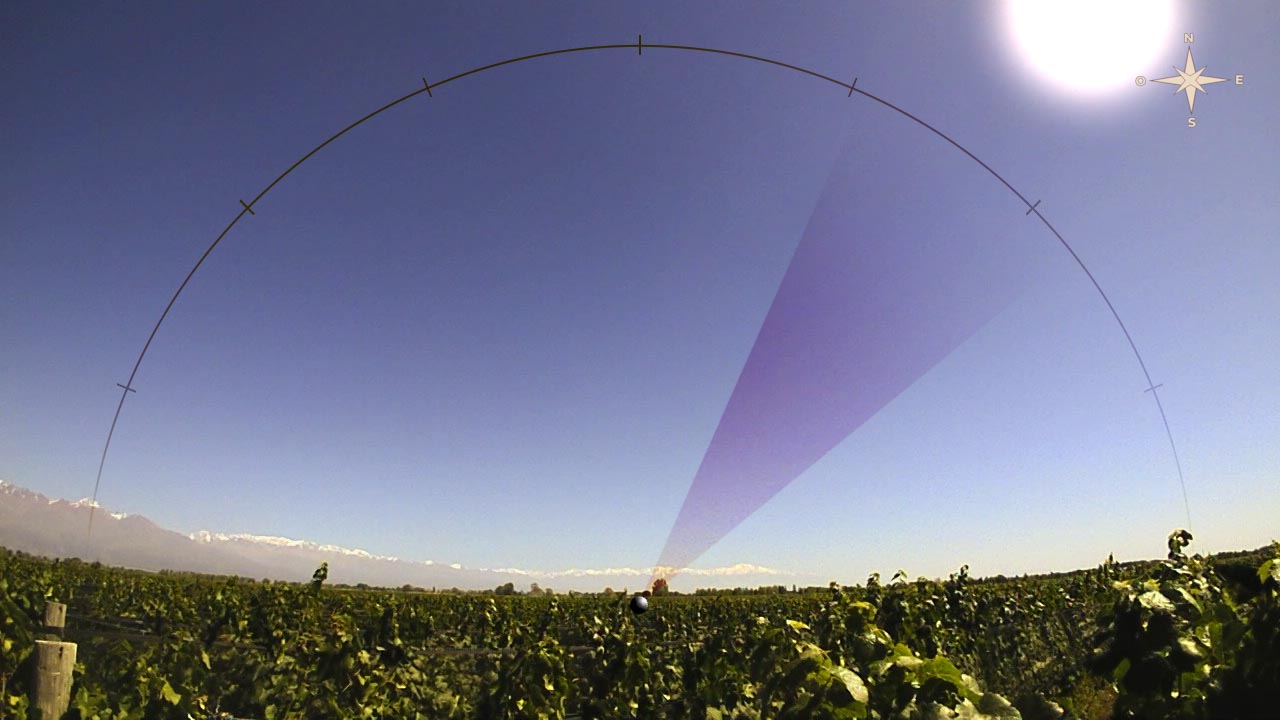
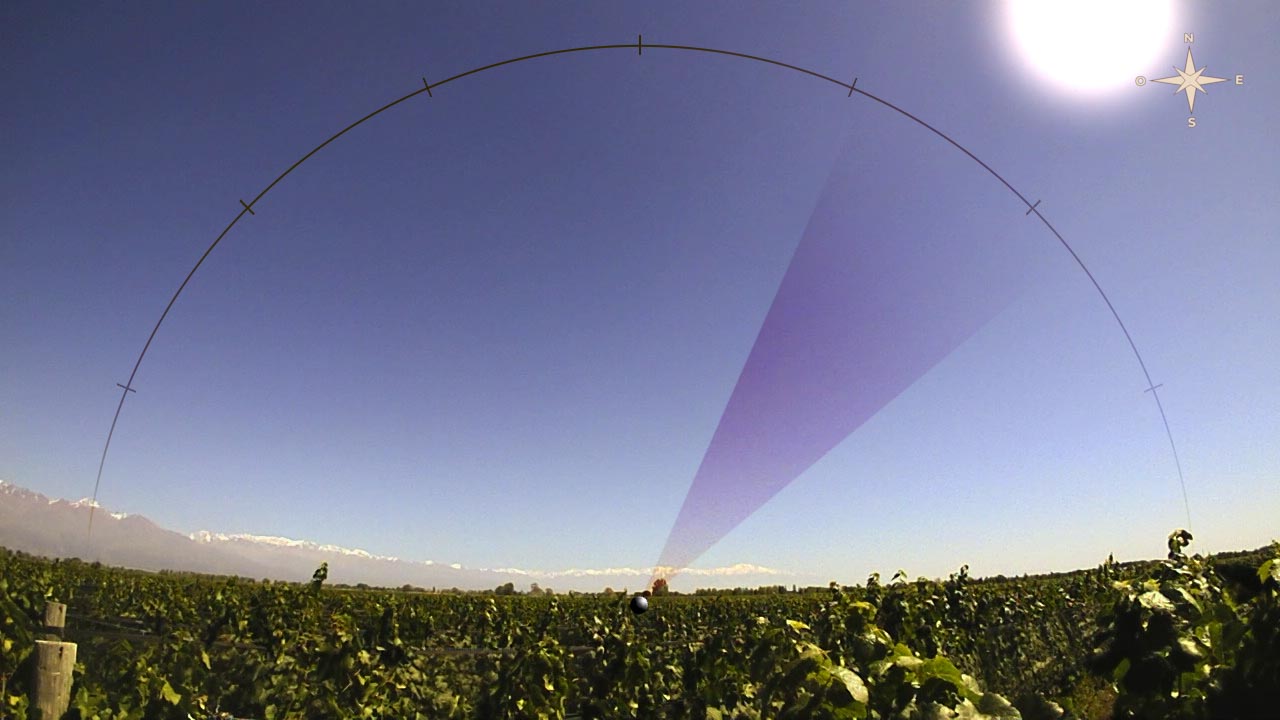
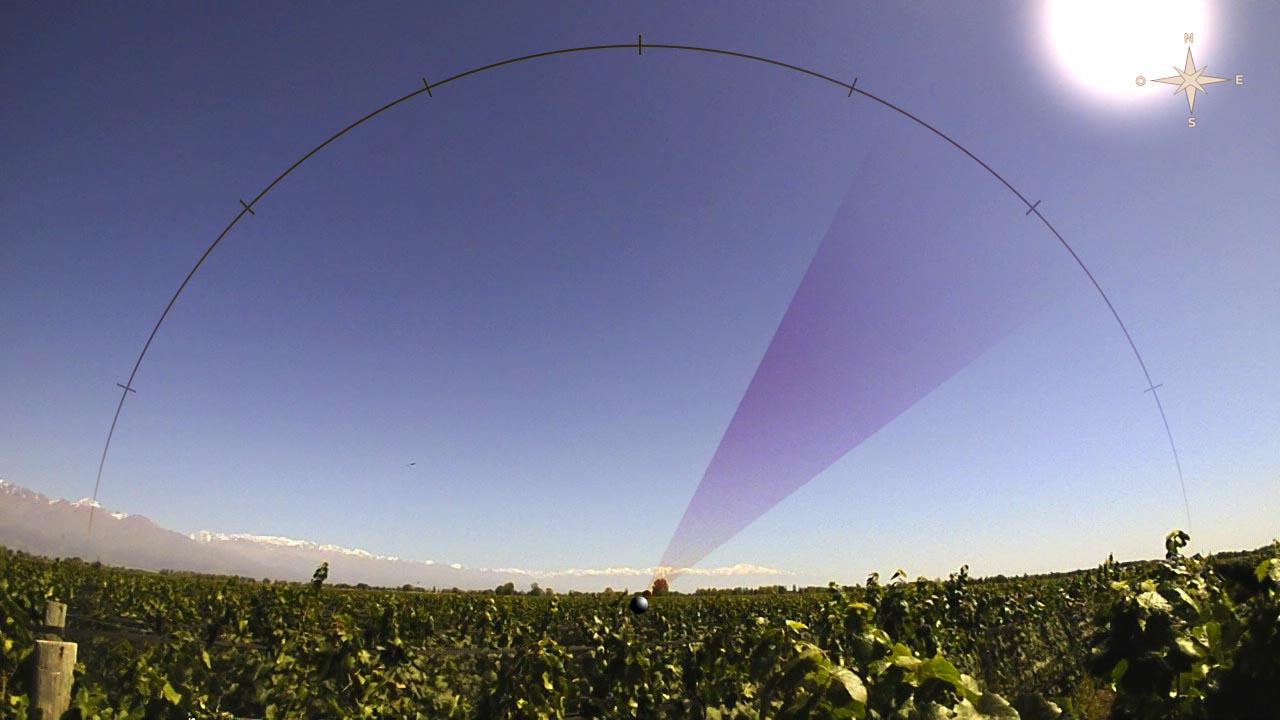
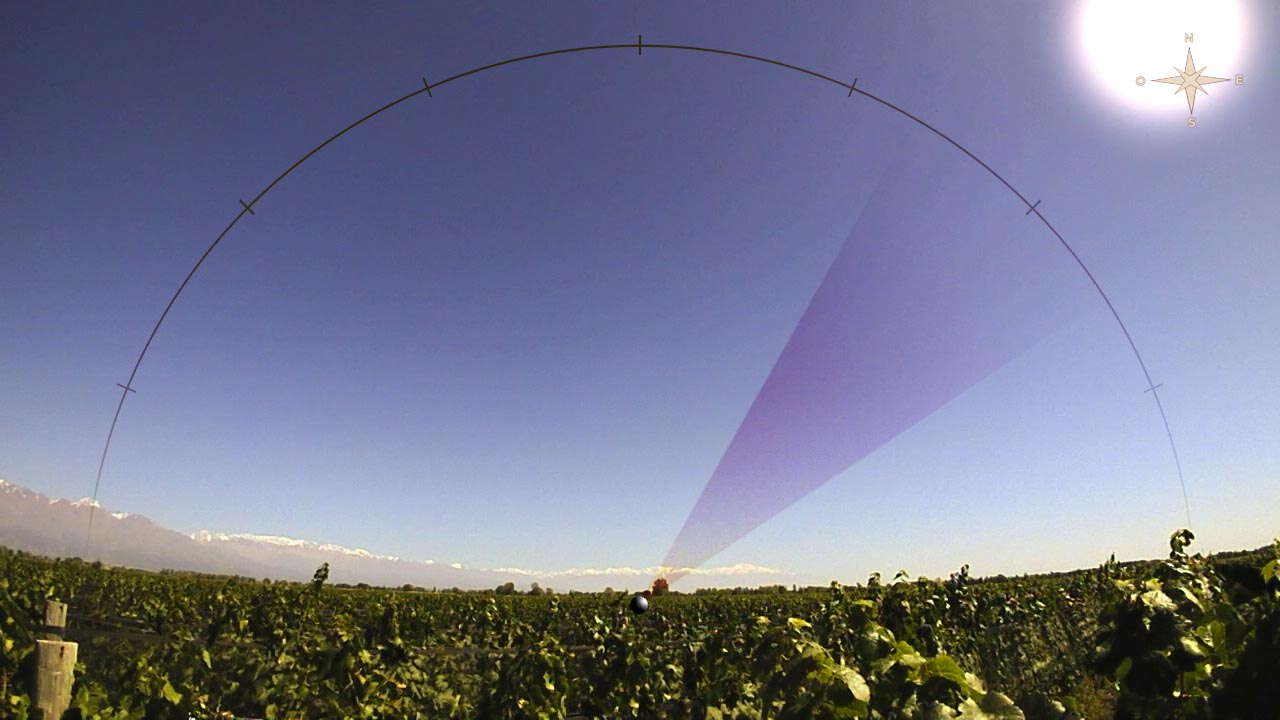

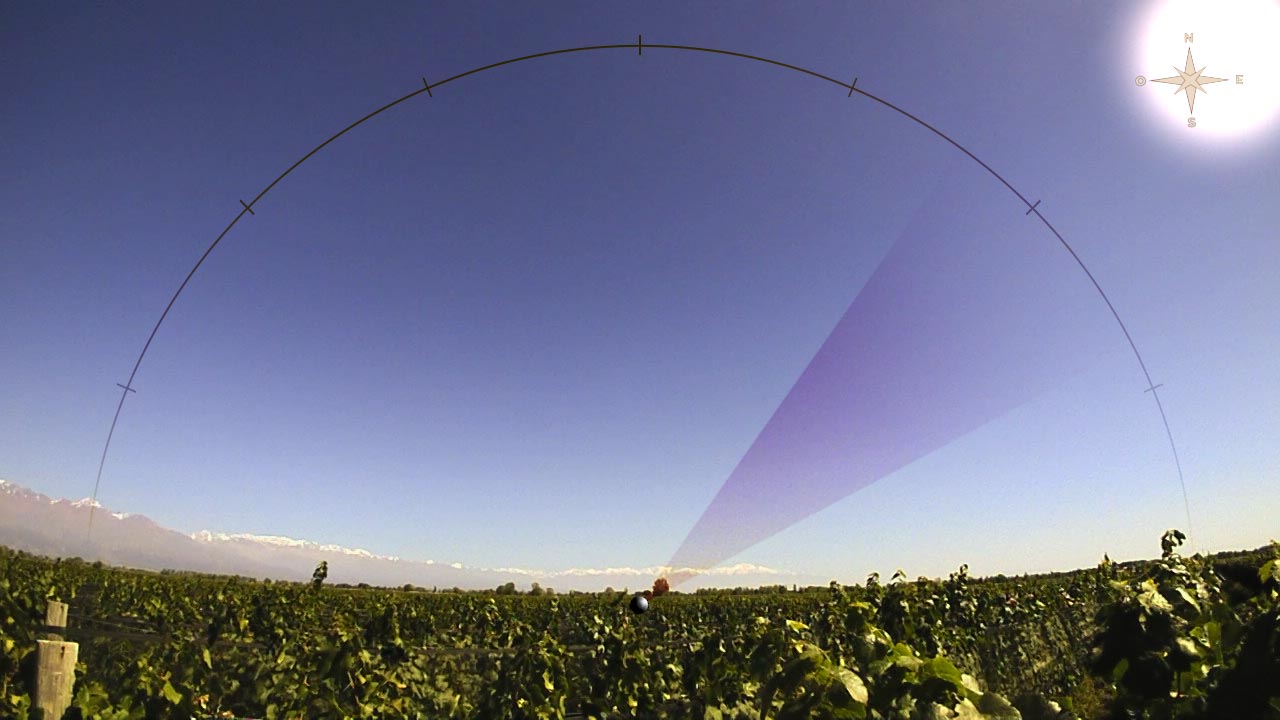
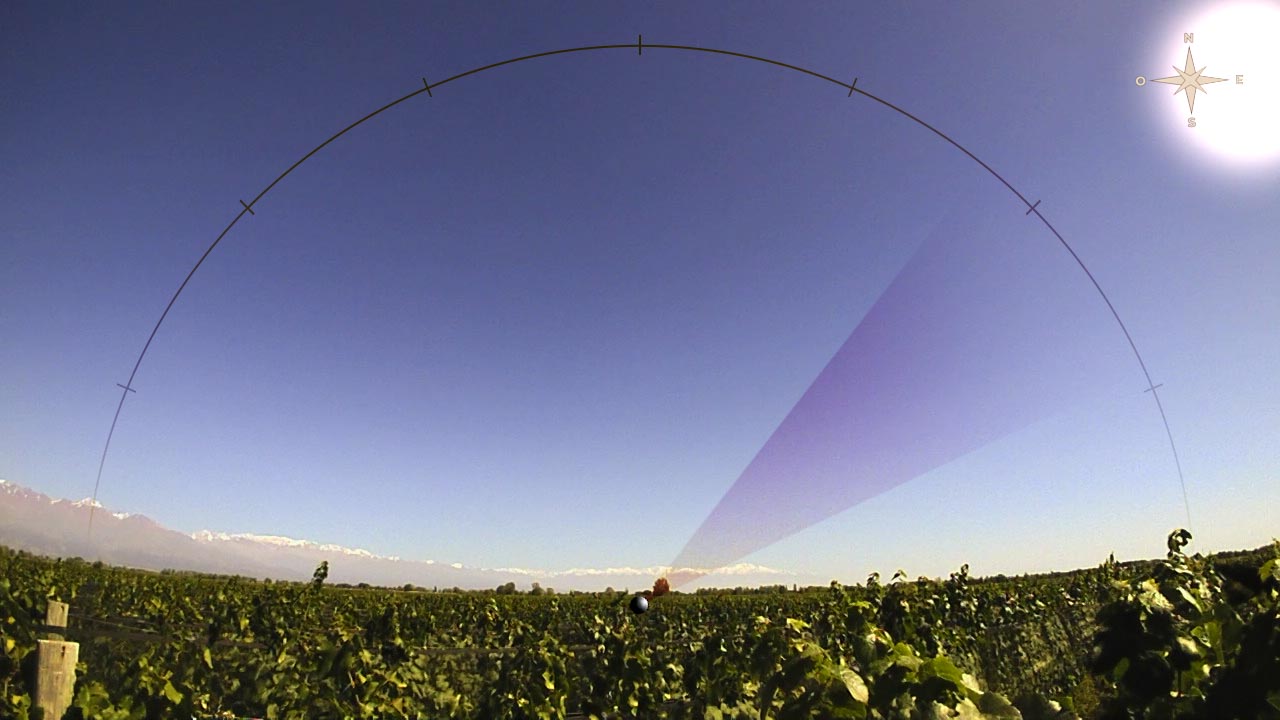
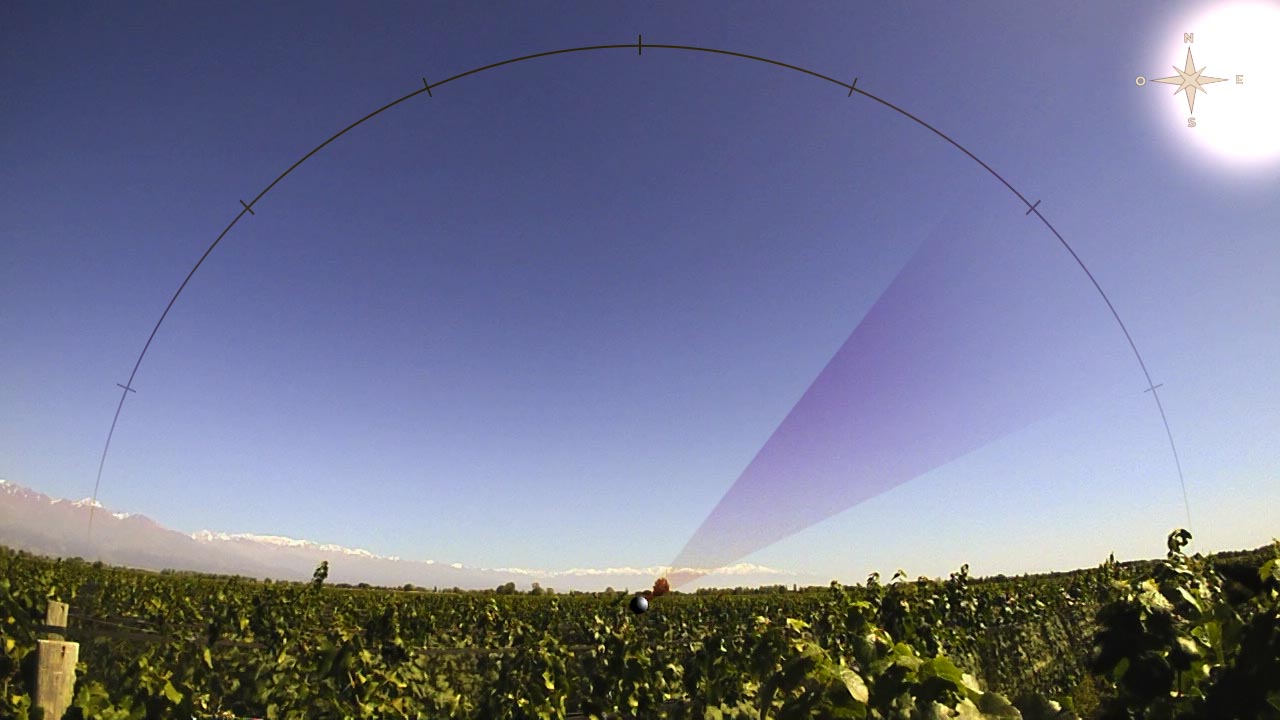
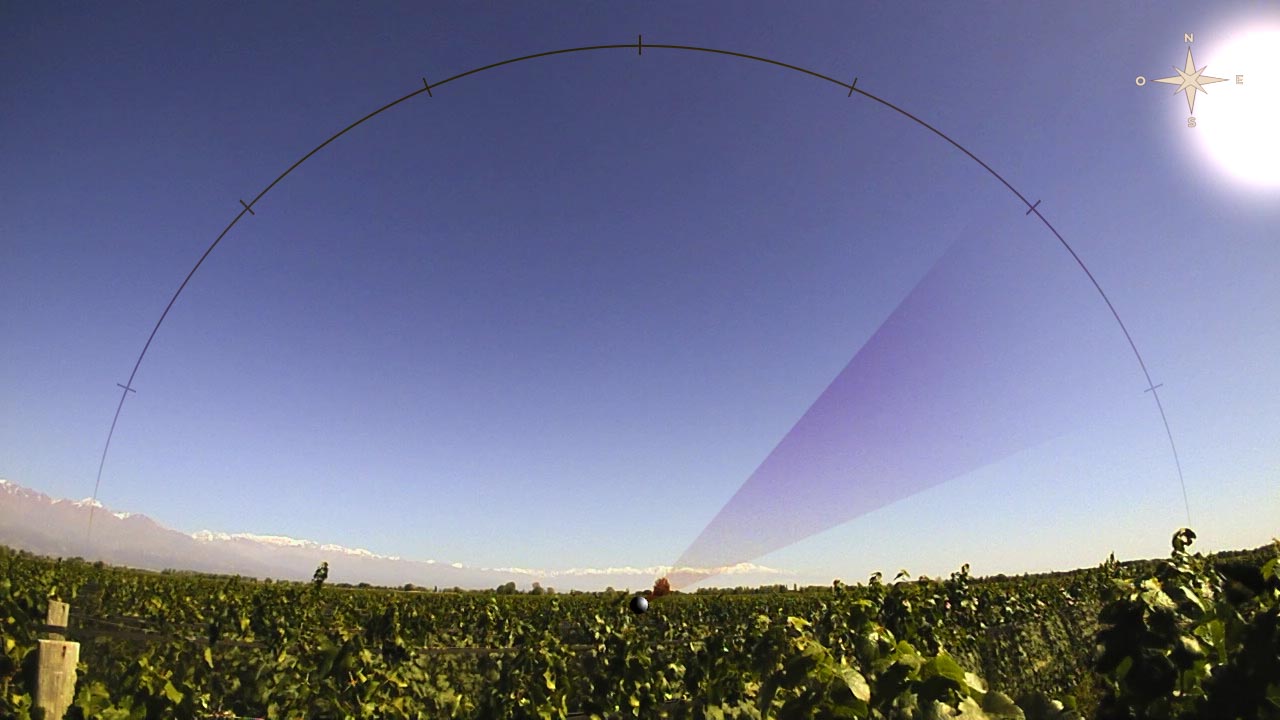
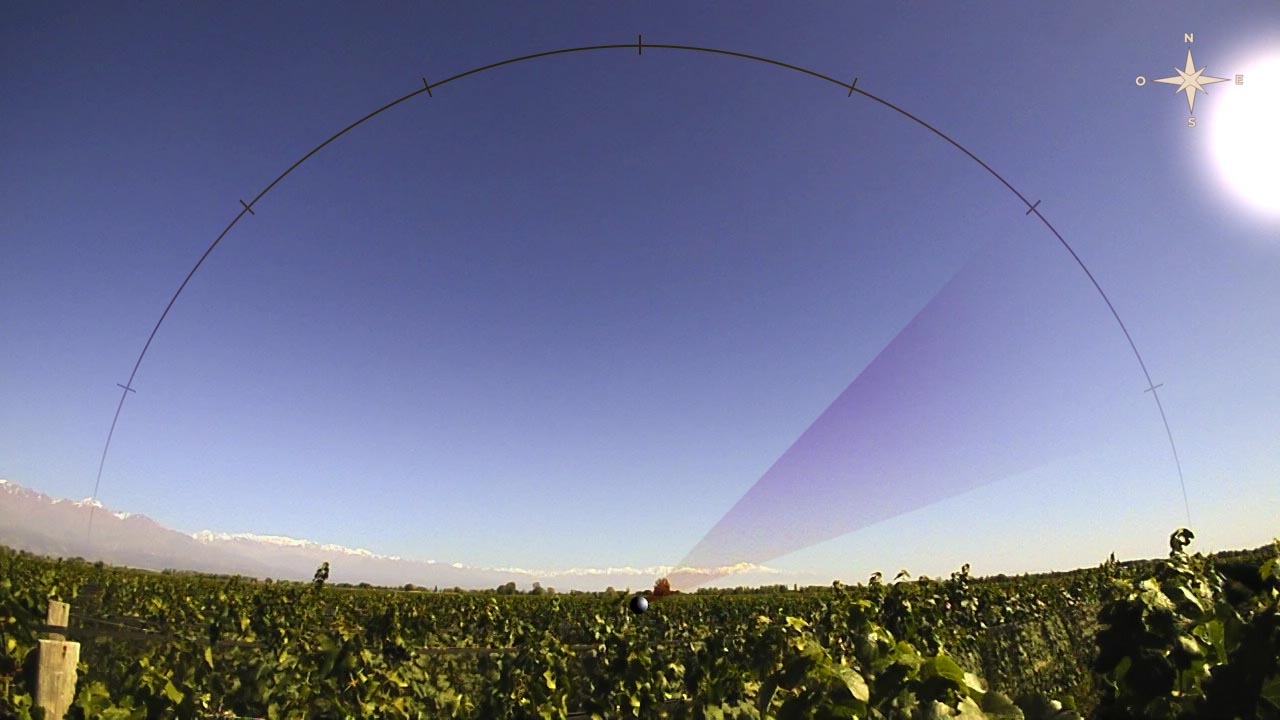
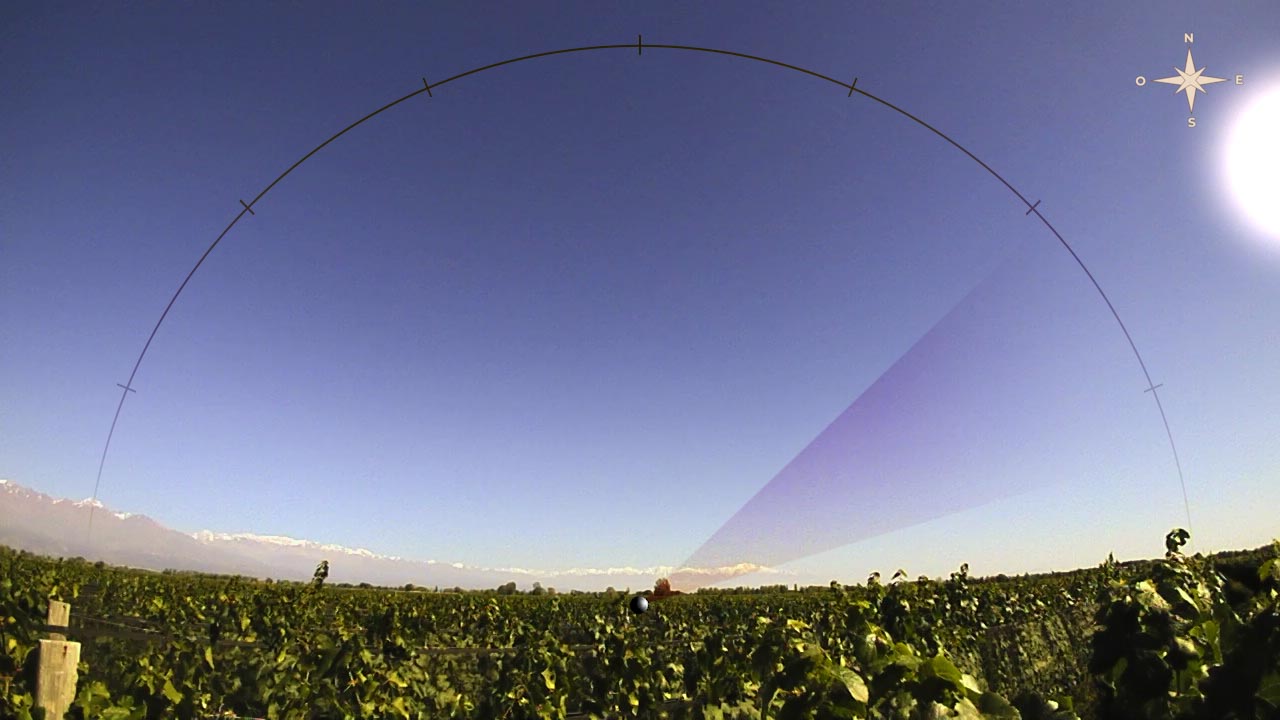
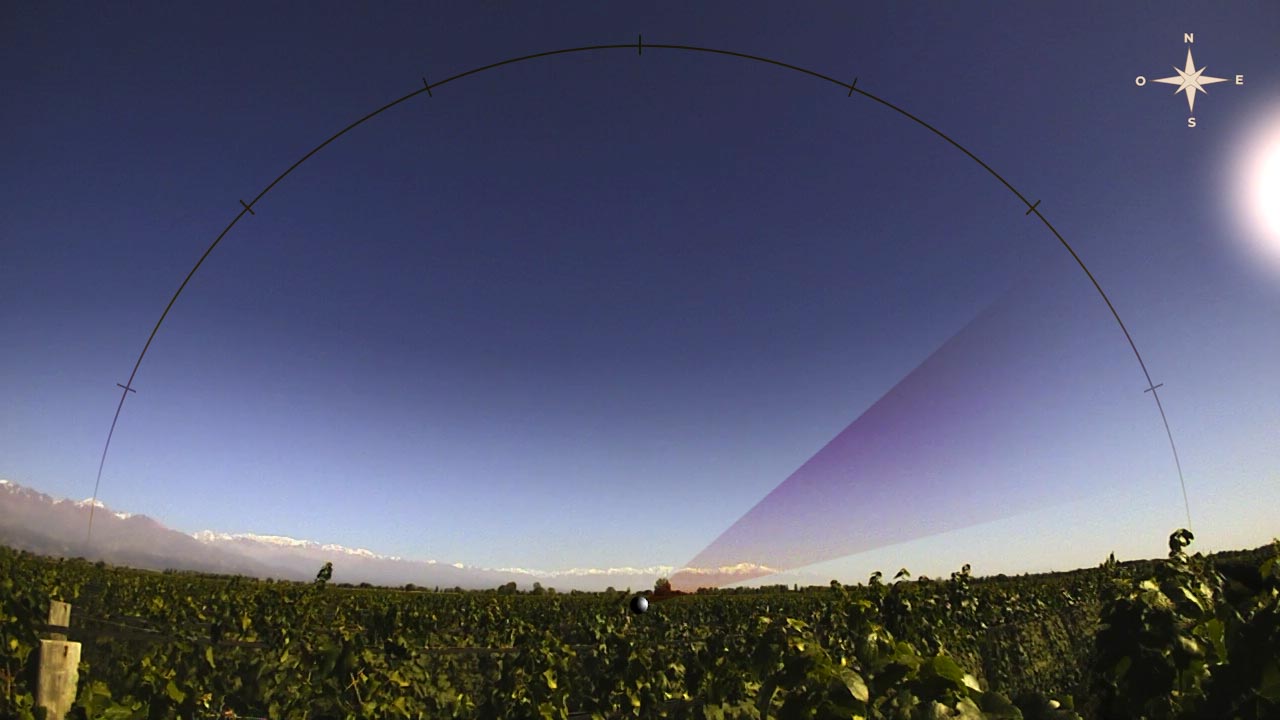
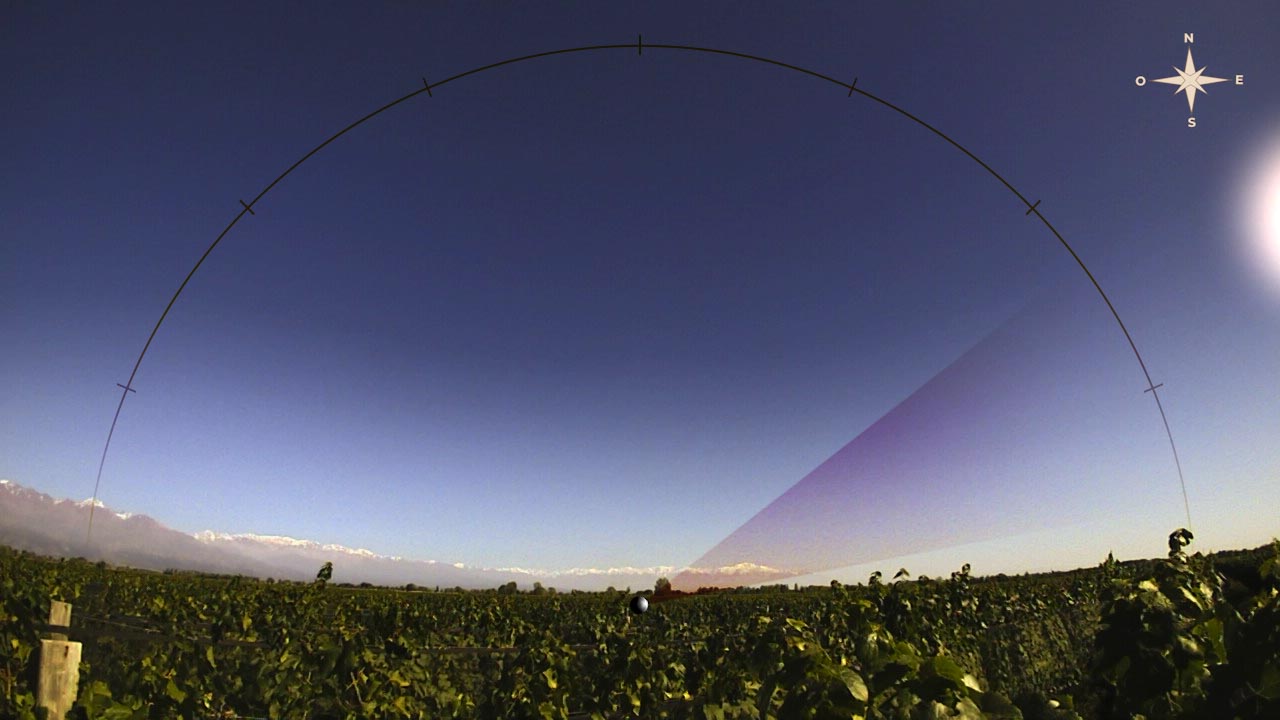
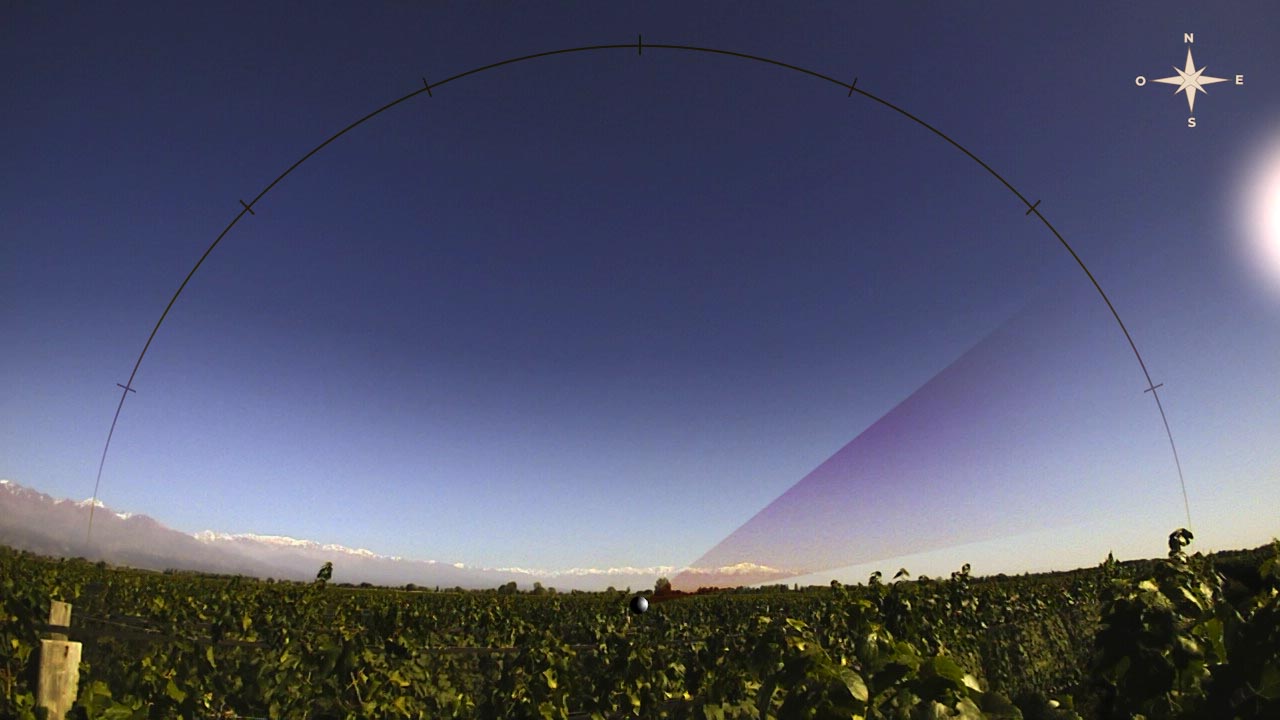
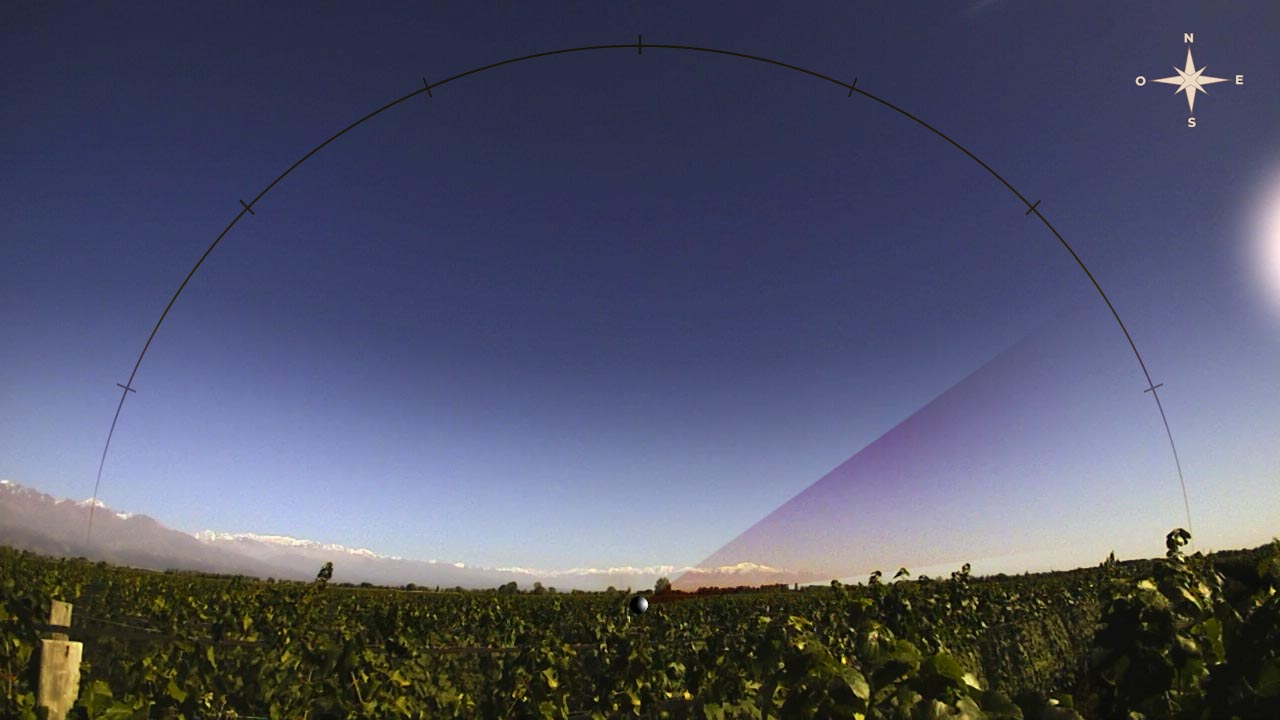
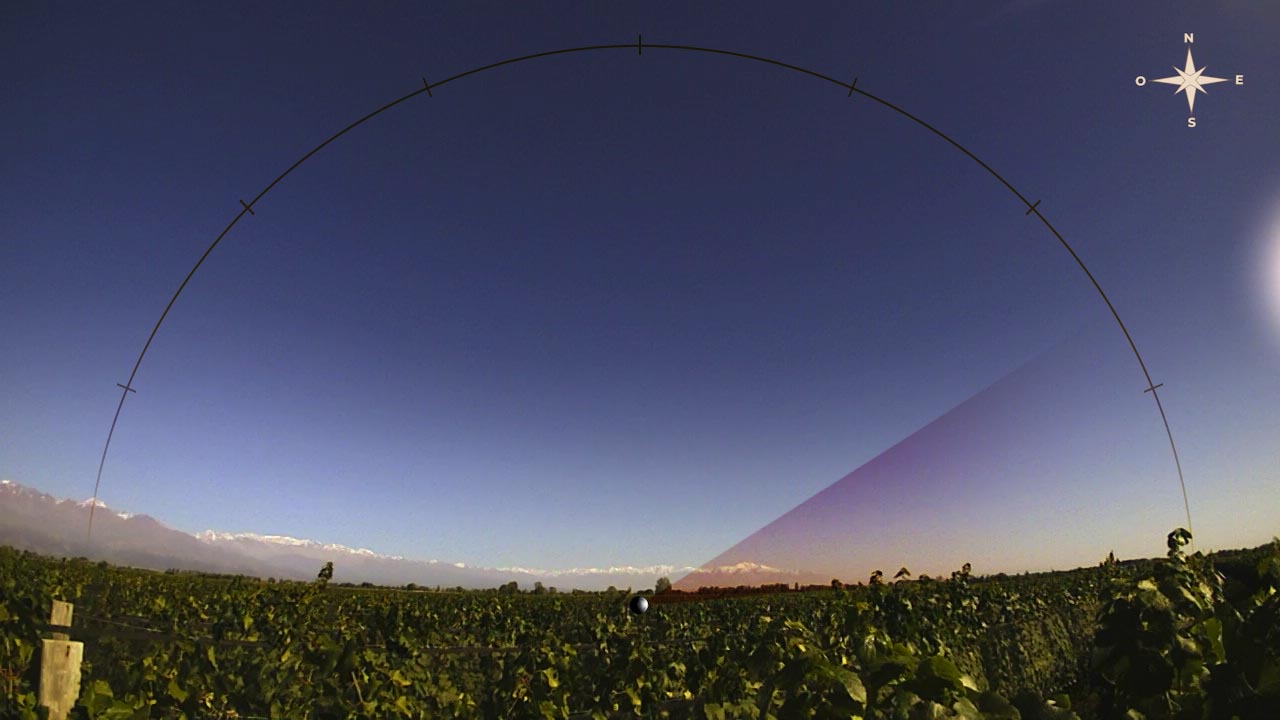
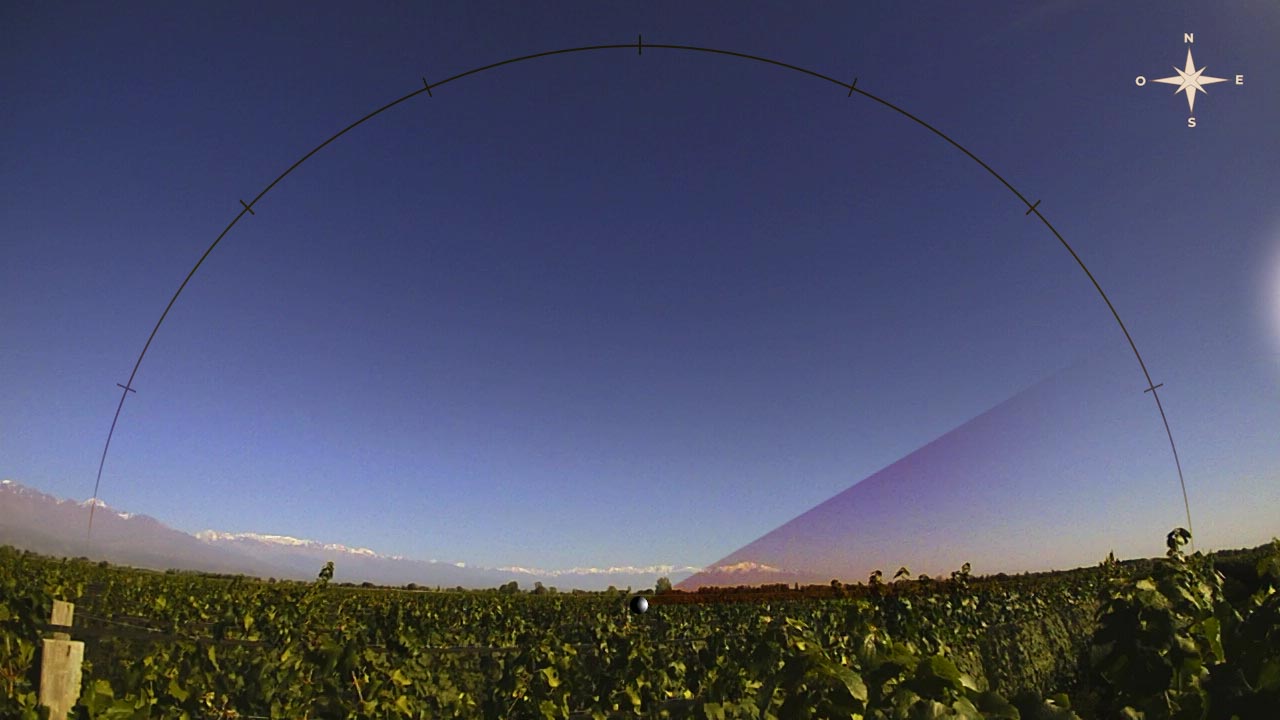

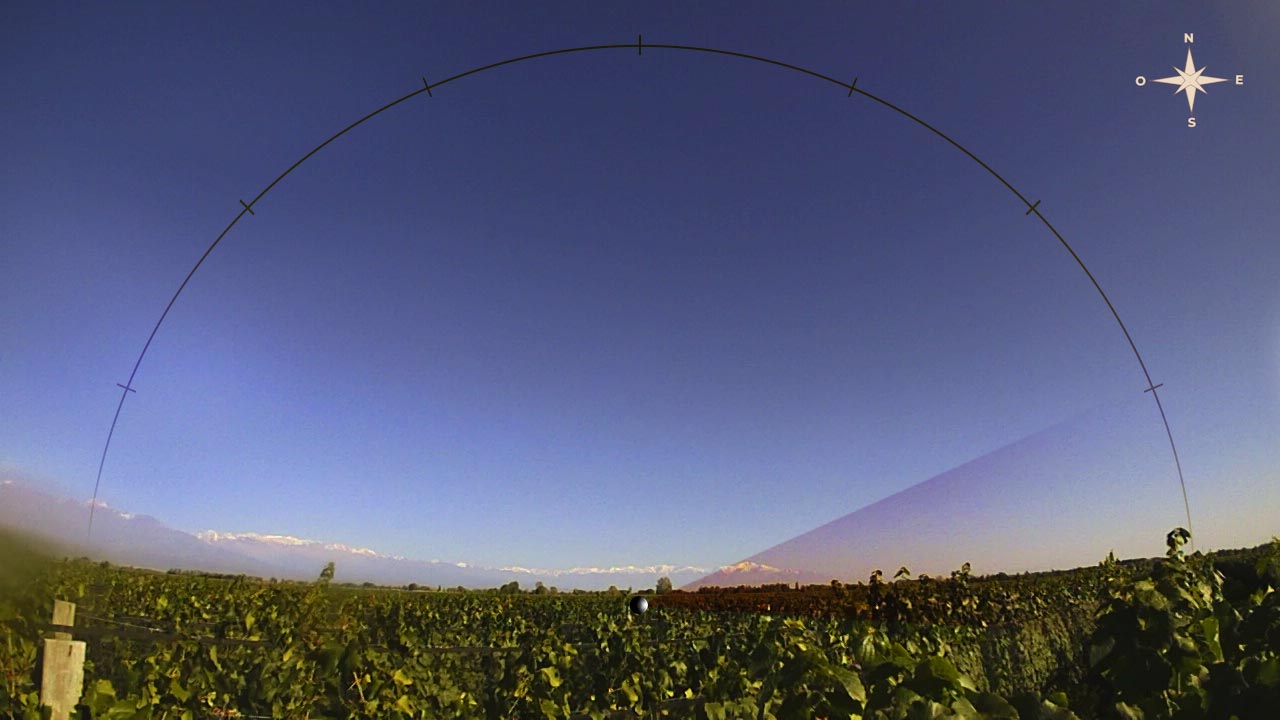

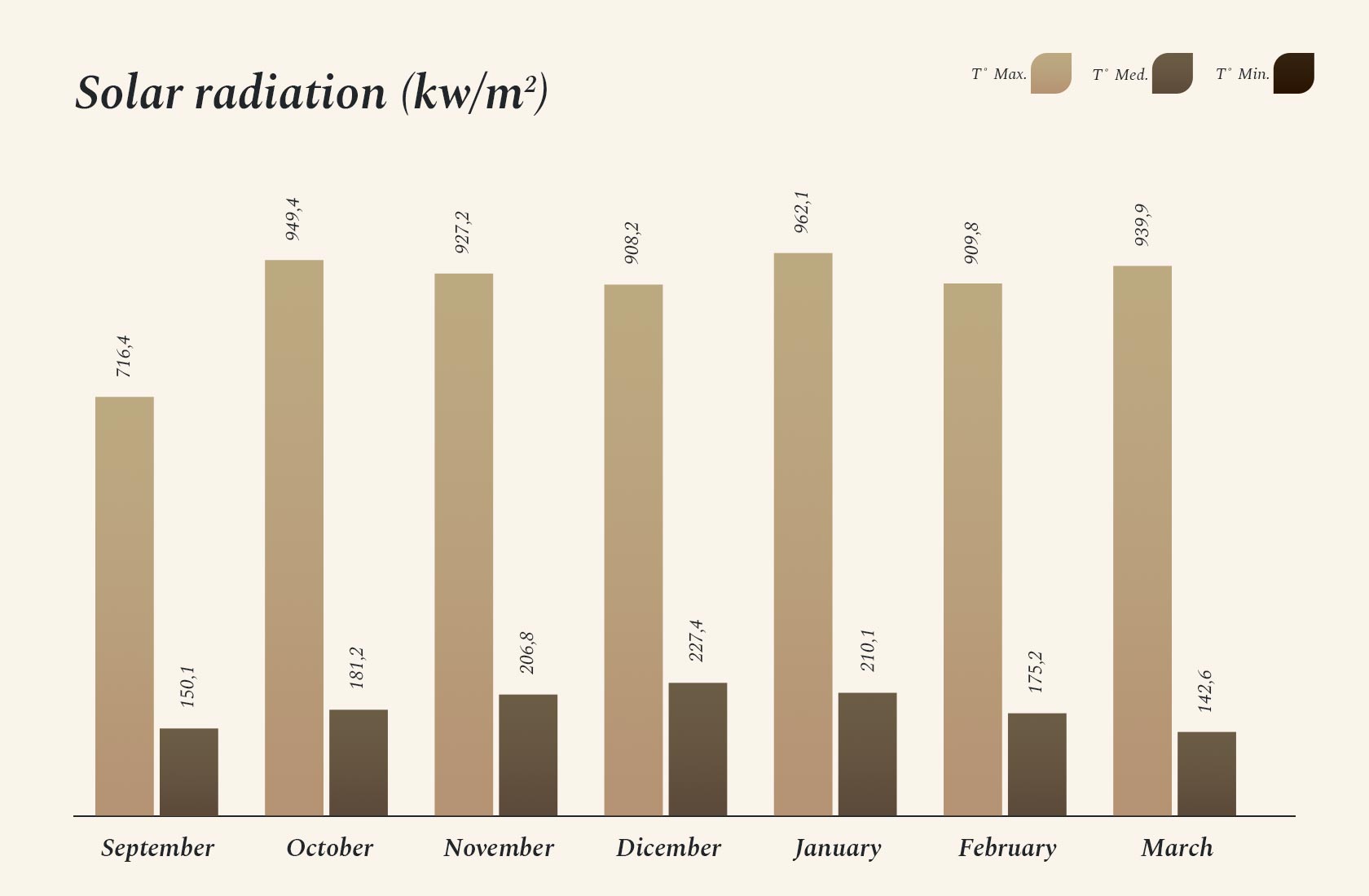
Heliophany
Our vsp-trained vineyards are planted north to south, with a slight inclination towards the east, which provides moderate solar radiation in the morning for the clusters exposed on the east side, generating optimal berry ripening..
During the strongest hours of radiation, when the sun is directly above, the leaves of the canopy provide shade to the clusters, avoiding sunburn that would result in flavours and compounds that are undesirable in a wine with a fresh profile..
In the afternoons, the solar radiation of the clusters exposed on the west side comes from more moderate rays, leading to slow ripening that produces high-quality polyphenolic compounds..
Temperatures in the Valley
Although each year is unique, our estate has an ideal temperature range that ensures the berries ripen slowly, resulting in high-quality musts for winemaking..
The maximum temperatures during ripening do not exceed 34°C, making this a cool-climate region..
The average temperatures do not exceed 21°C, resulting in a slow qualitative development of the polyphenolic compounds (colour and tannins). This is later reflected in our wines as vivacious colour and fine-grained, elegant tannic structures..
Low night-time temperatures facilitate plant respiration, optimizing the metabolism of the acids needed for high-quality wines..
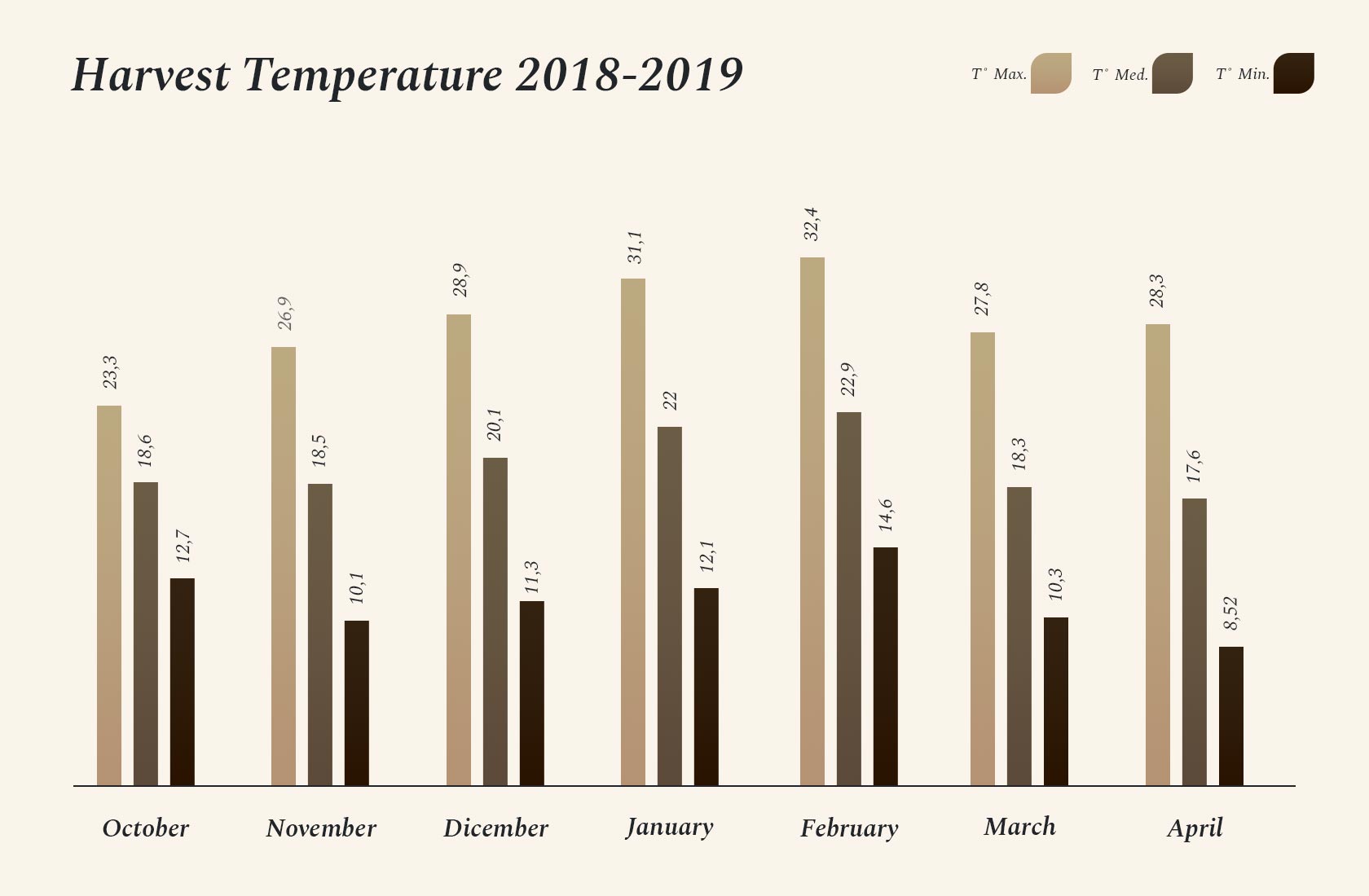

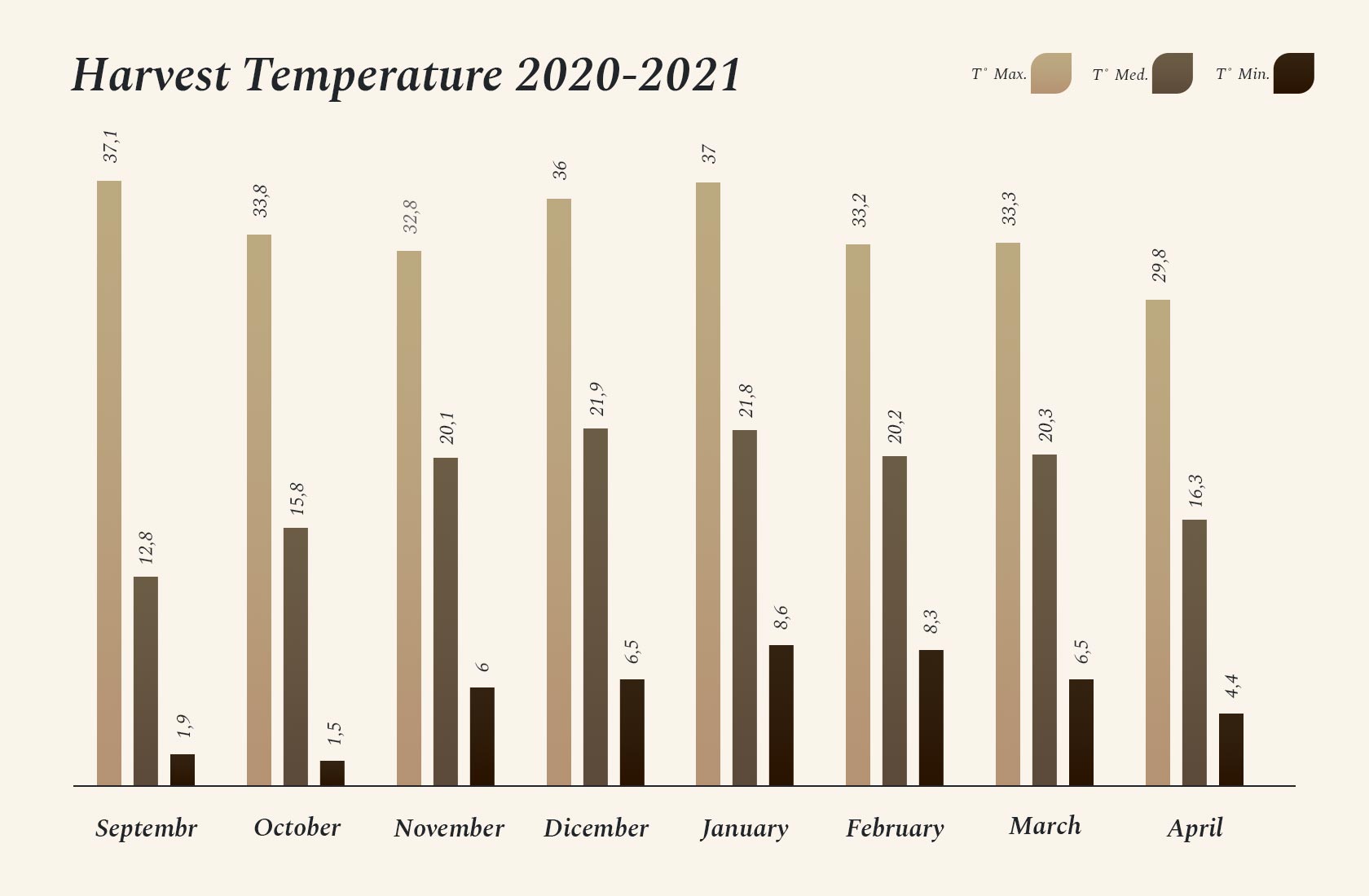
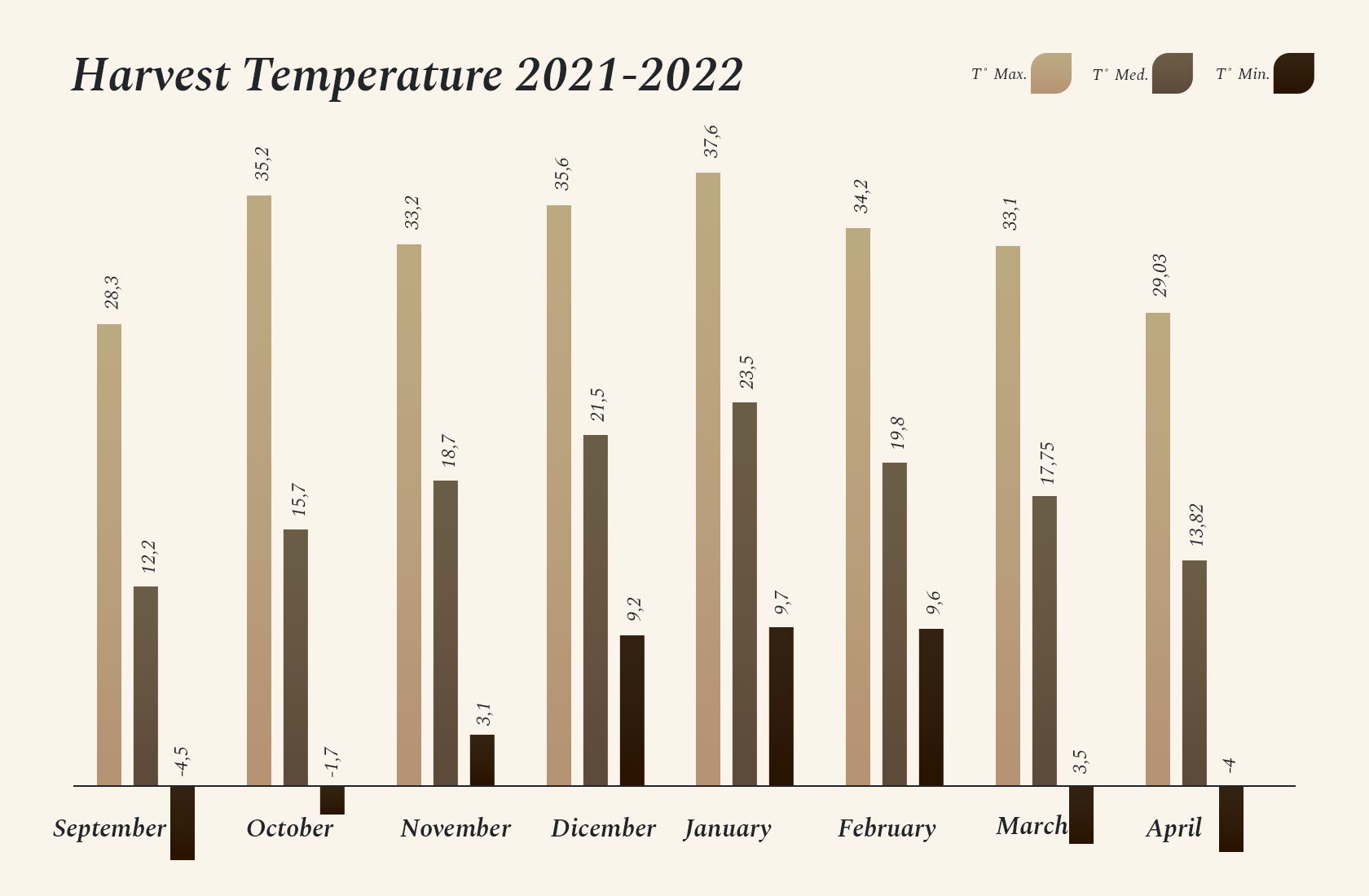
Vegetative Cycles / Phenological Stages
In the valley, every variety behaves differently during its vegetative cycle and this diversity is even greater when compared to other areas in Mendoza or Argentina..
Each year is different, influenced by factors such as temperature, climate, humidity, water availability and solar radiation. These factors are all fundamental to good plant development..
